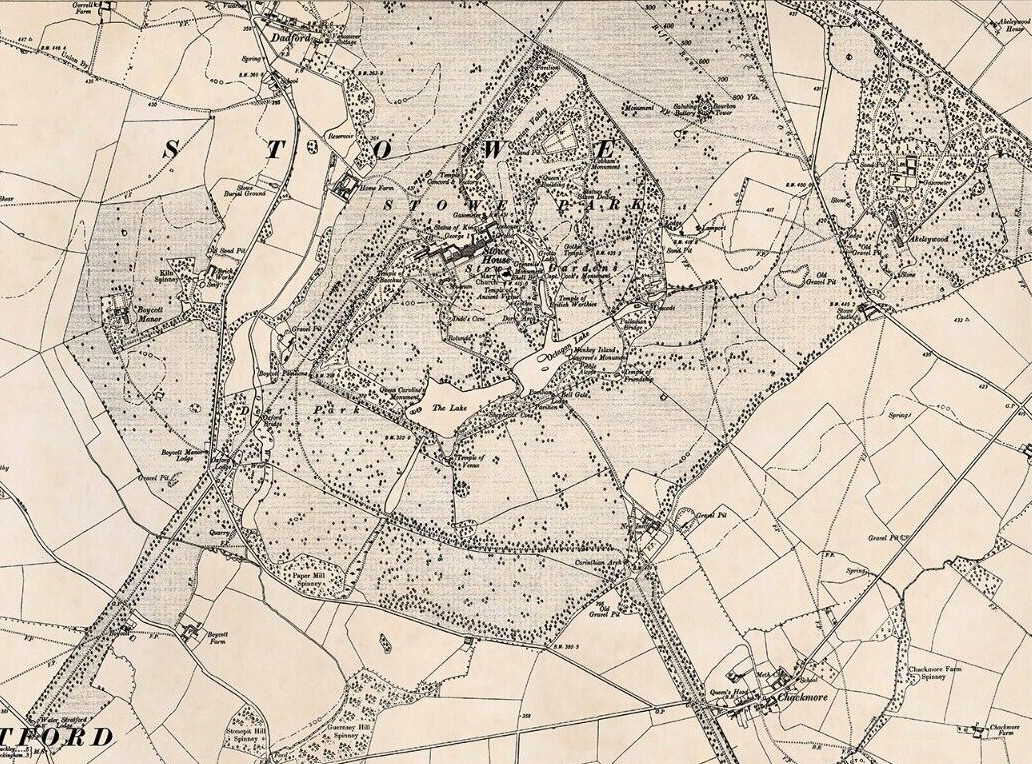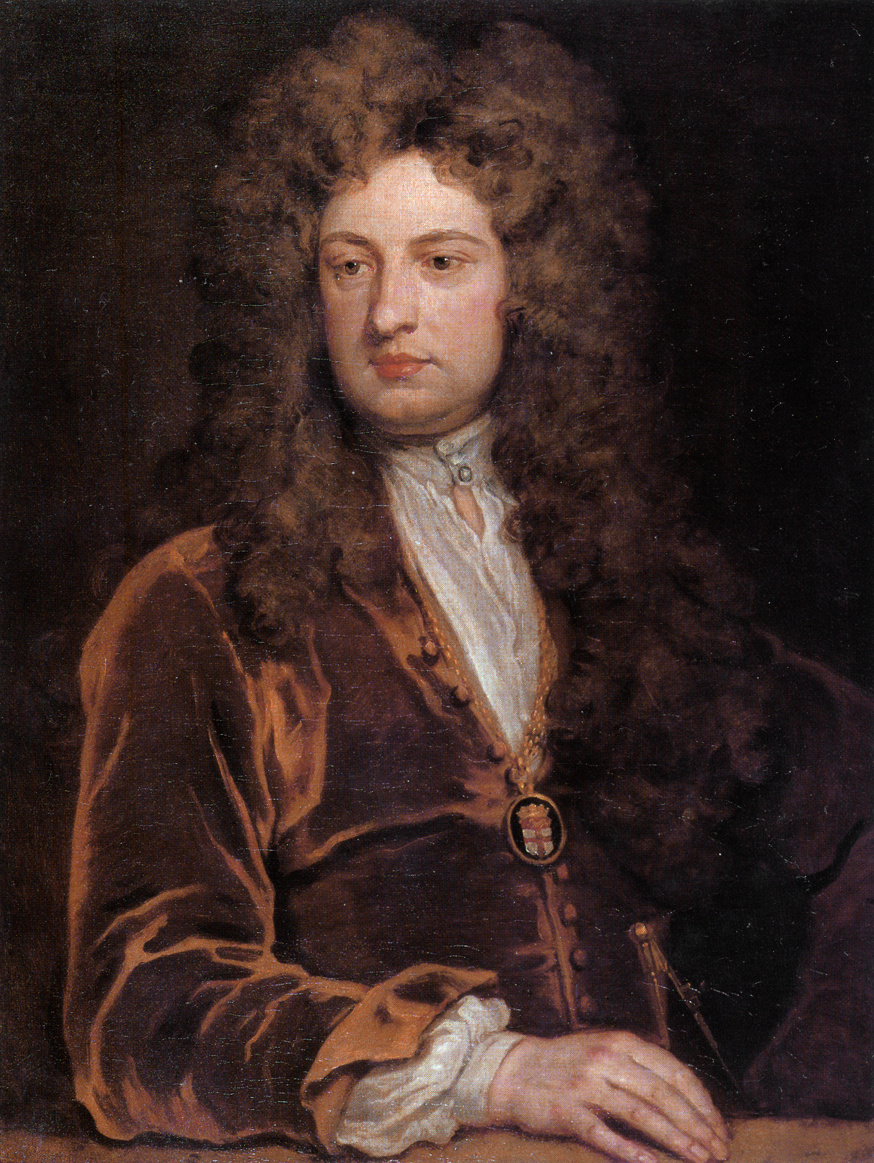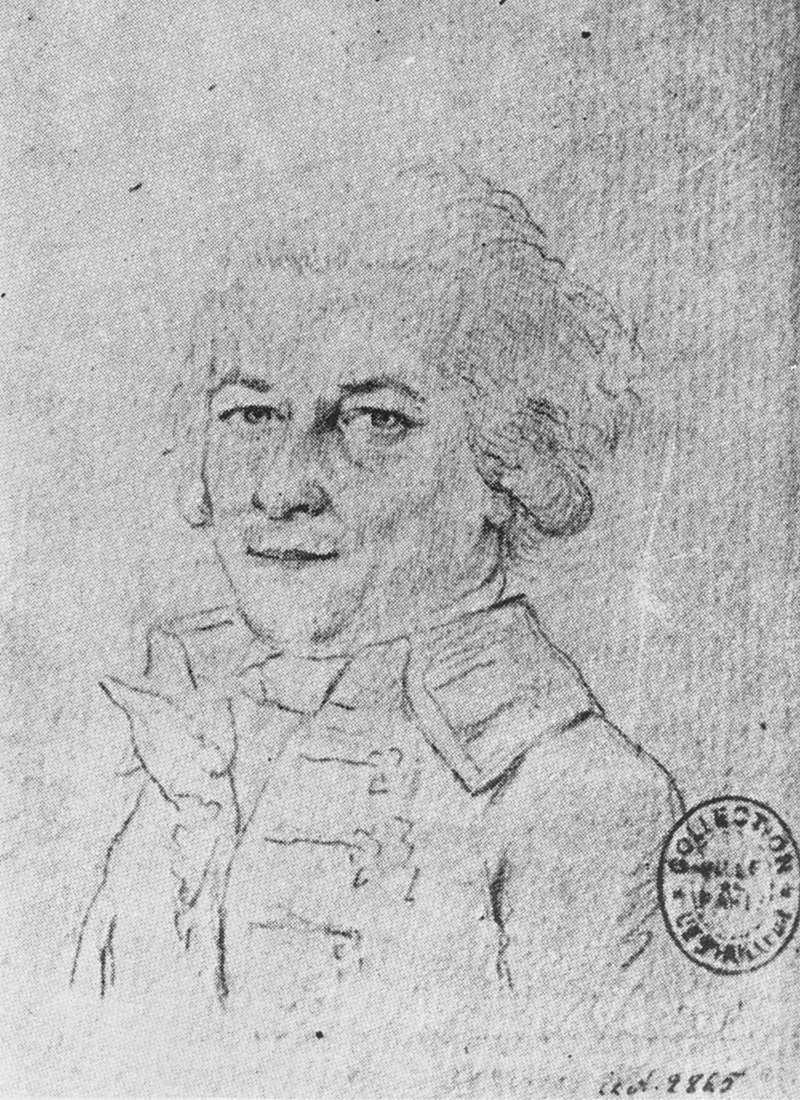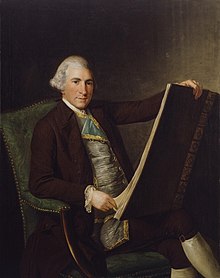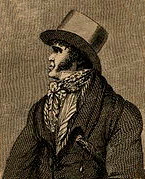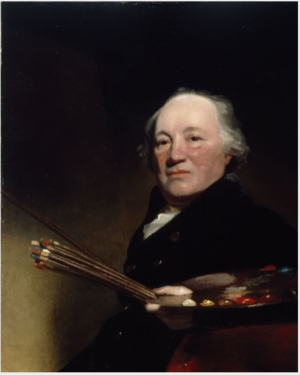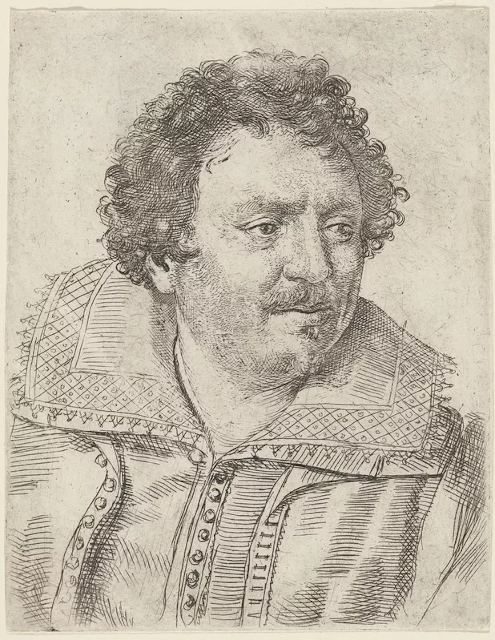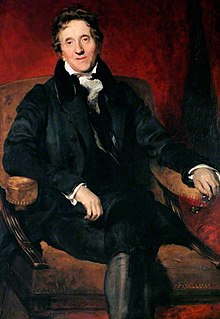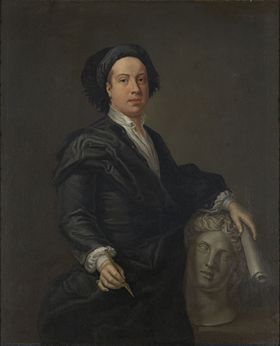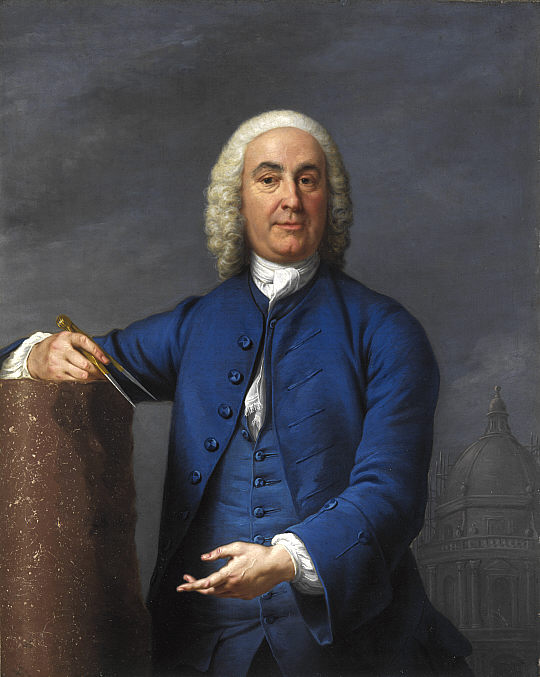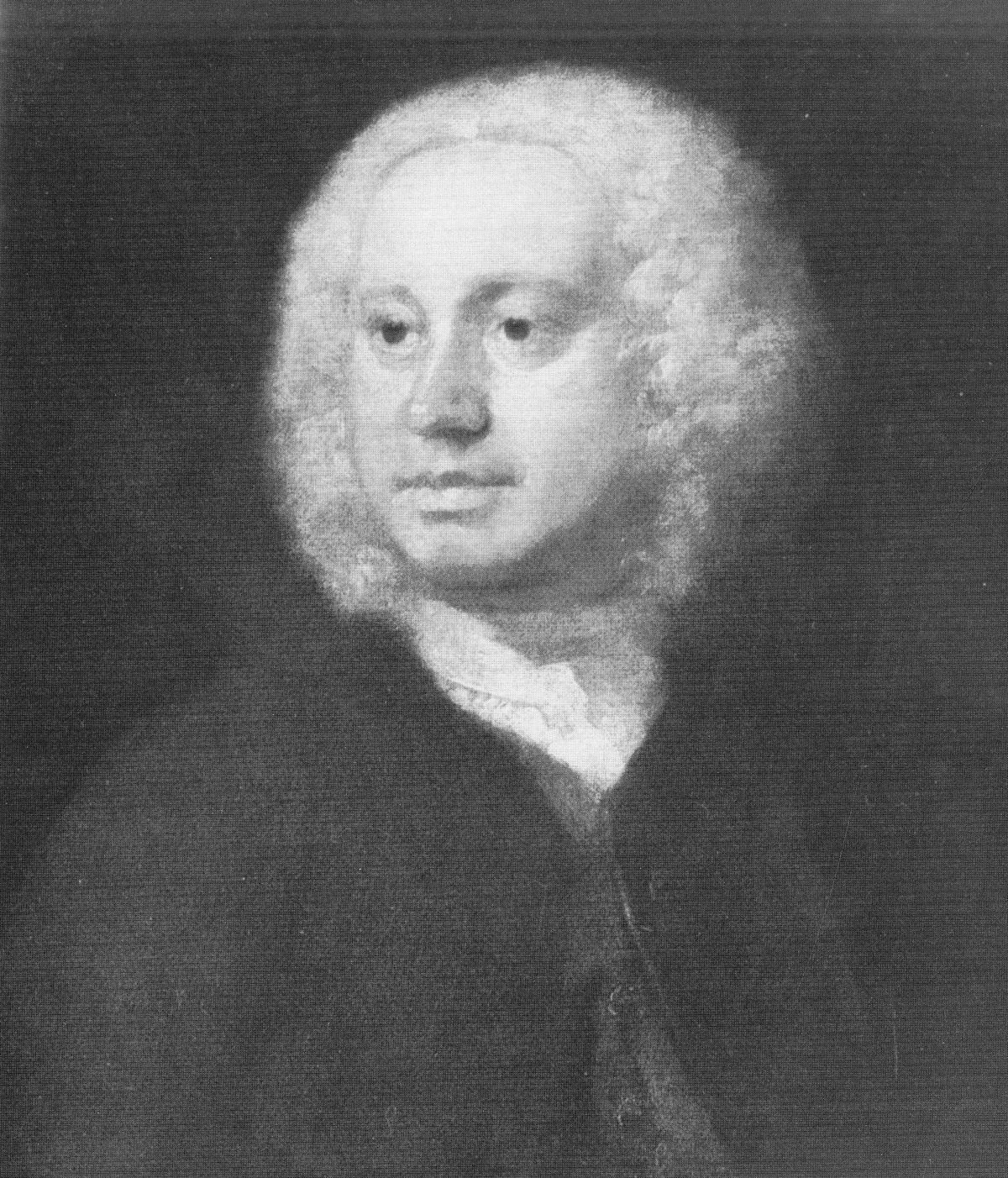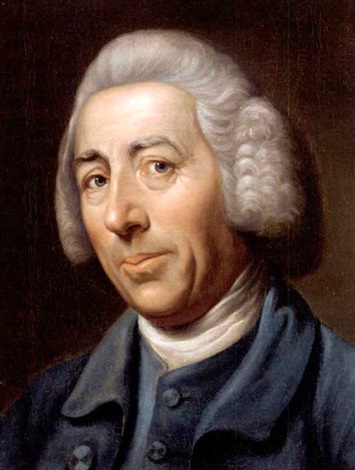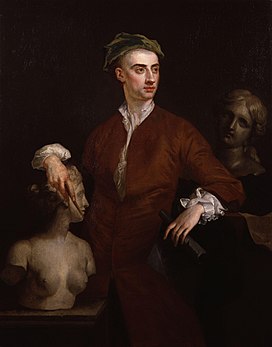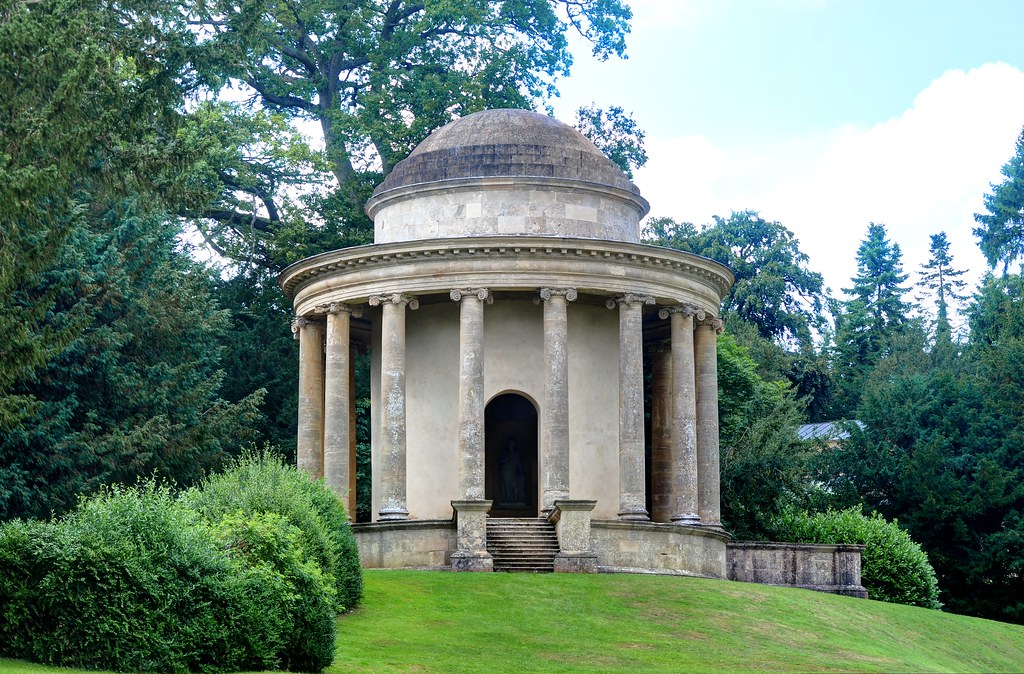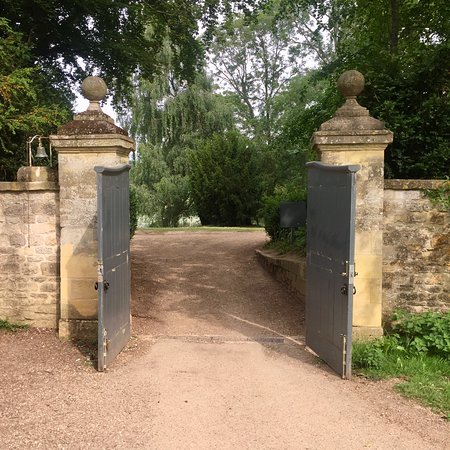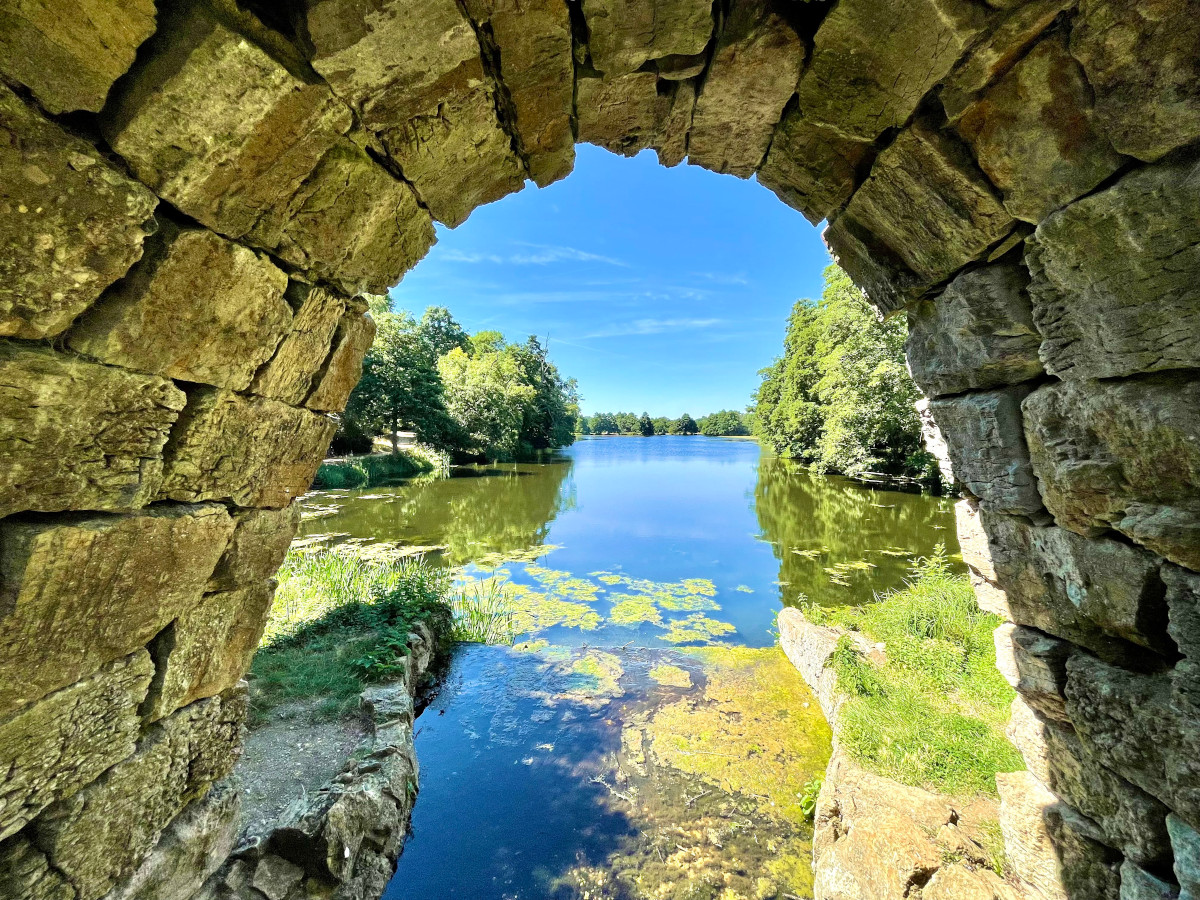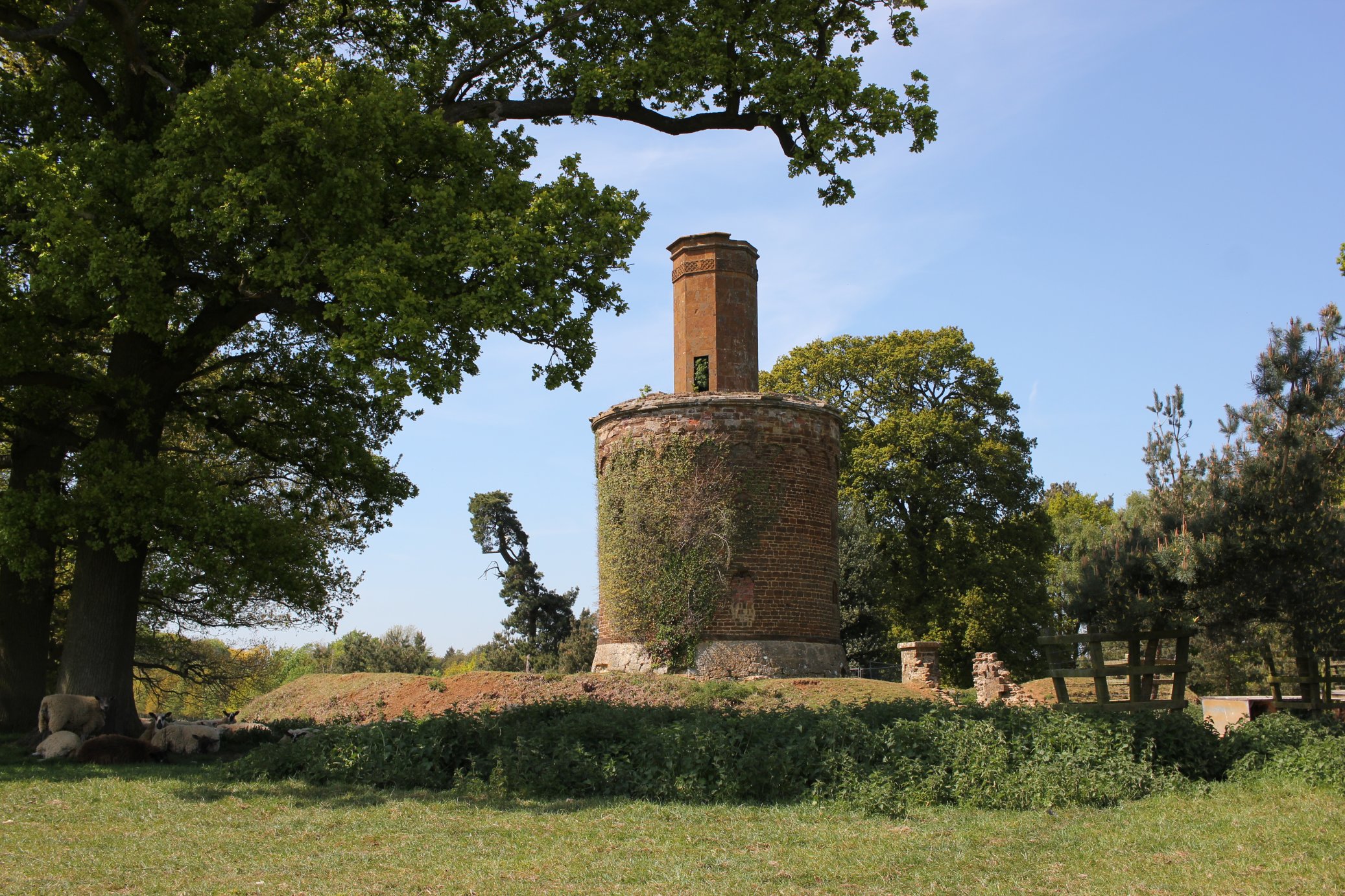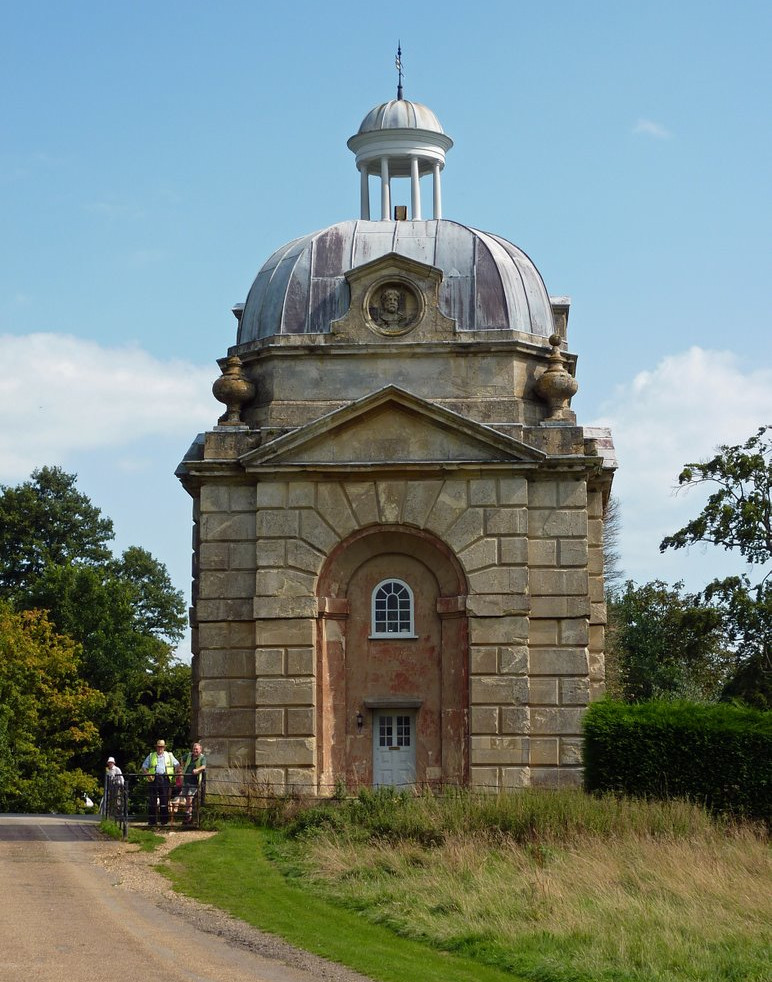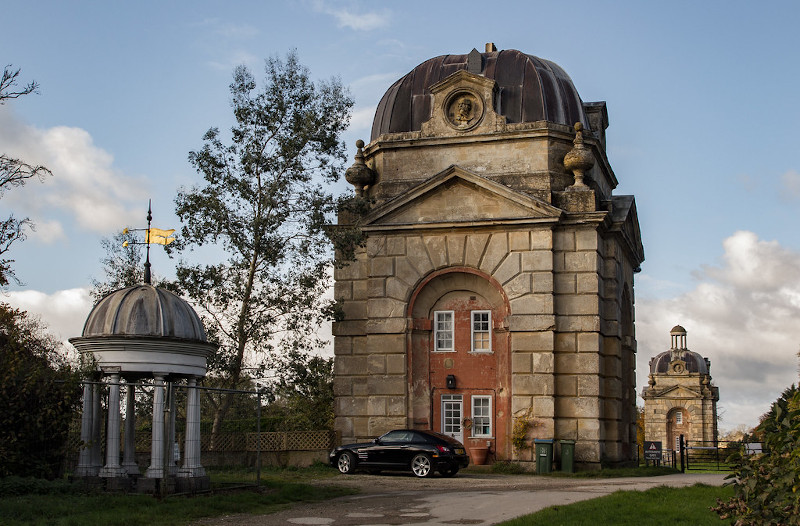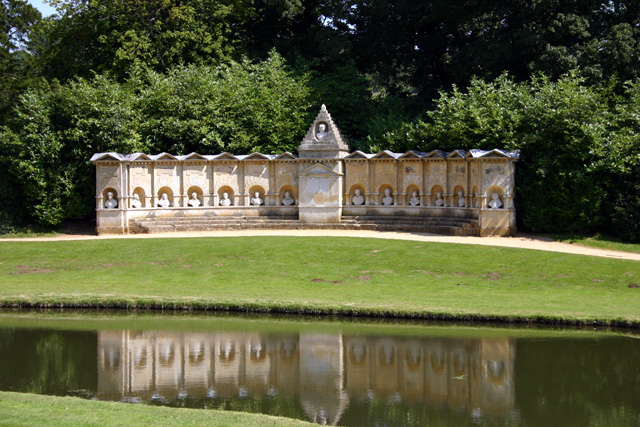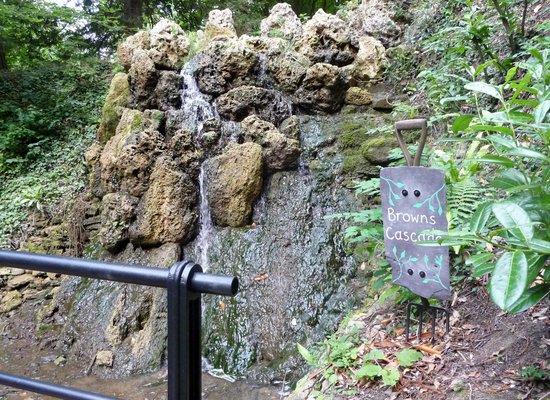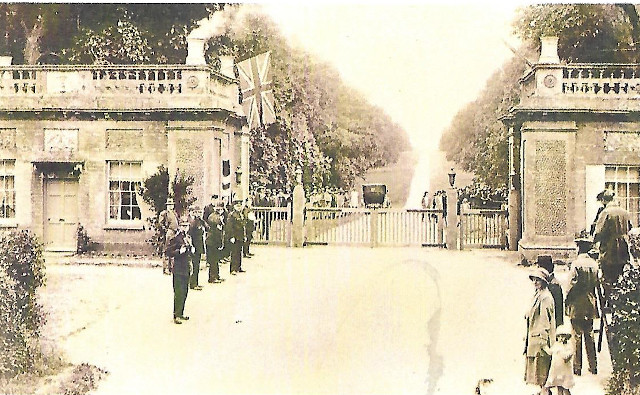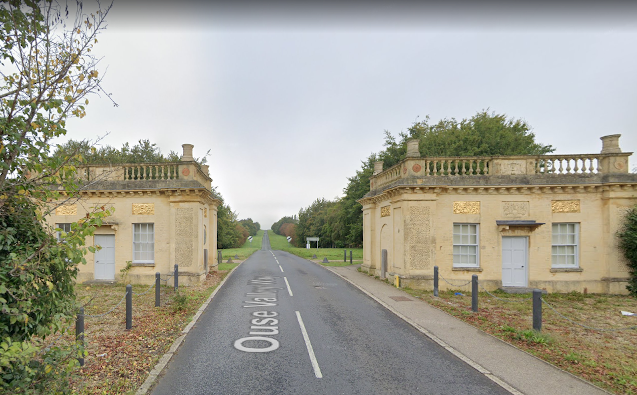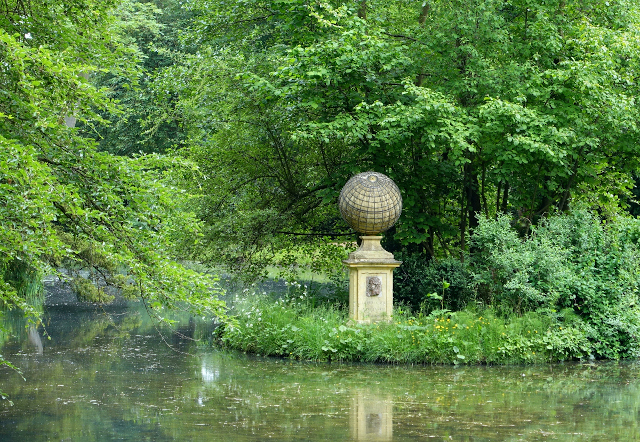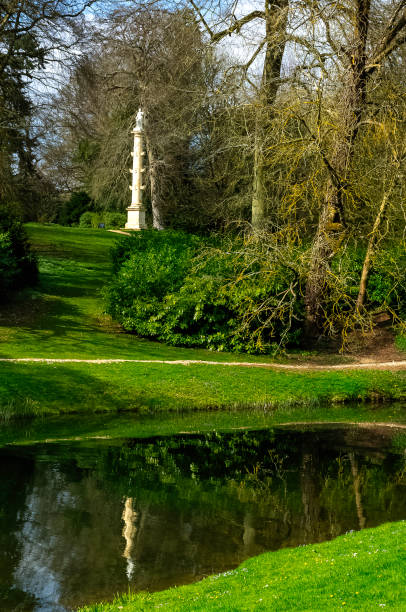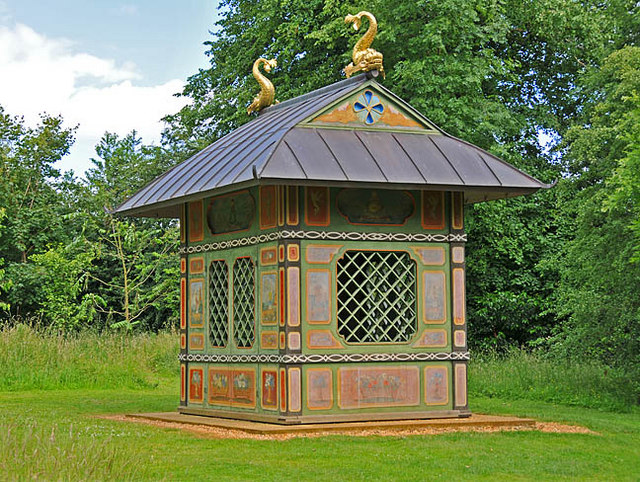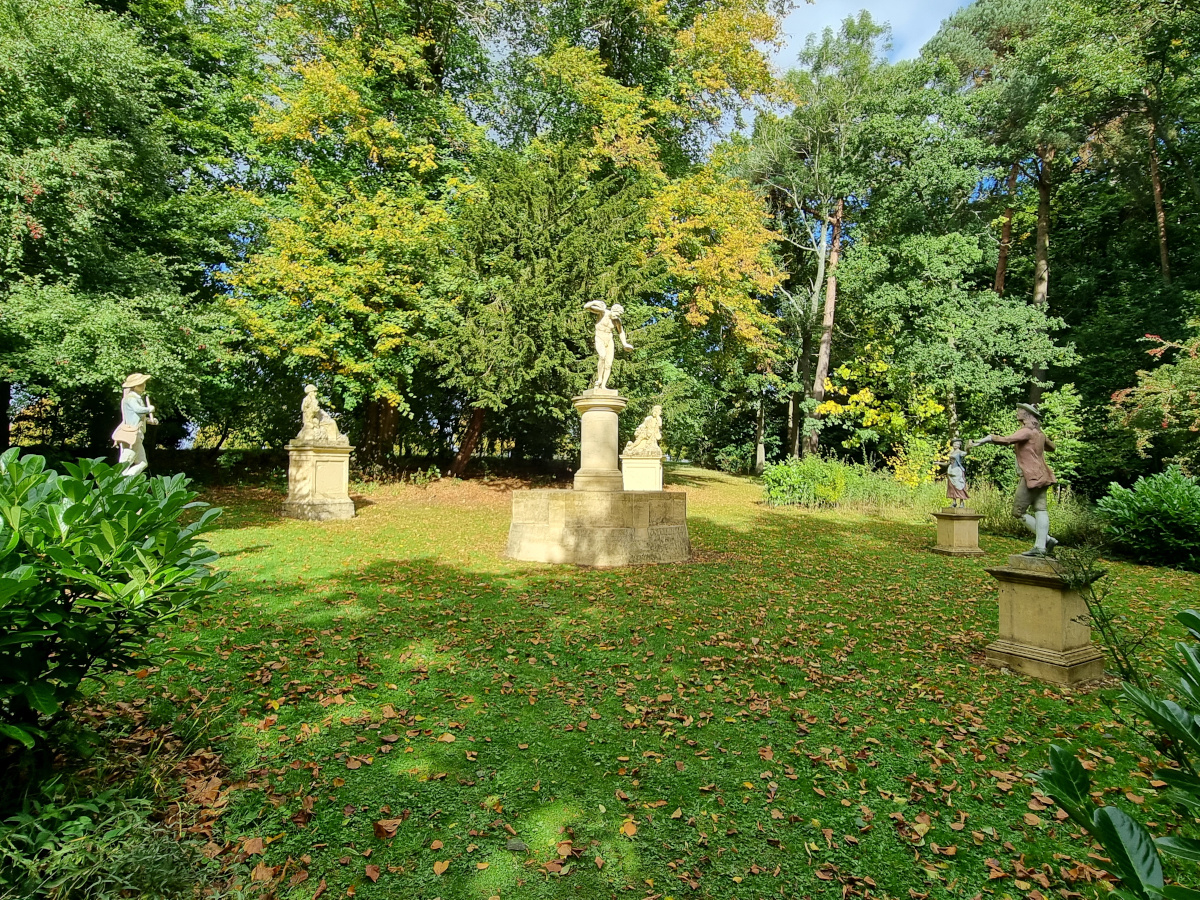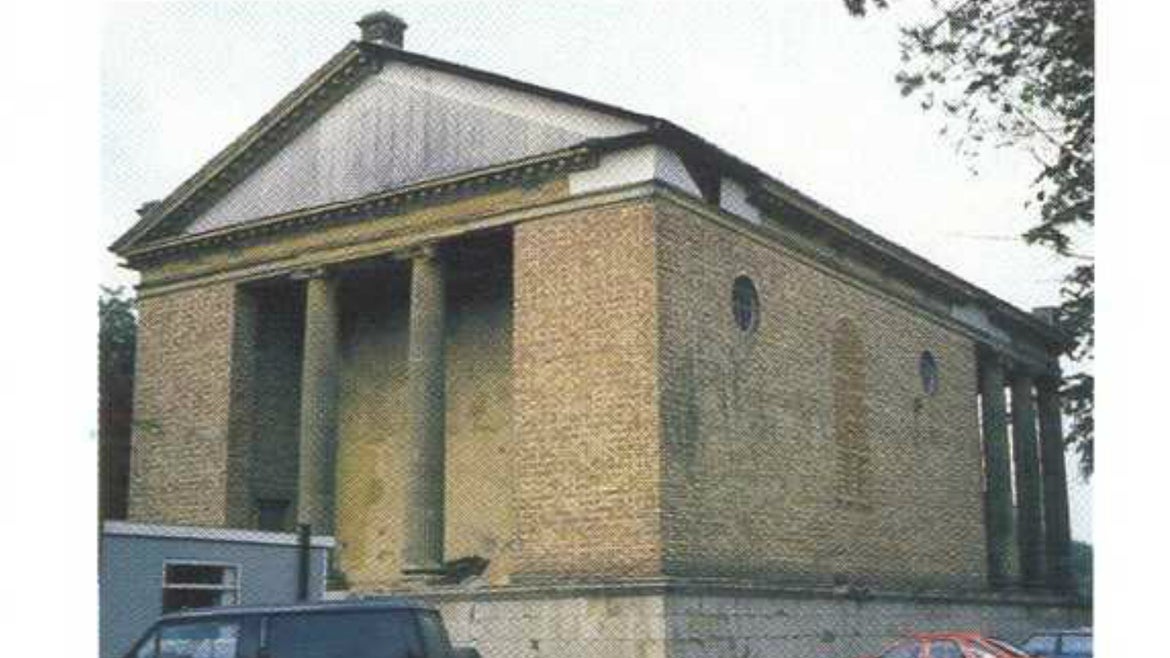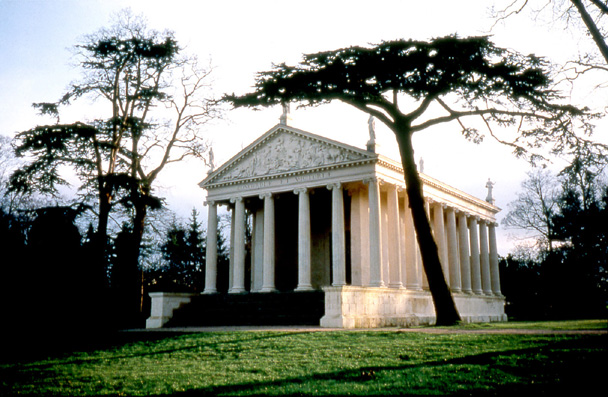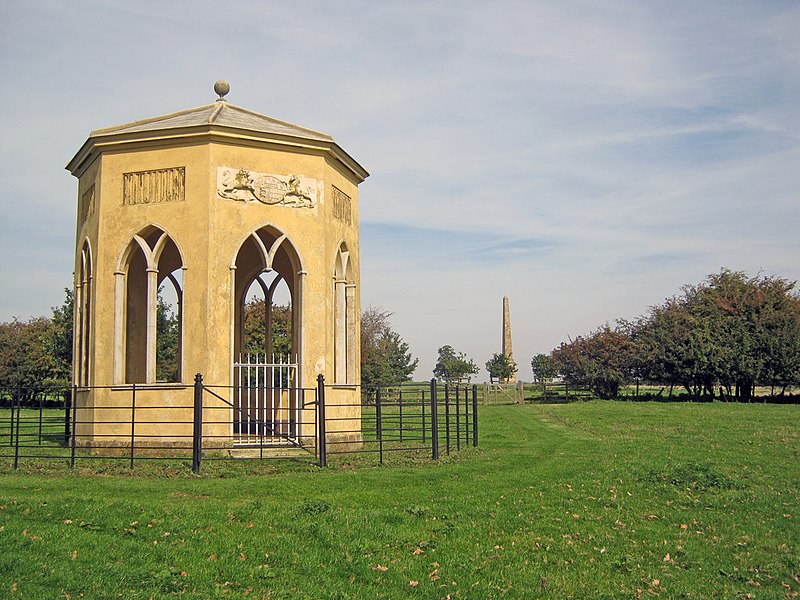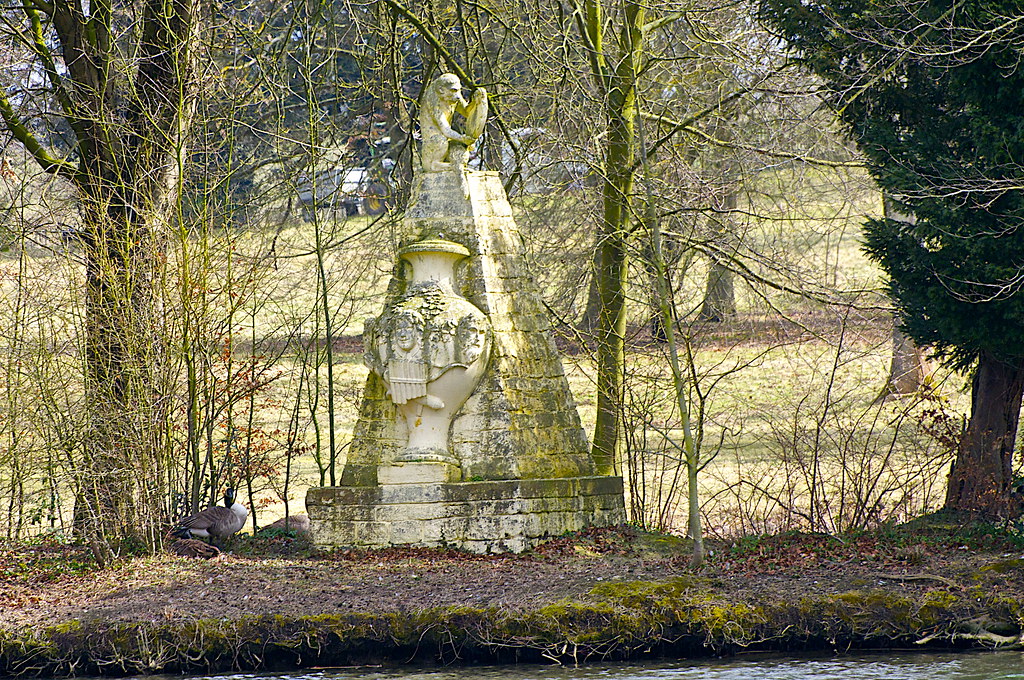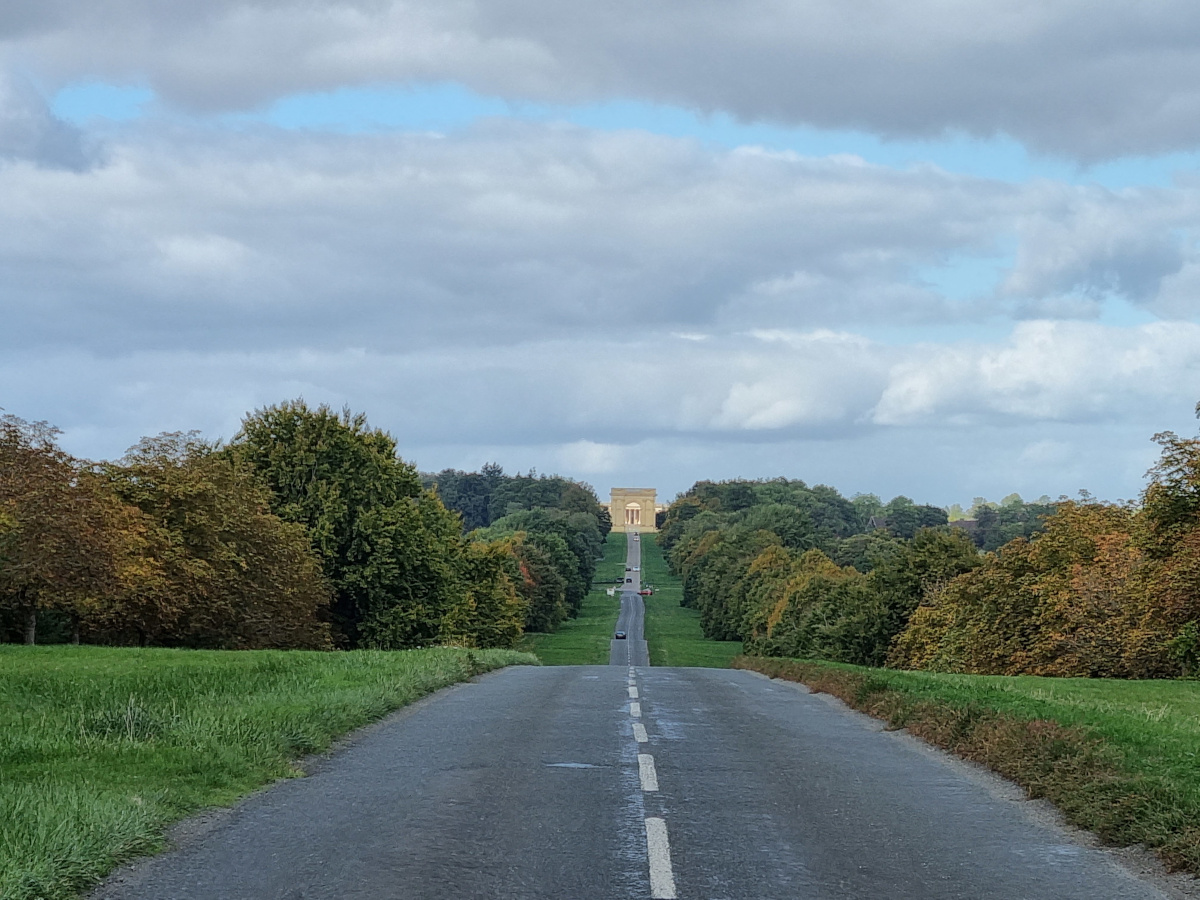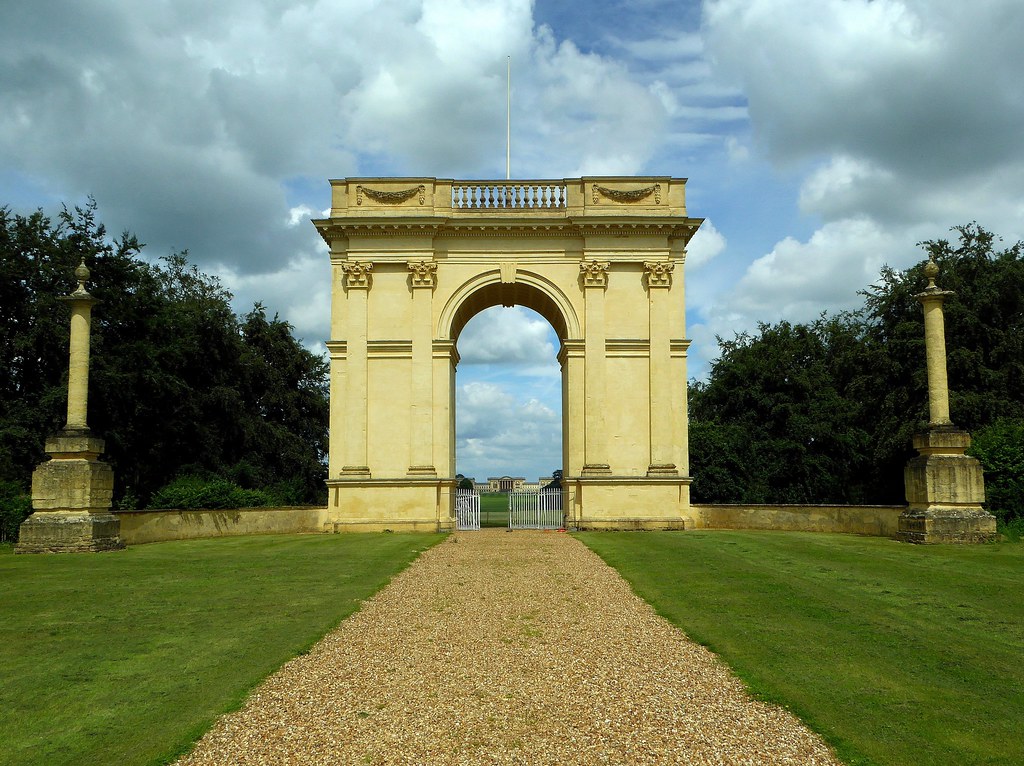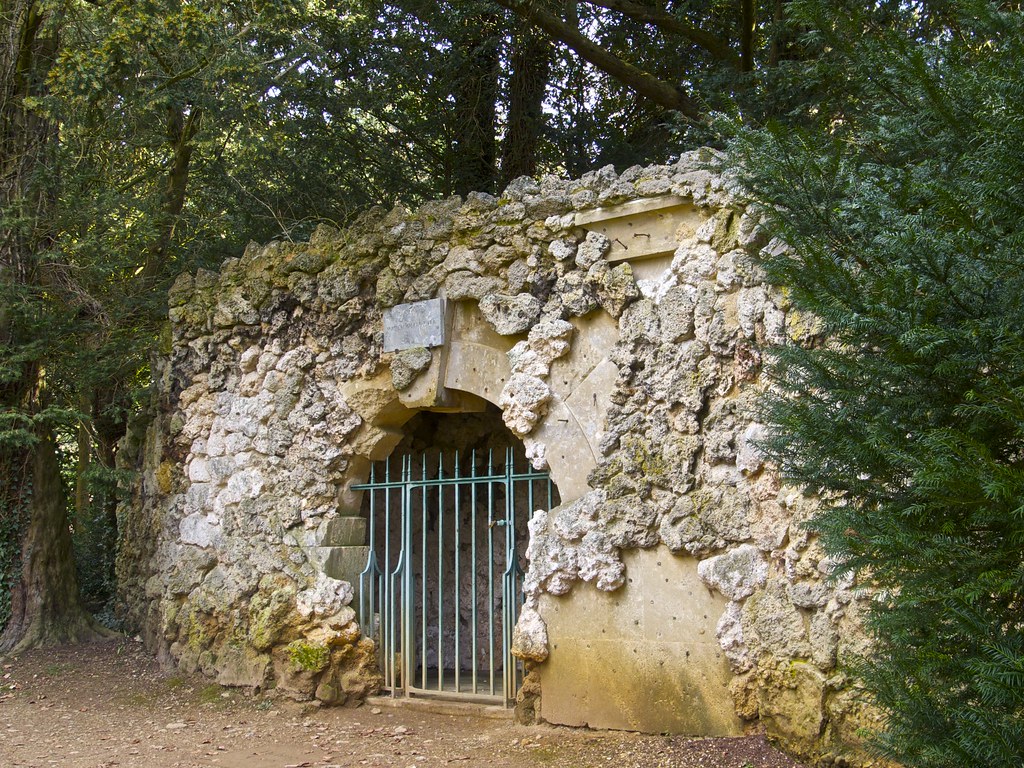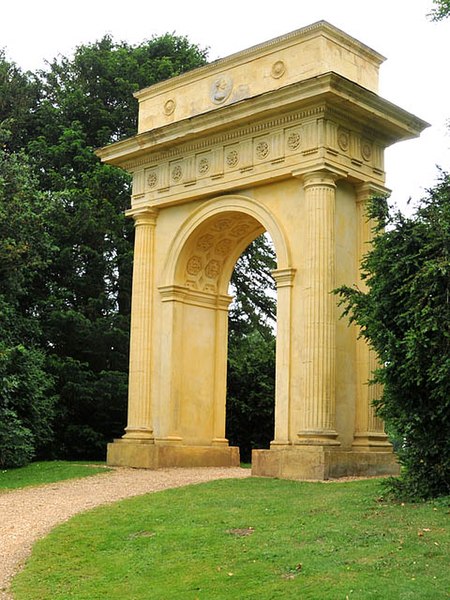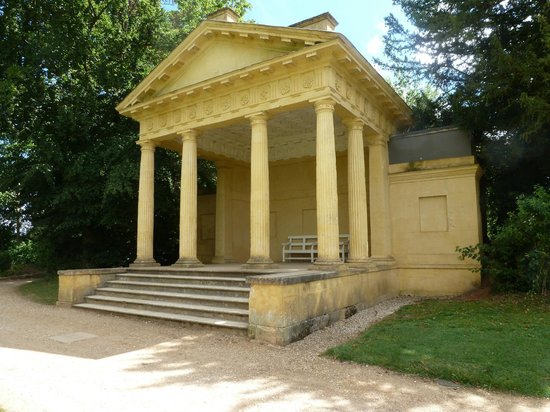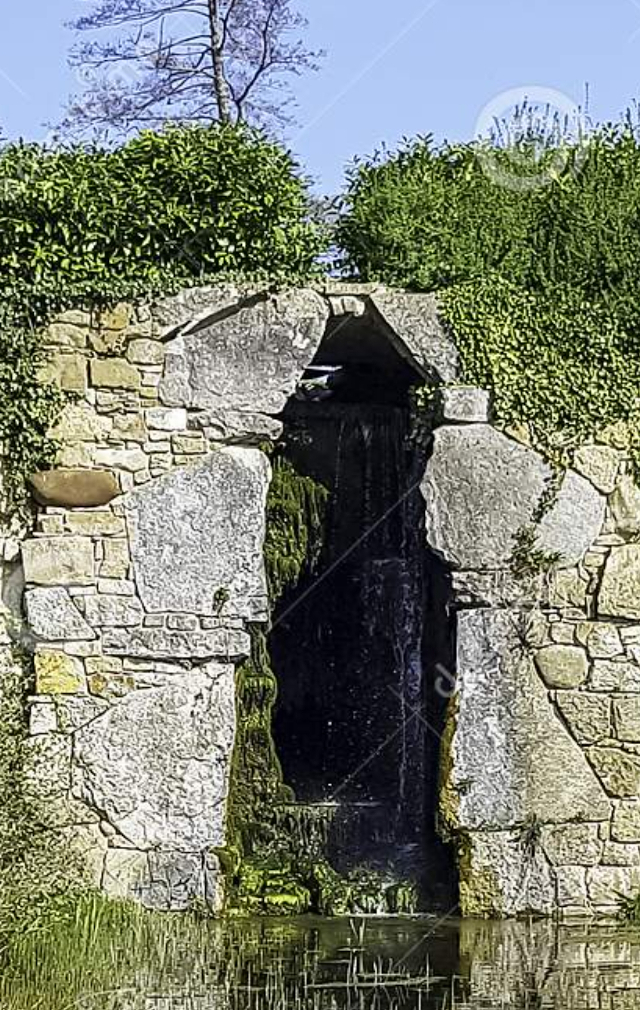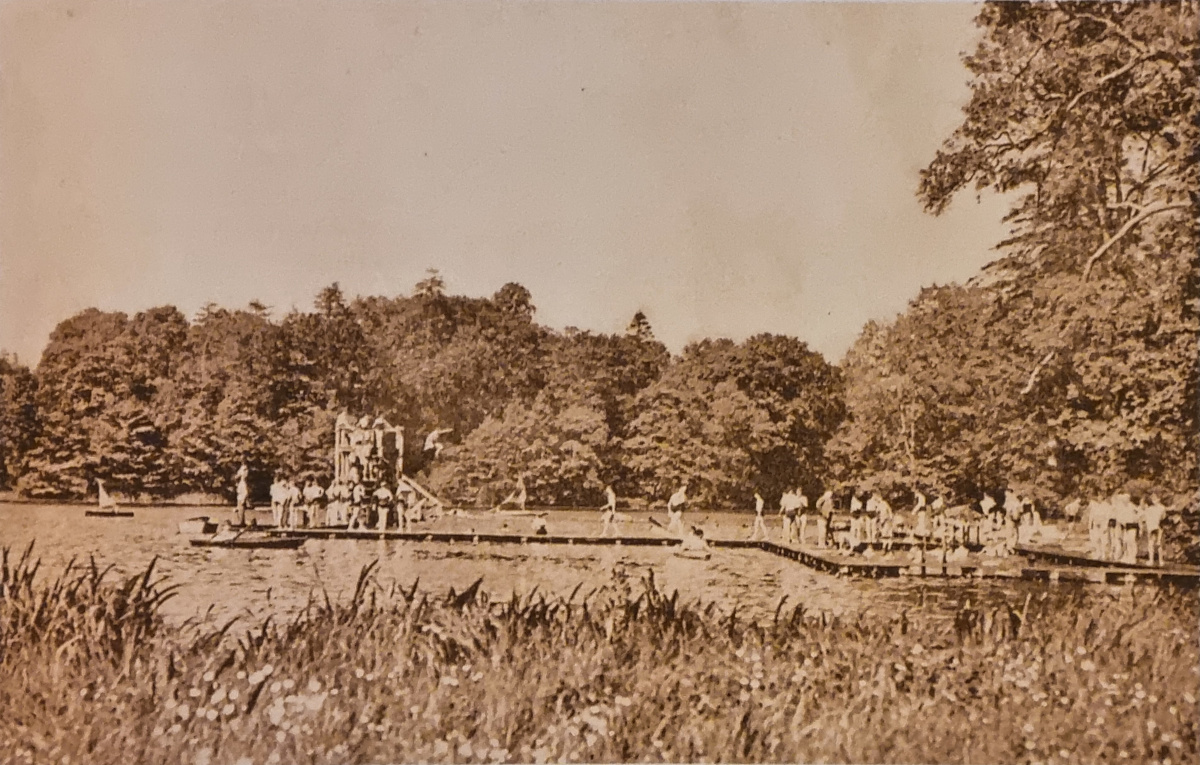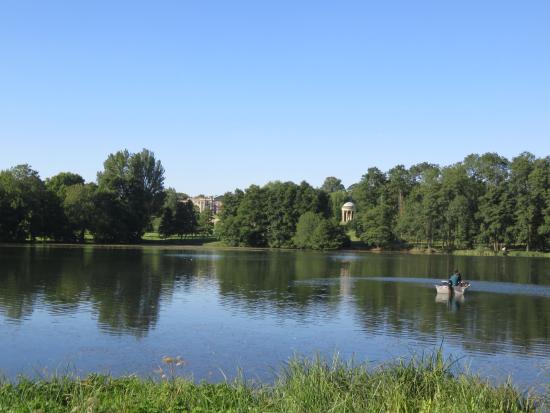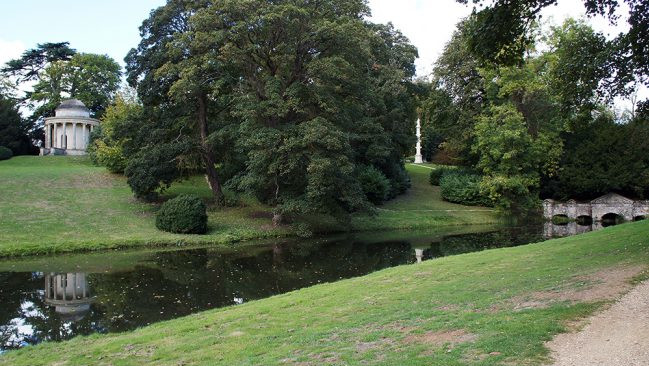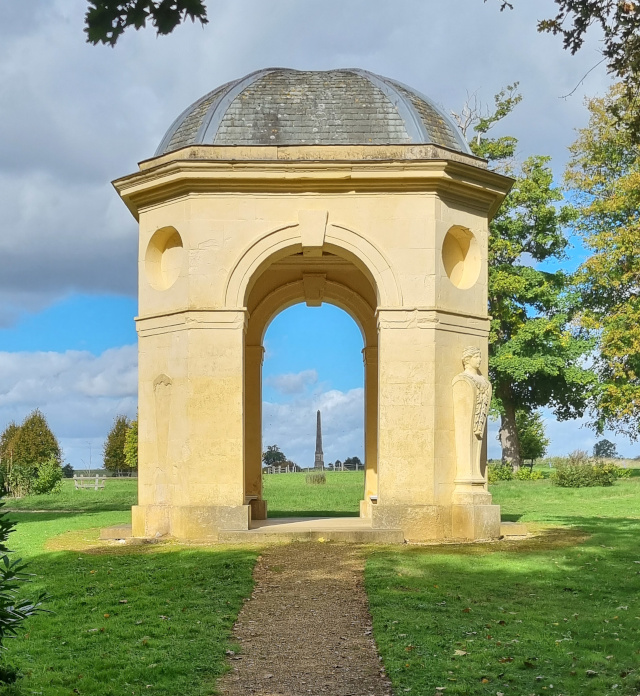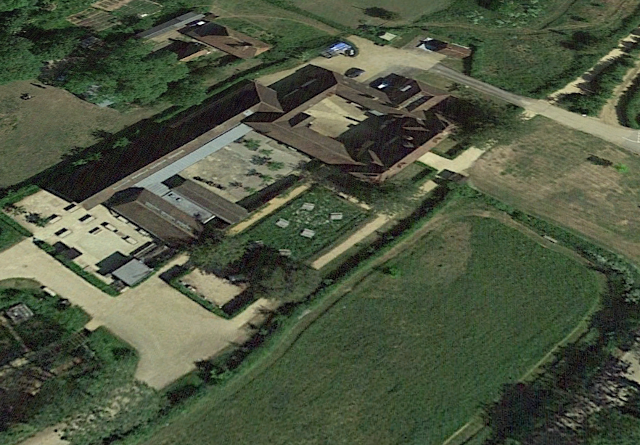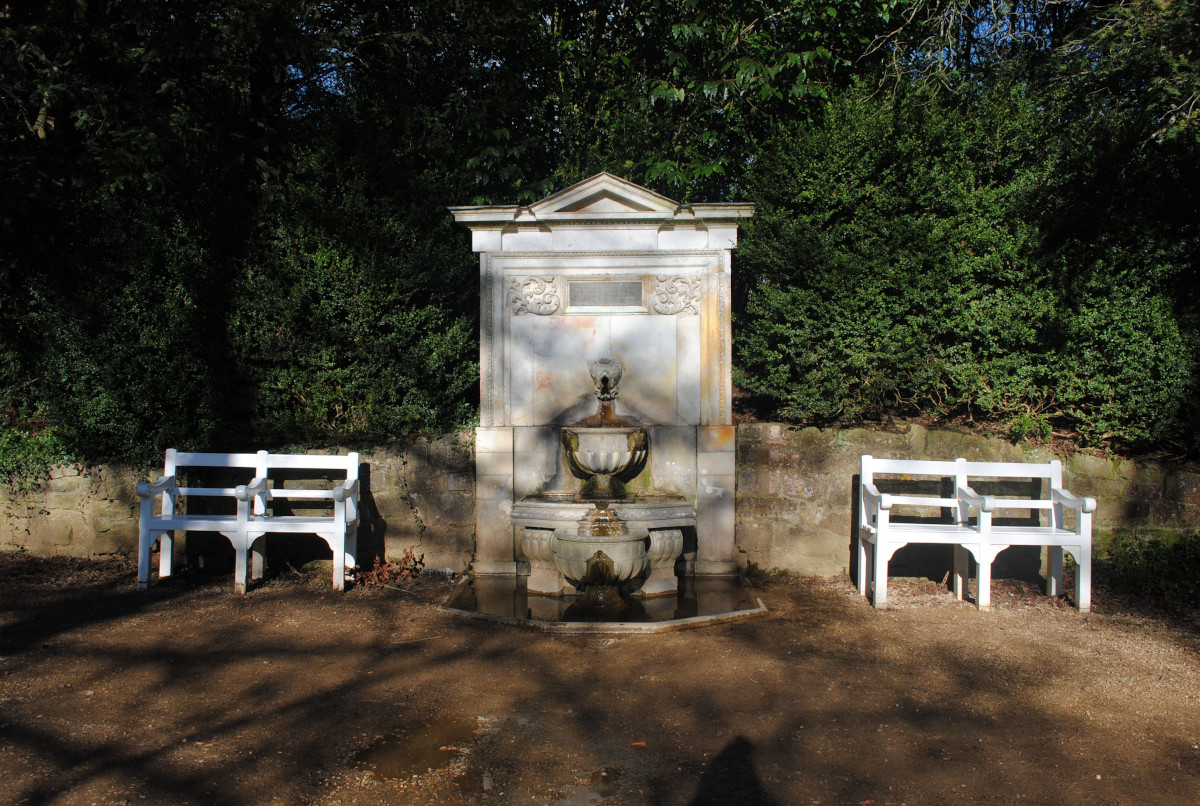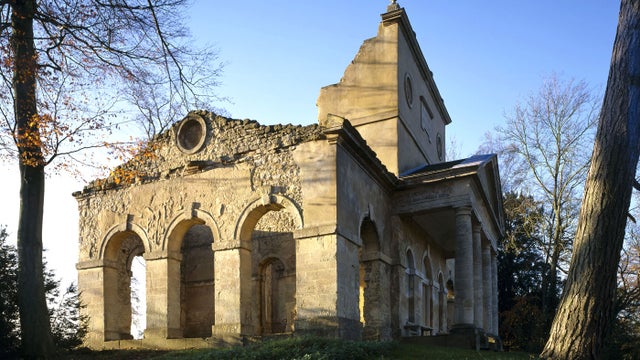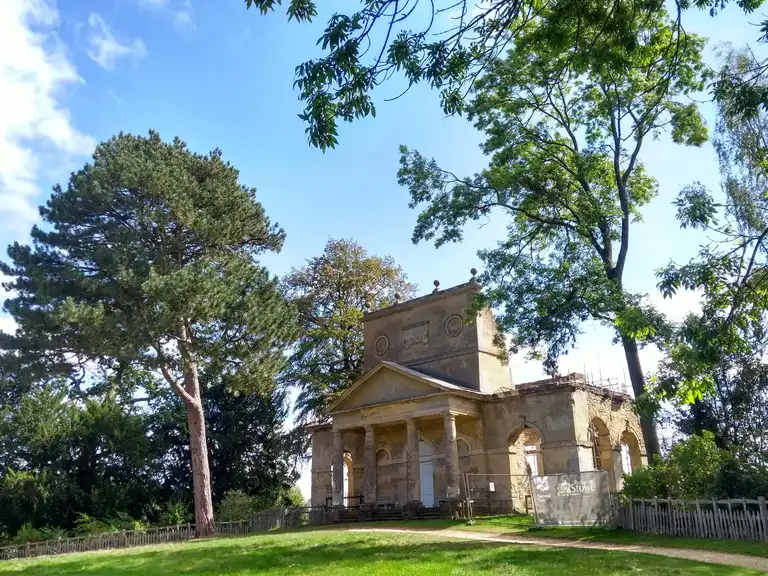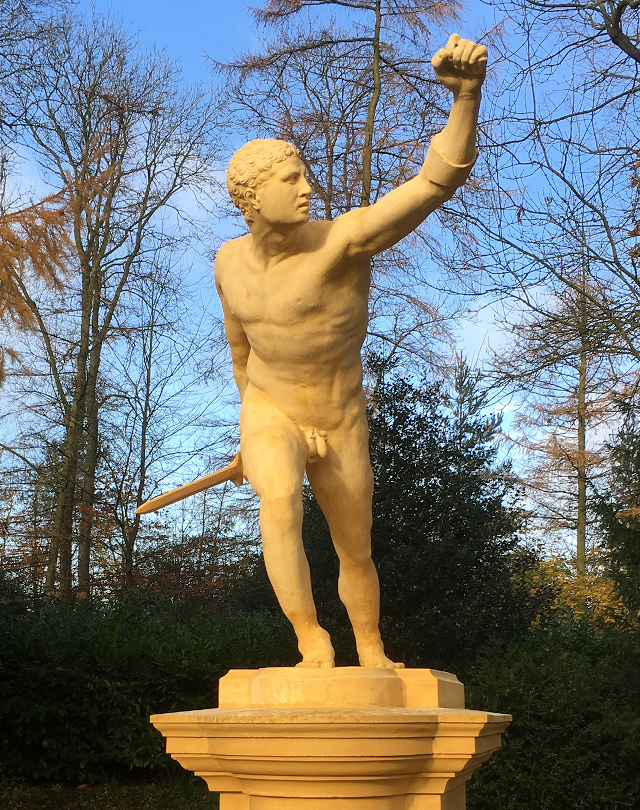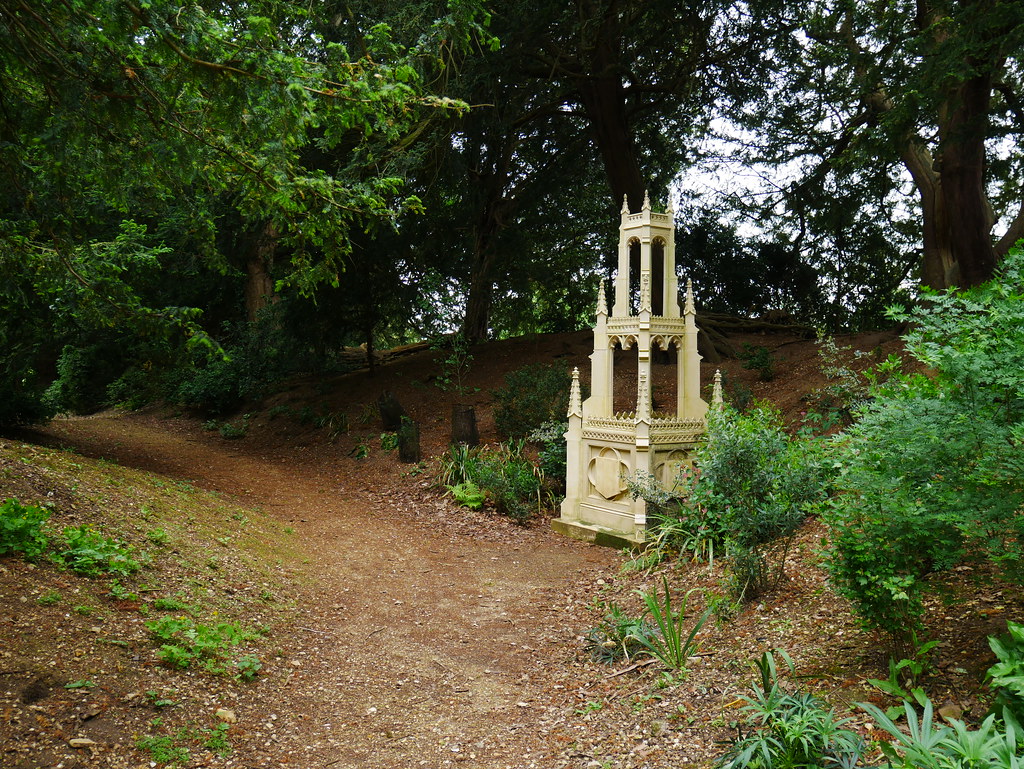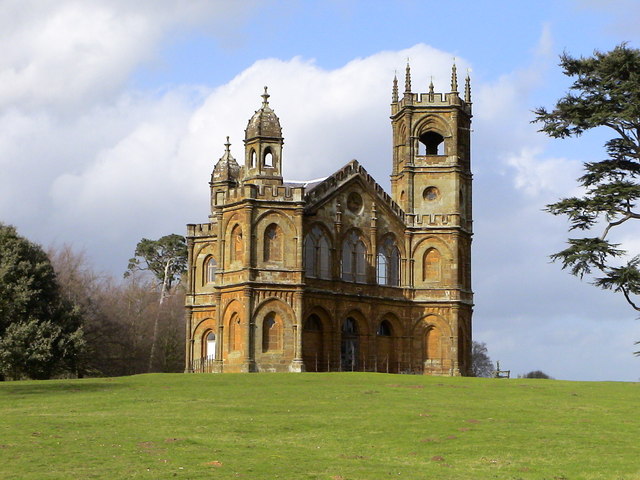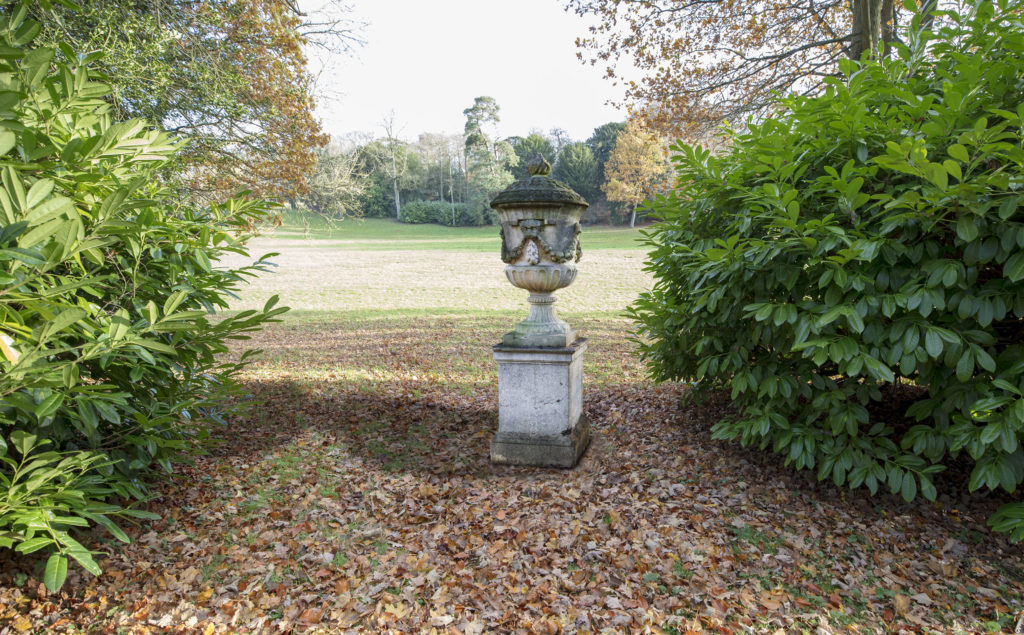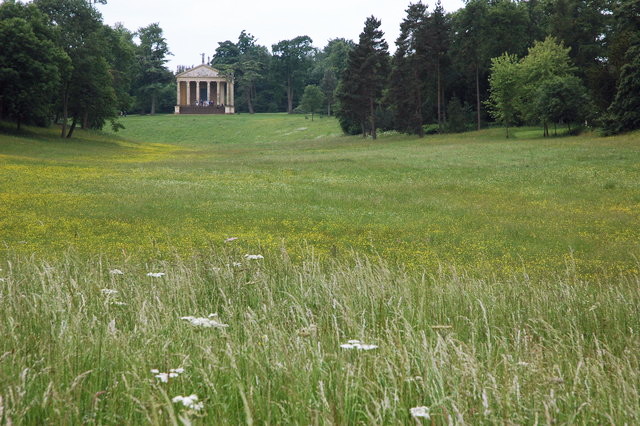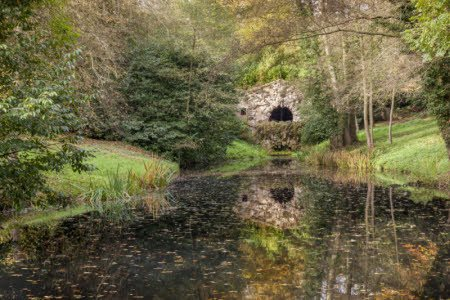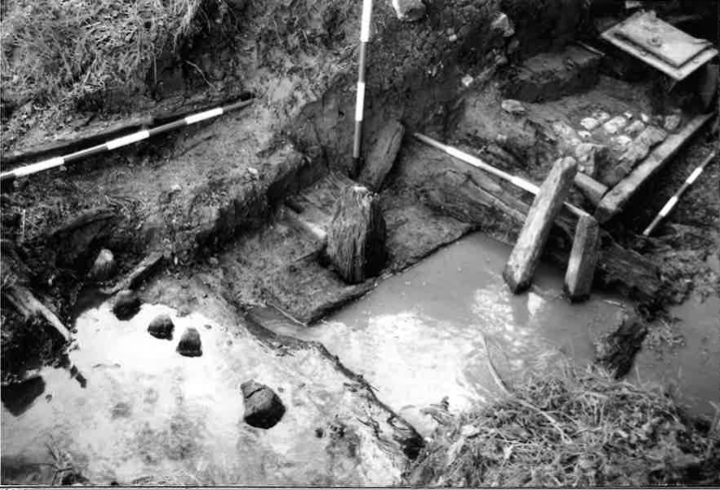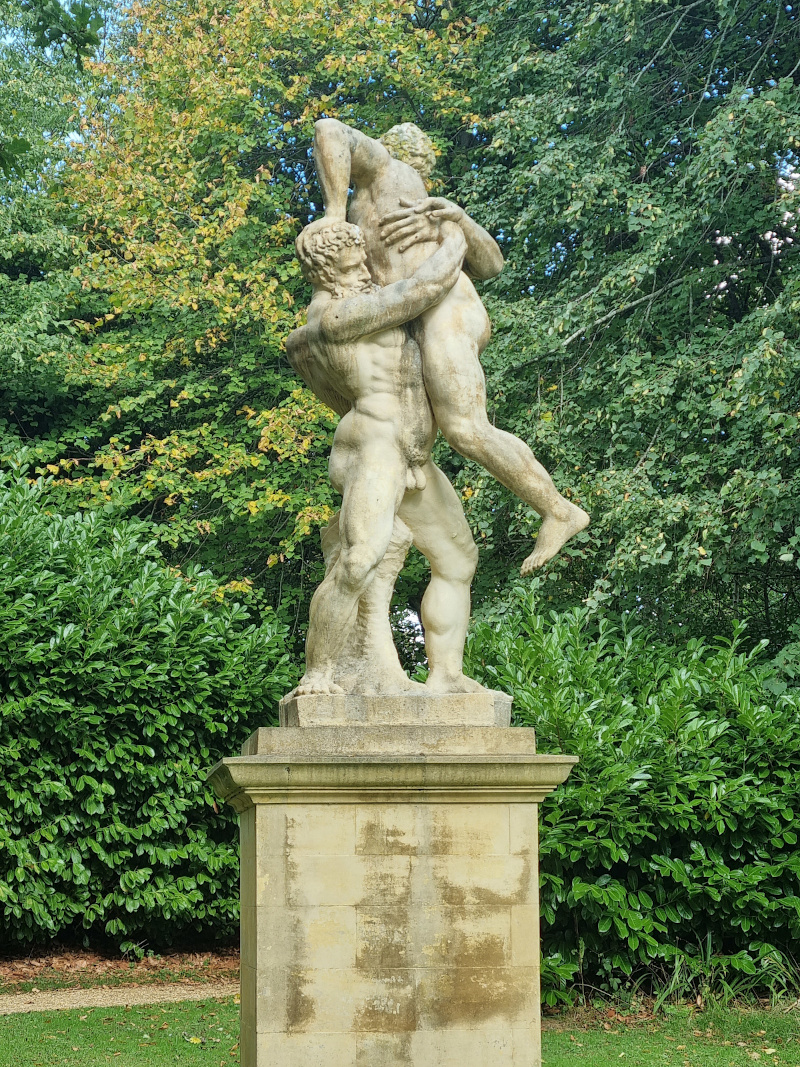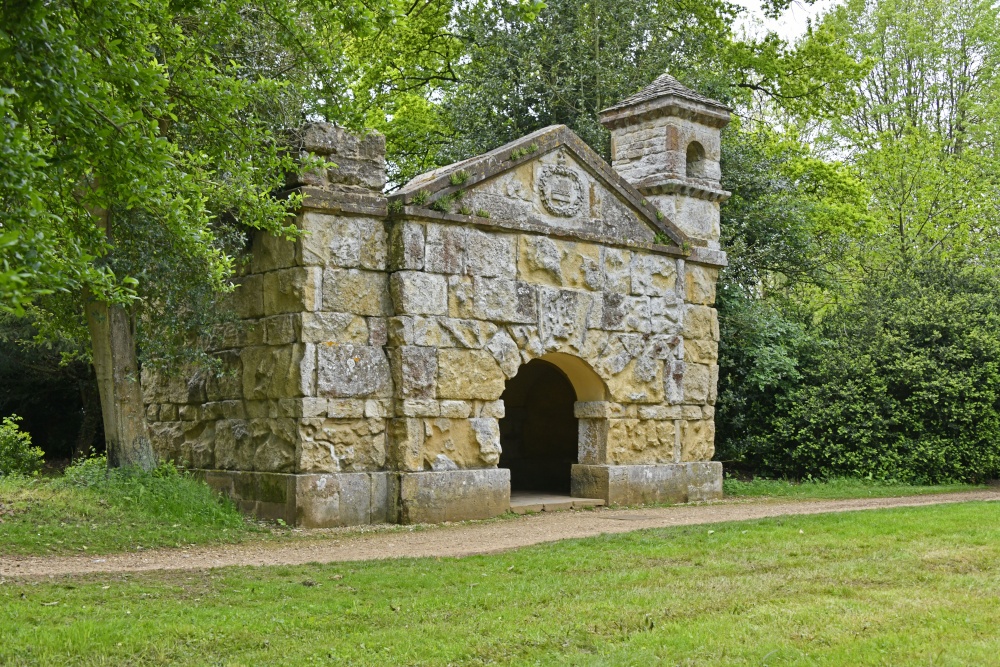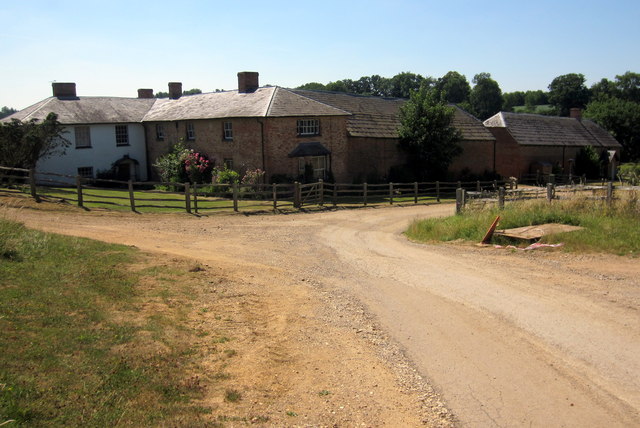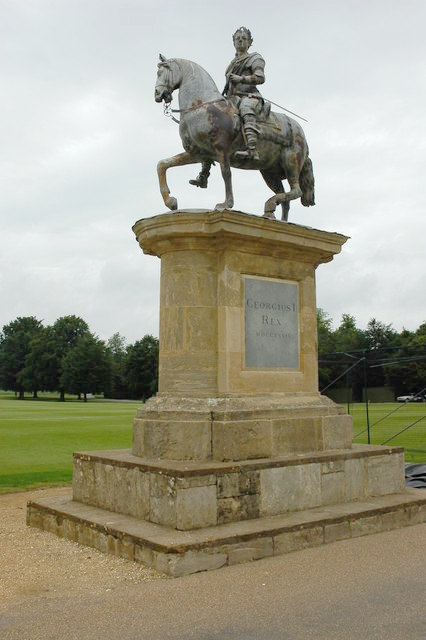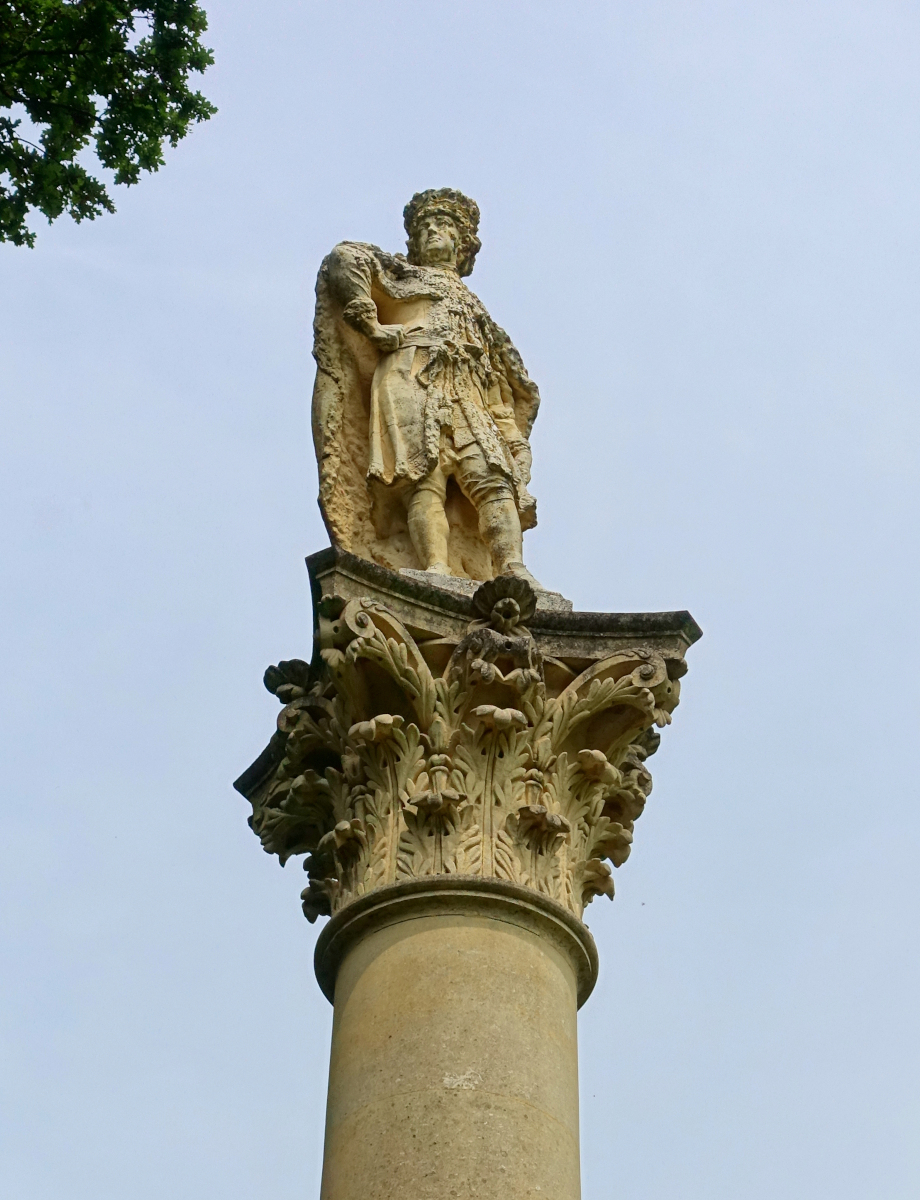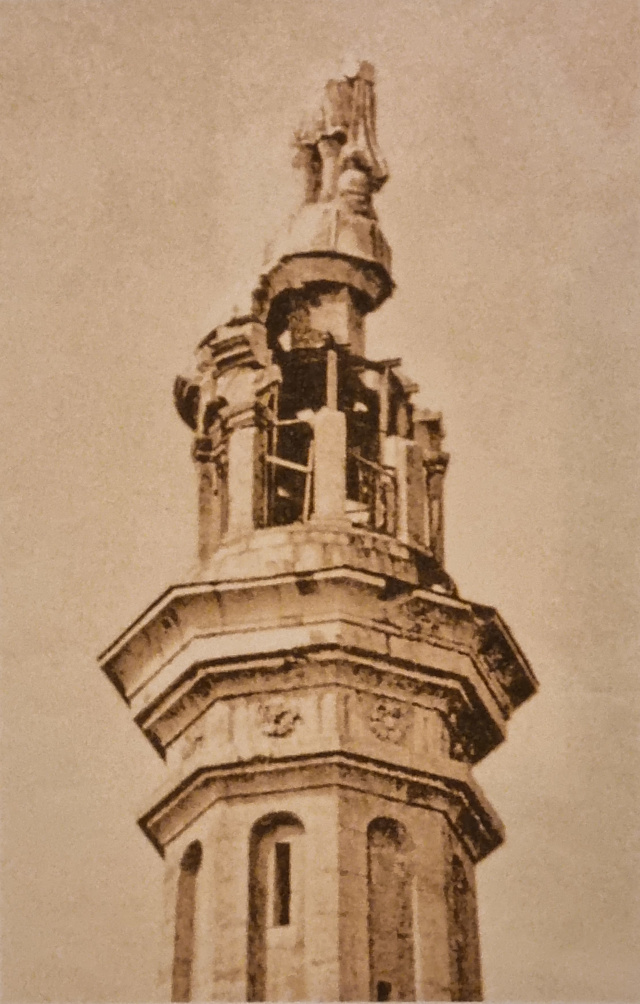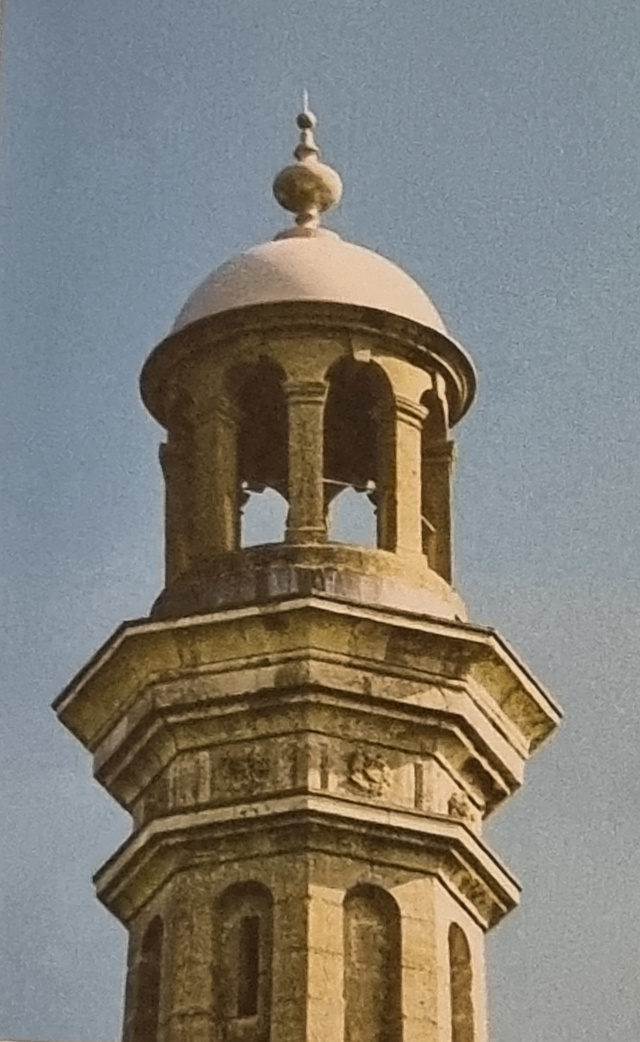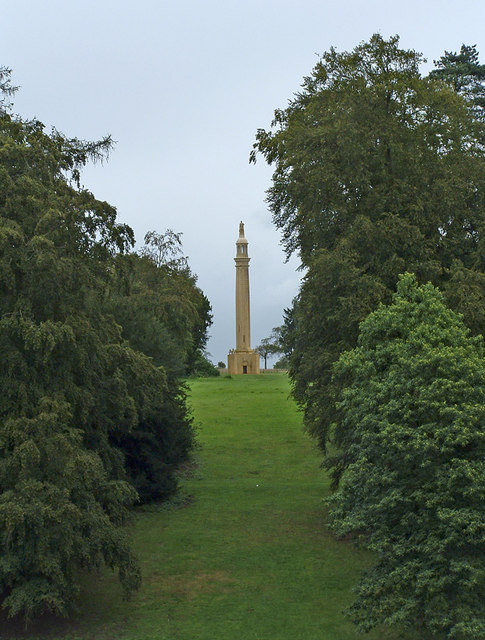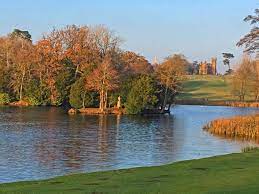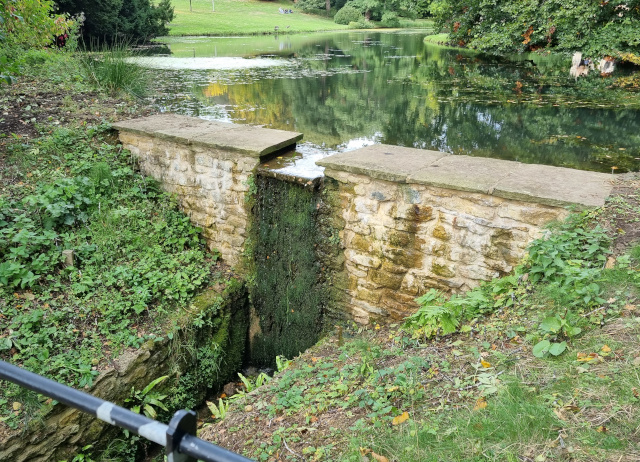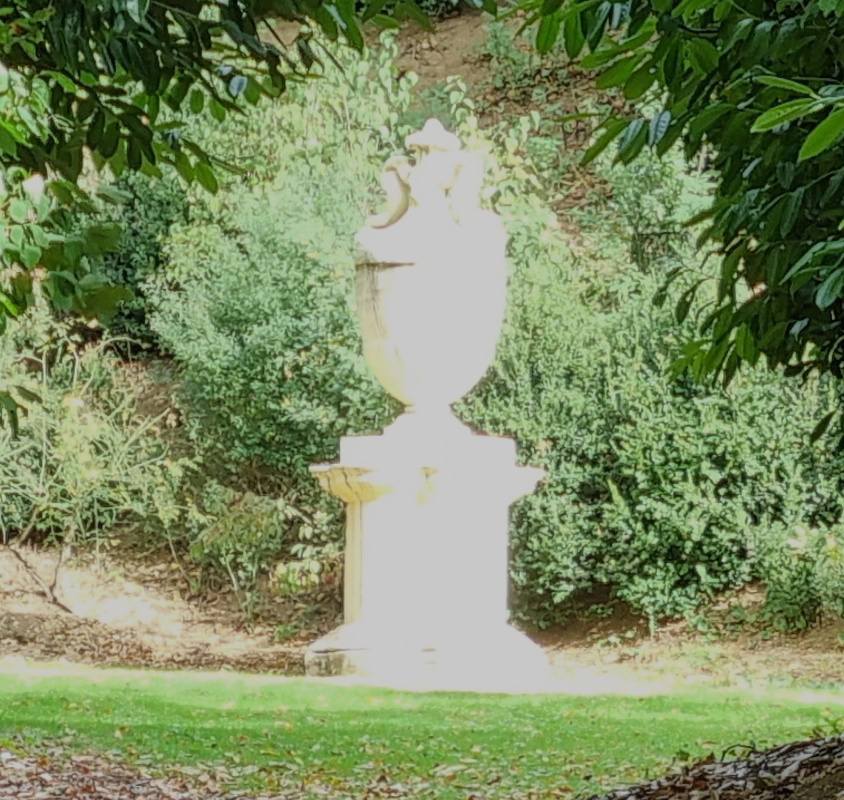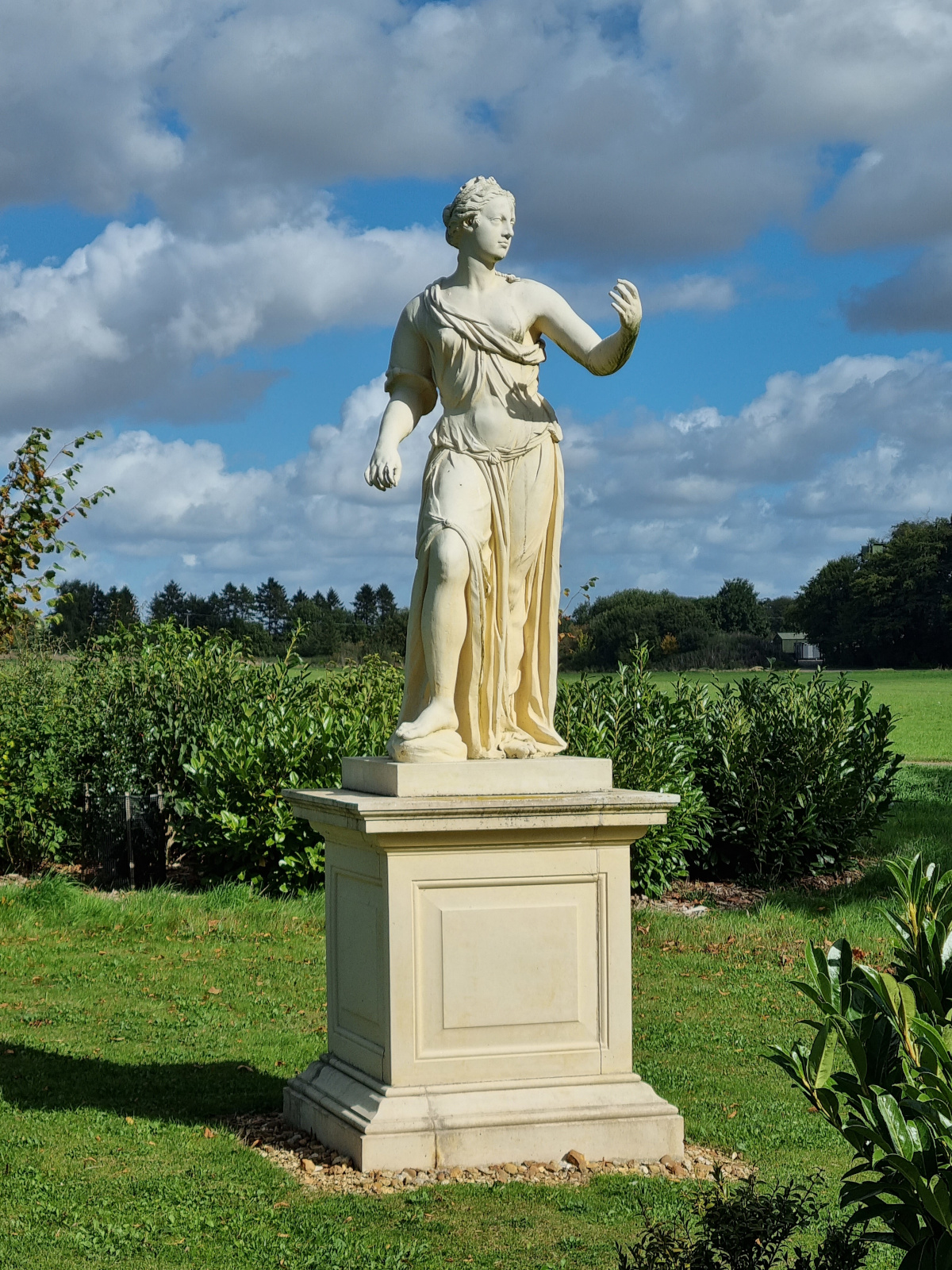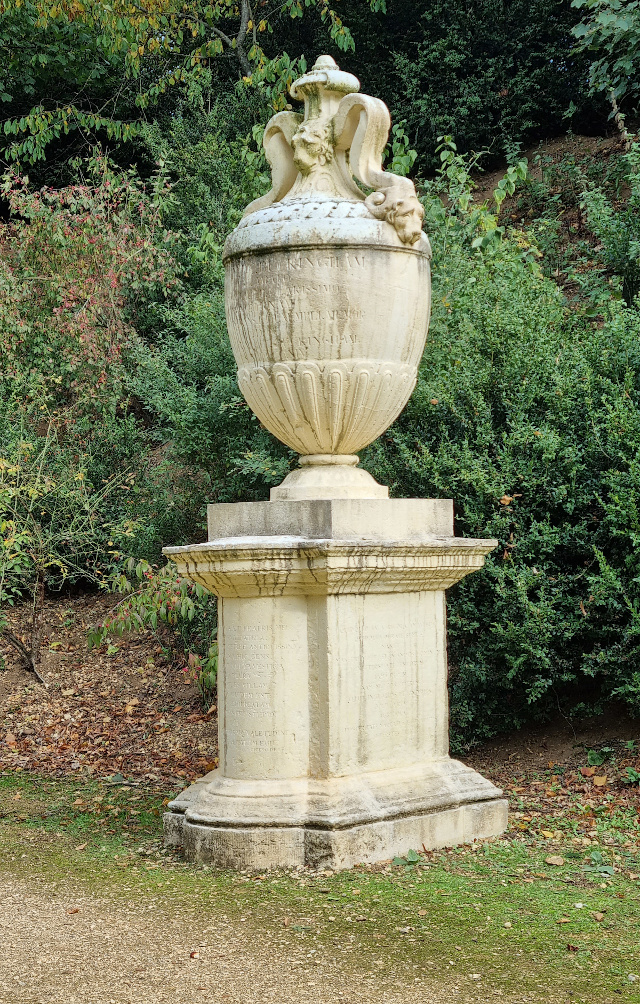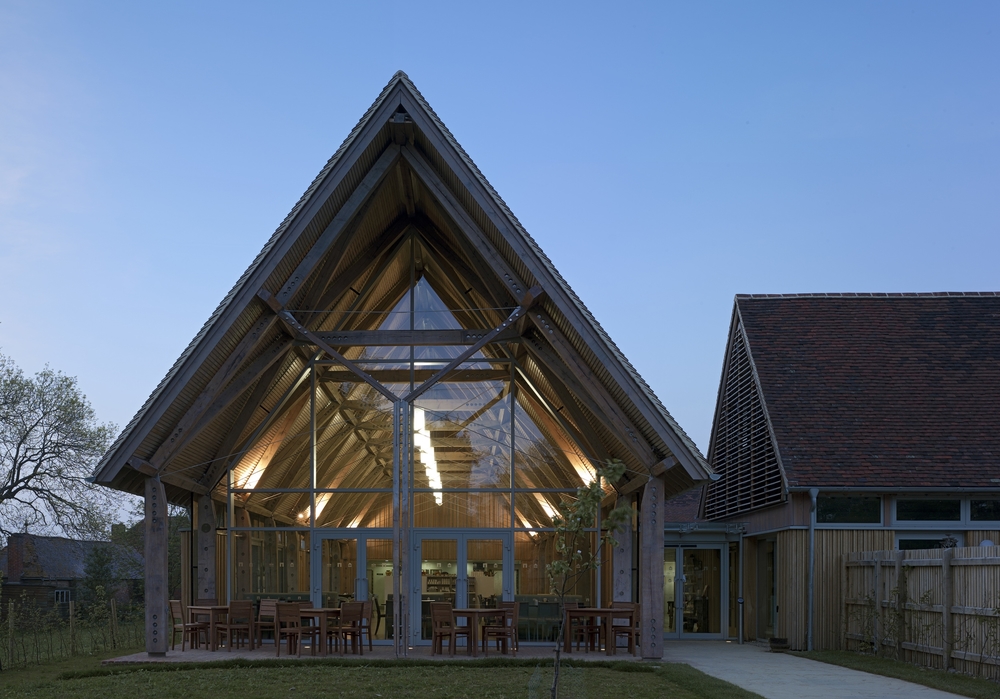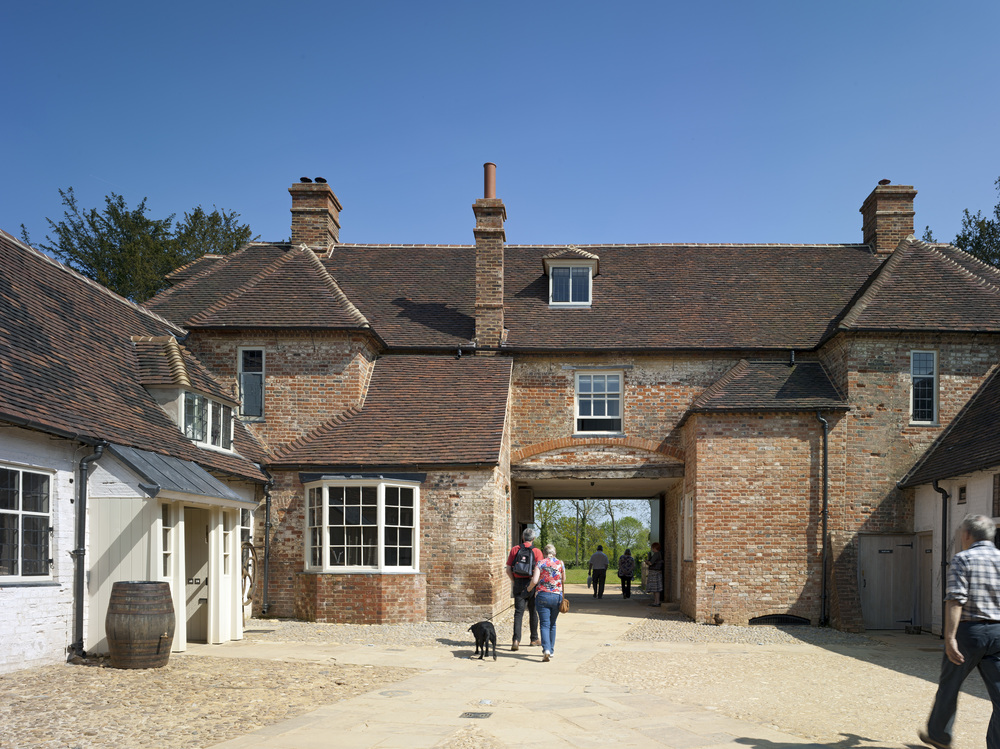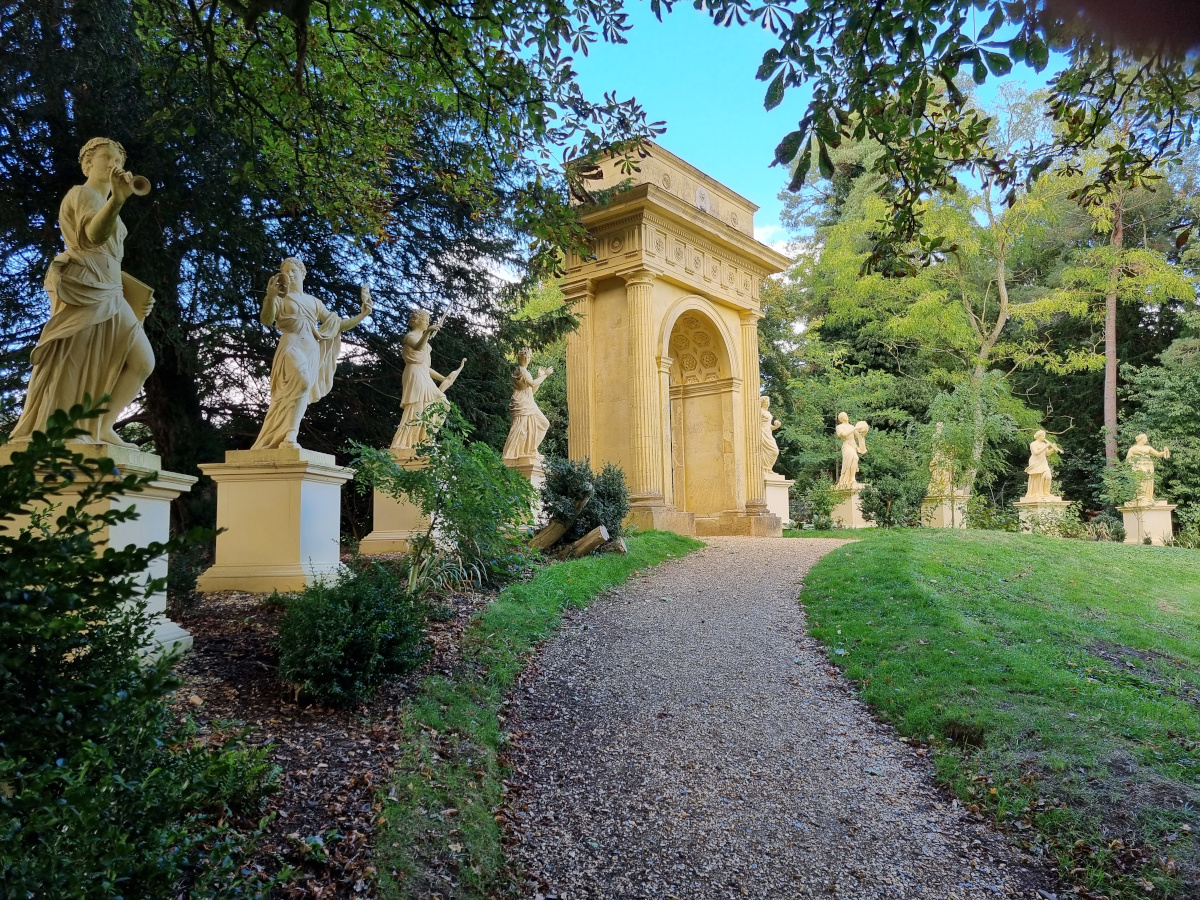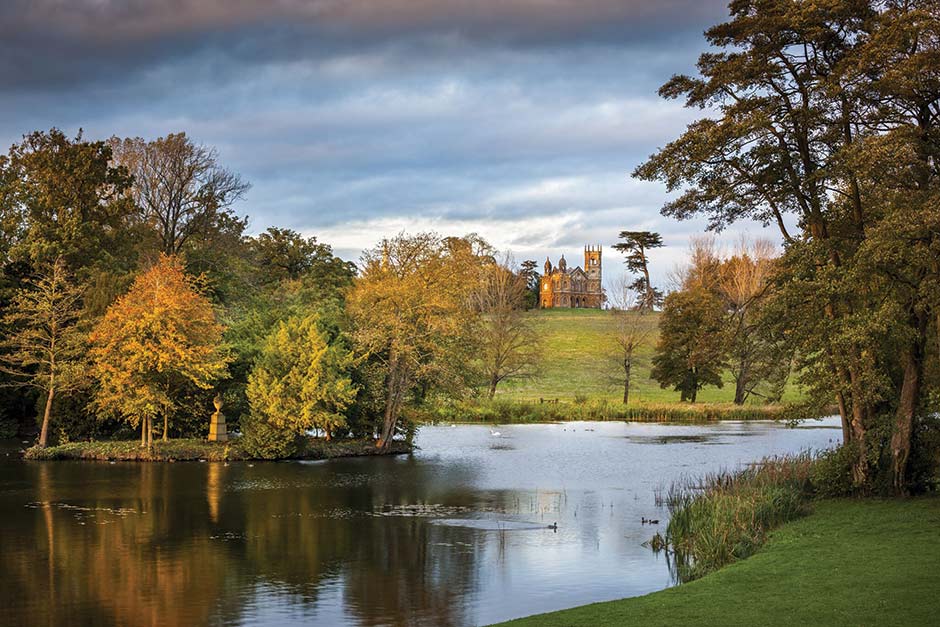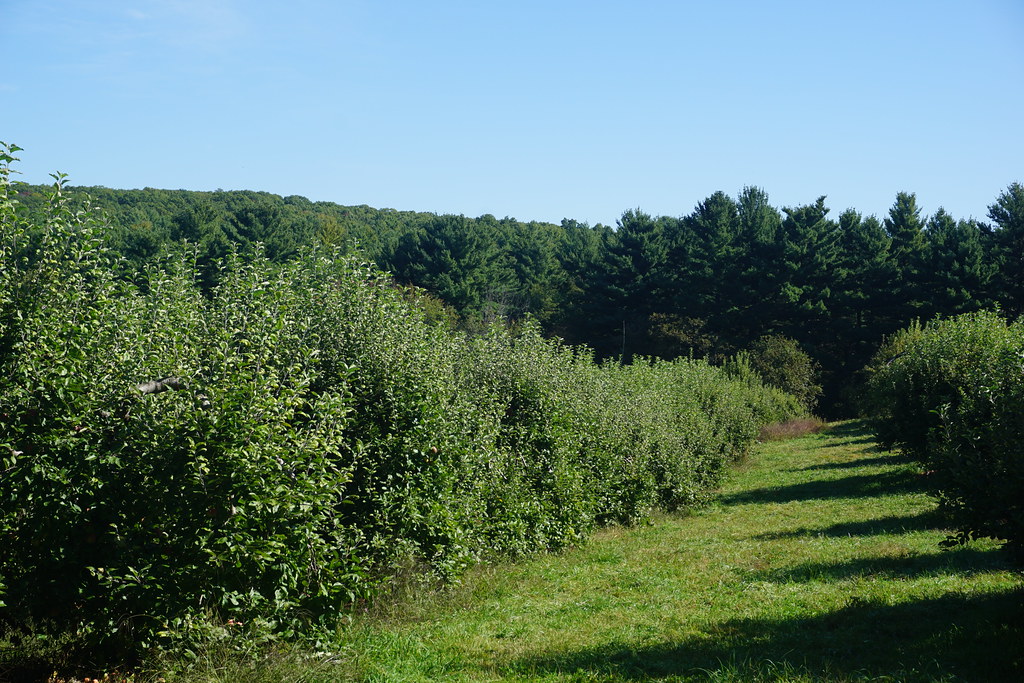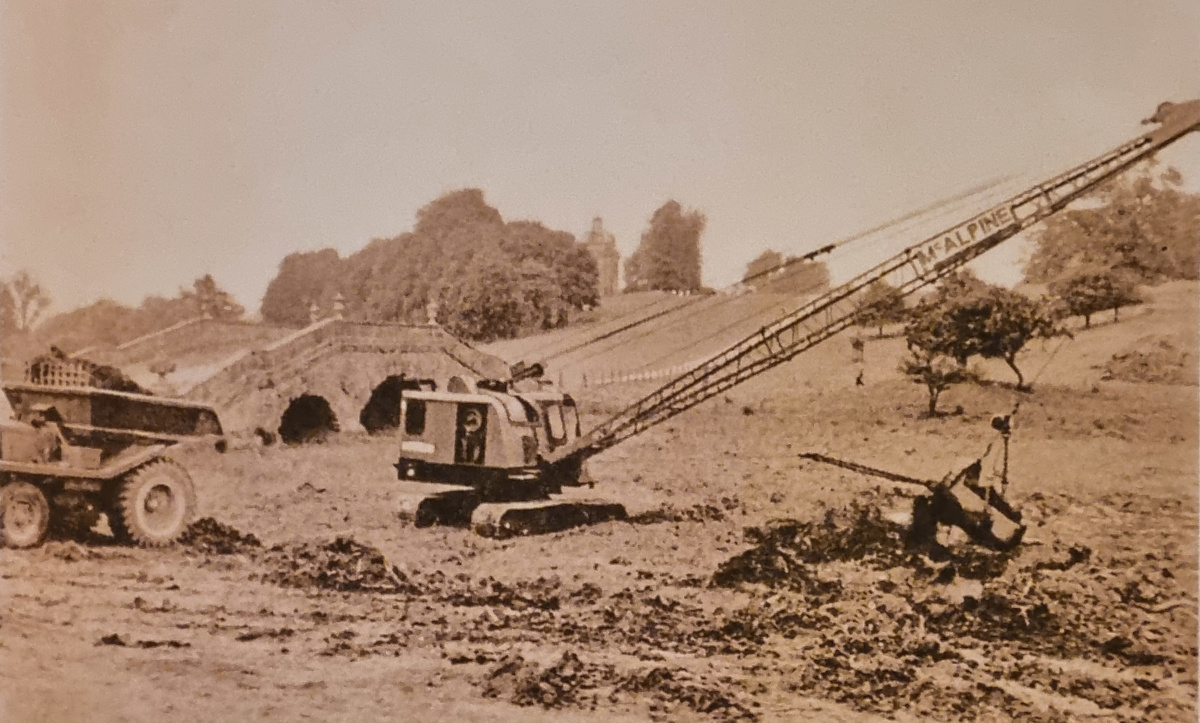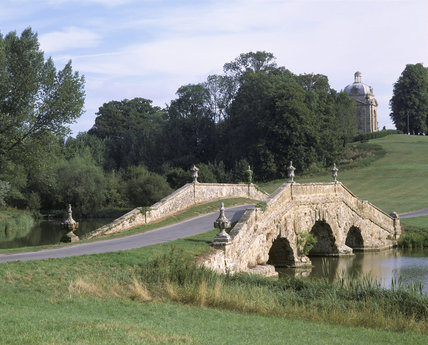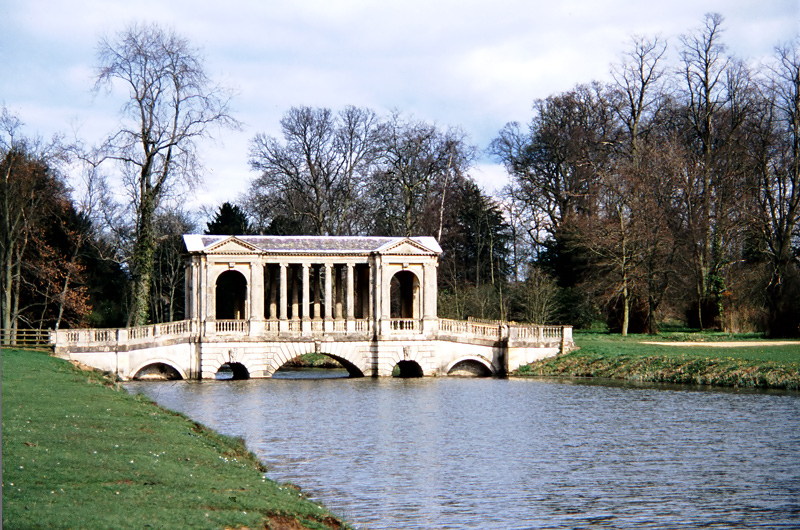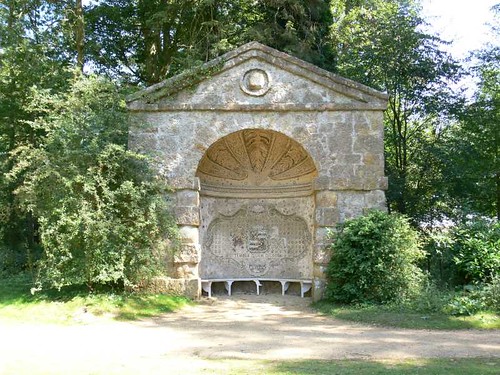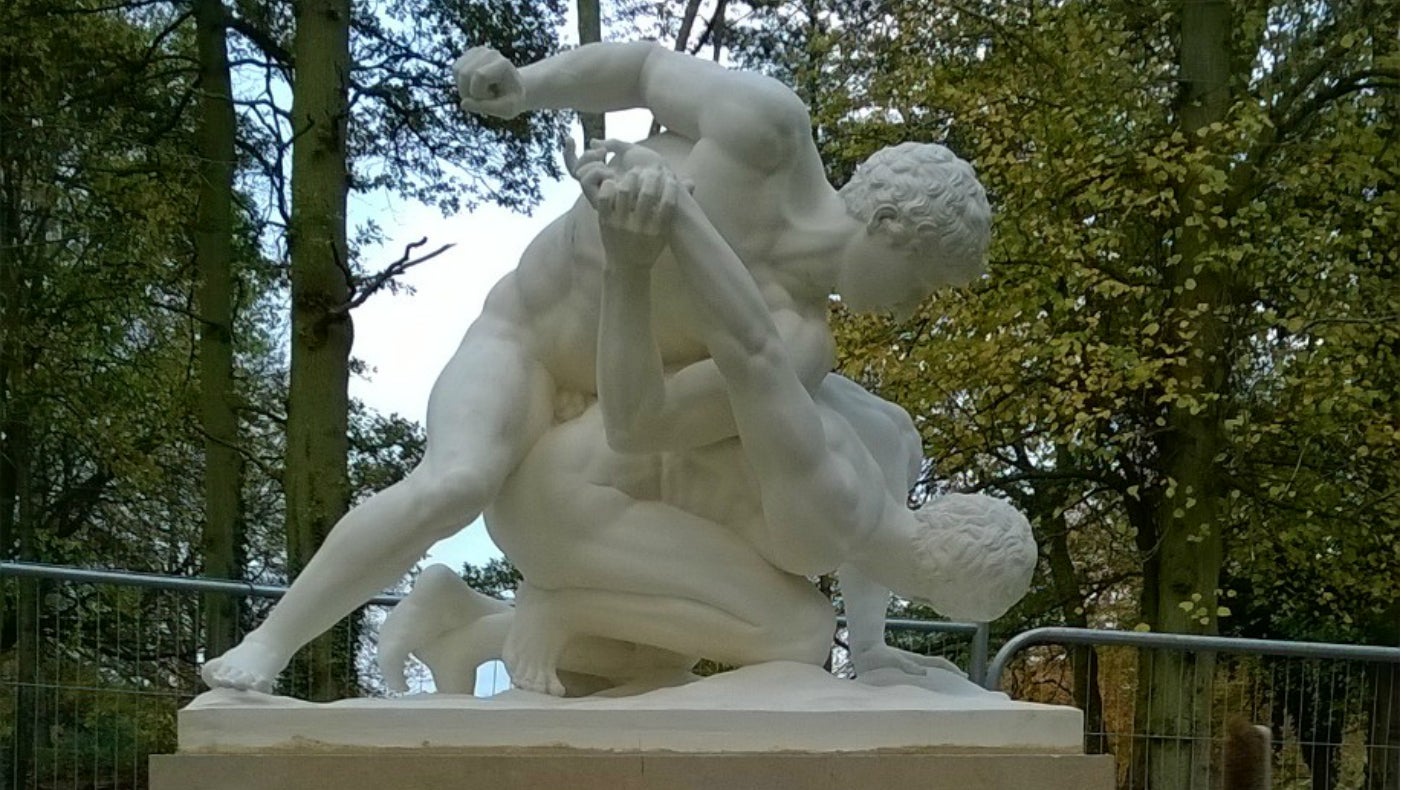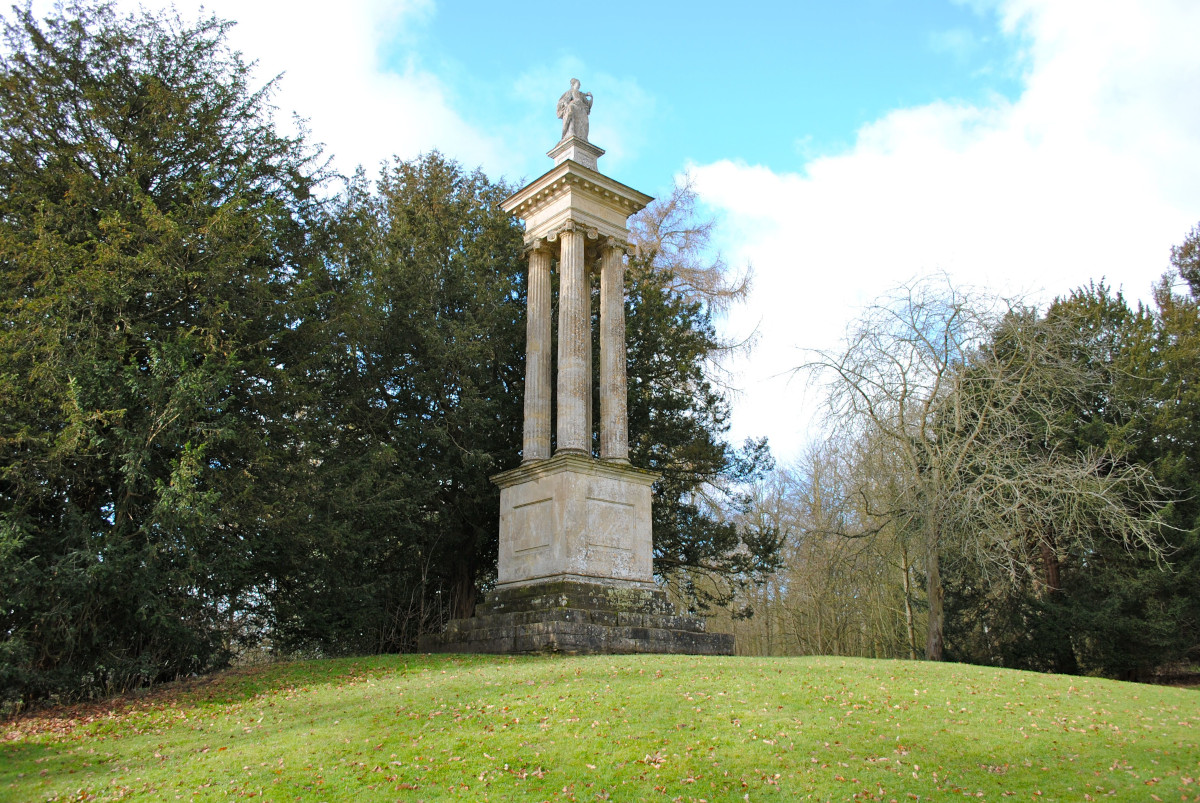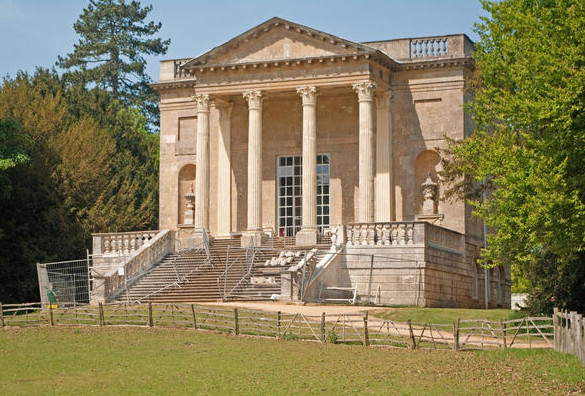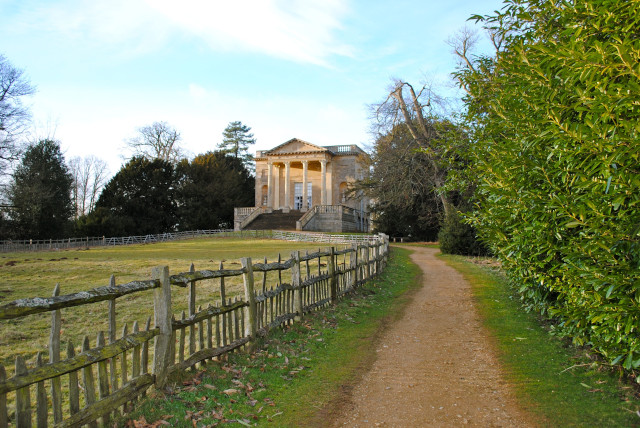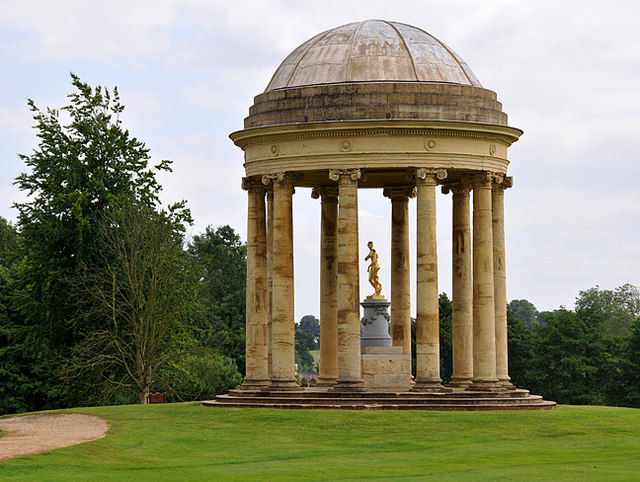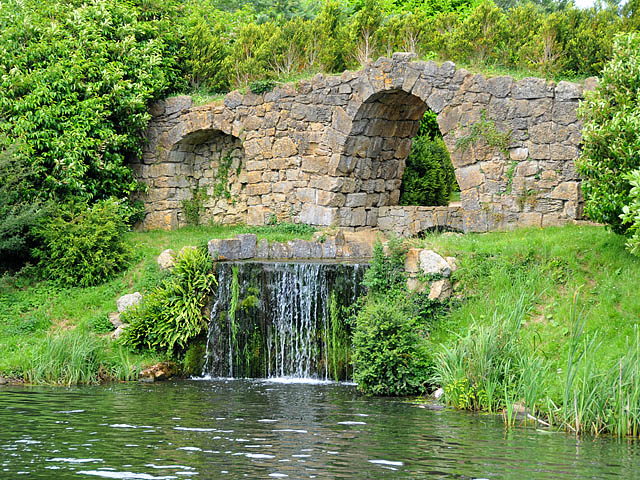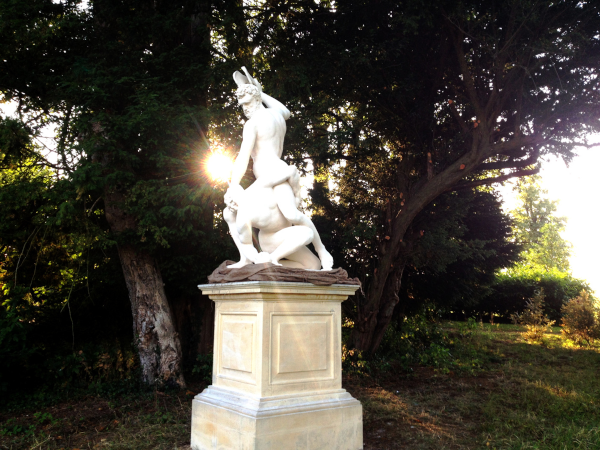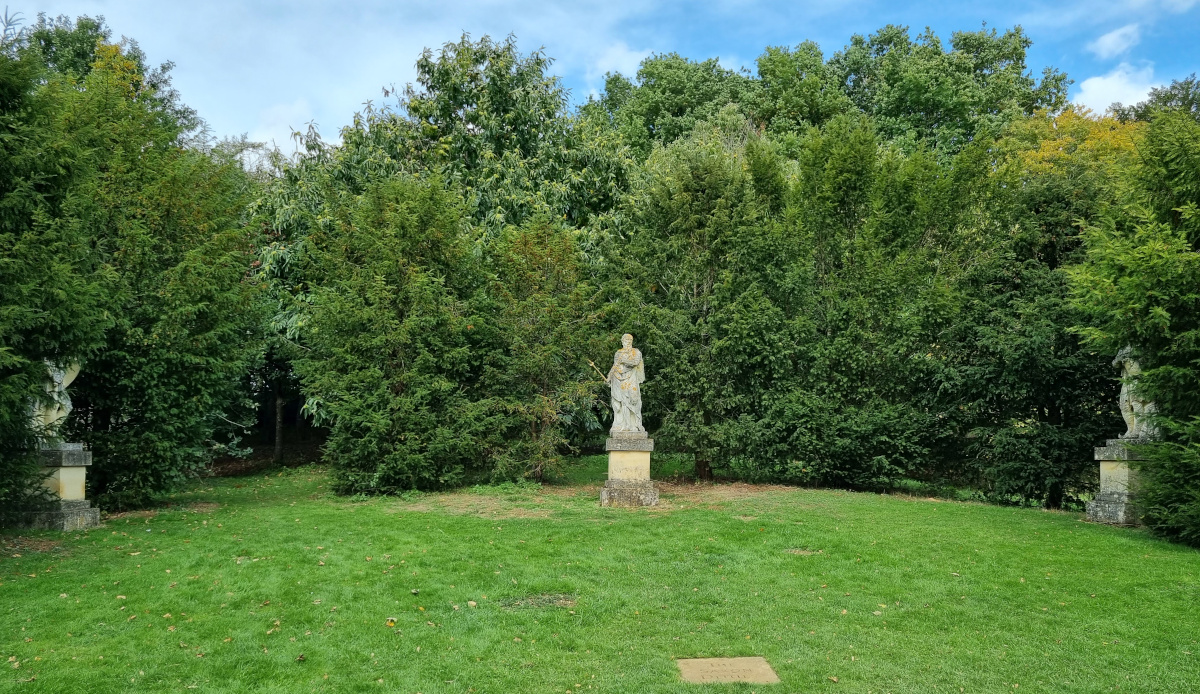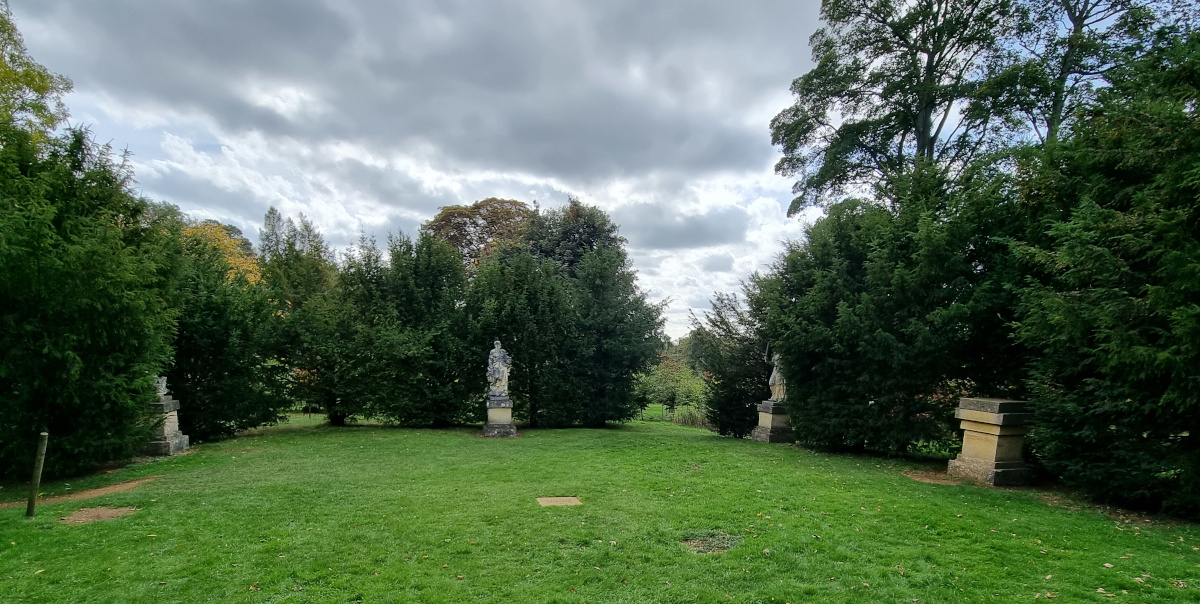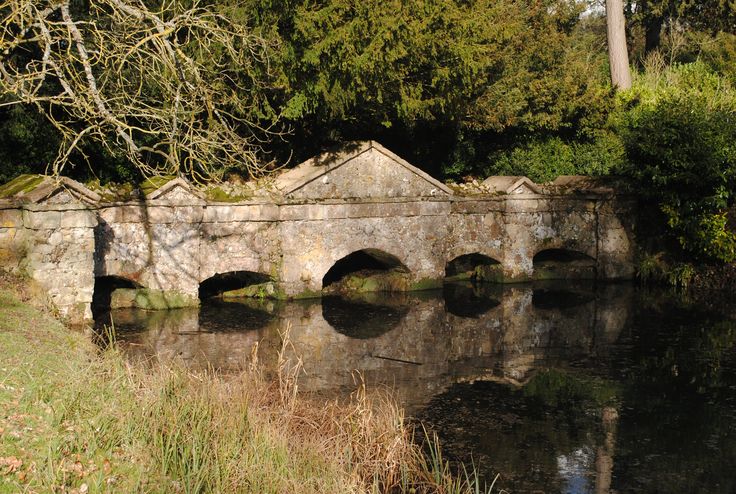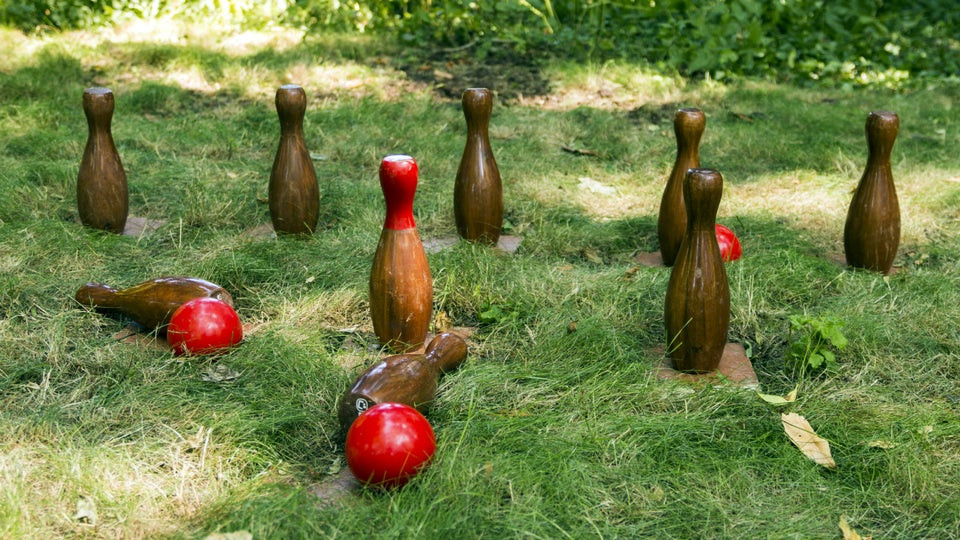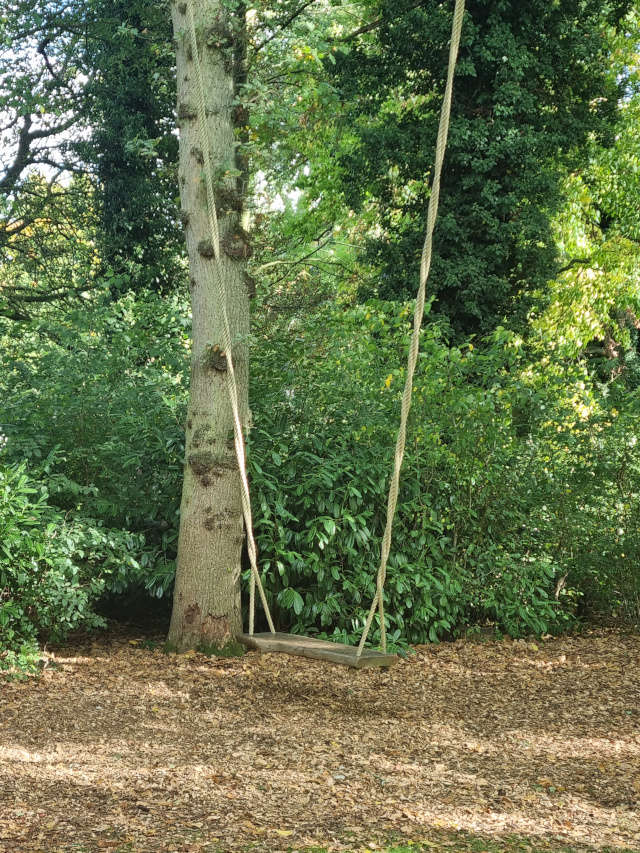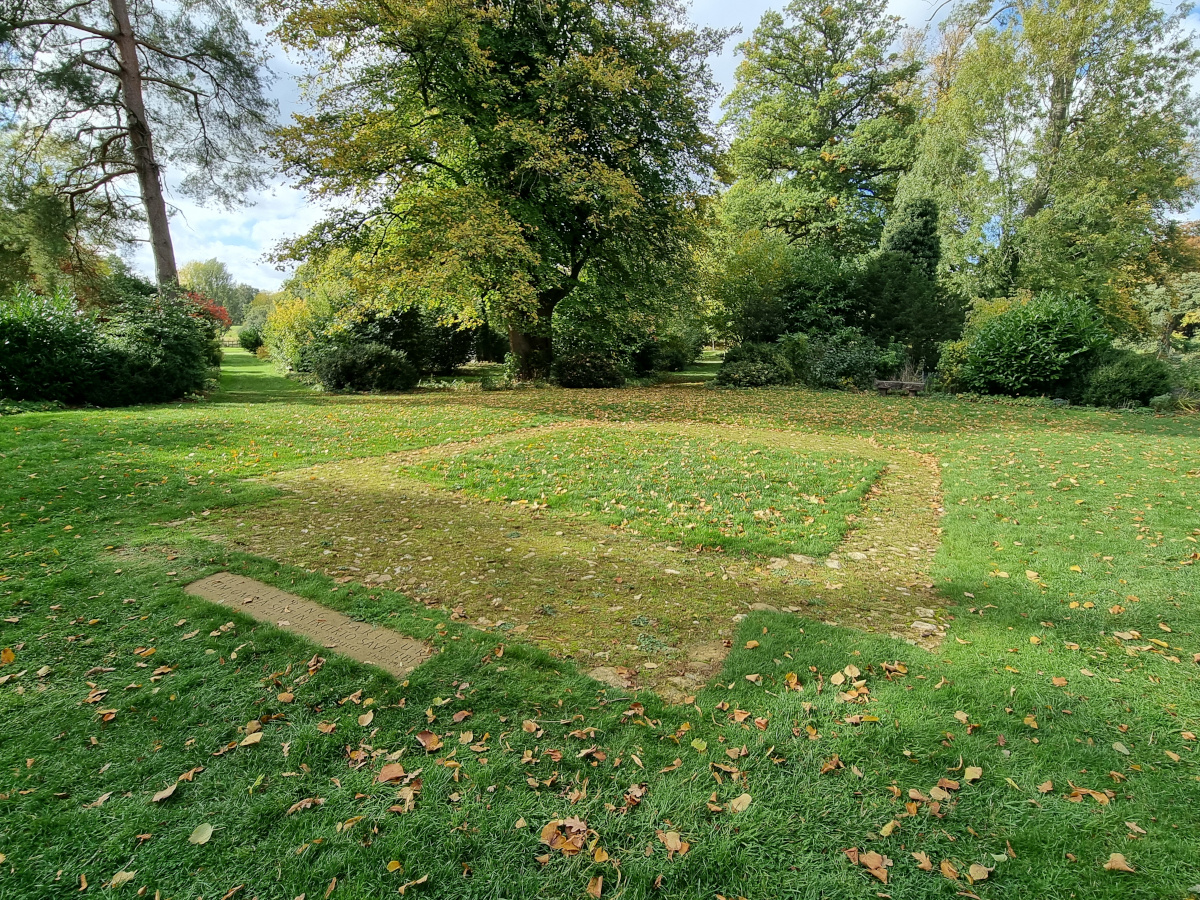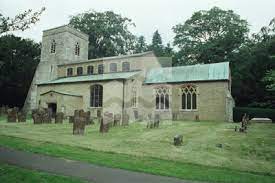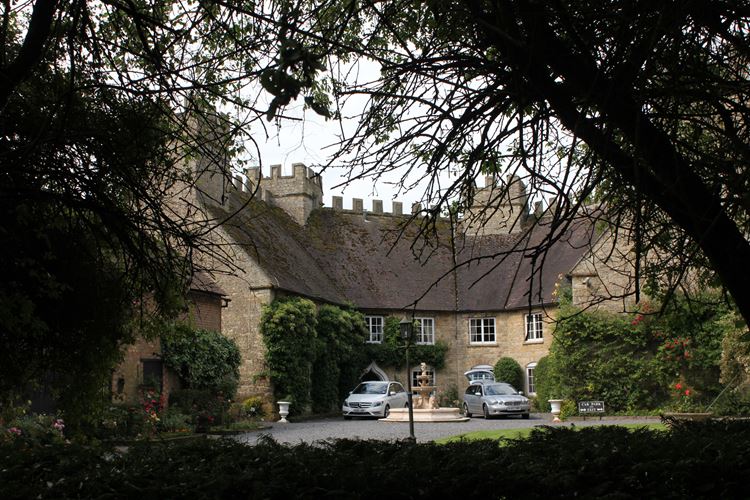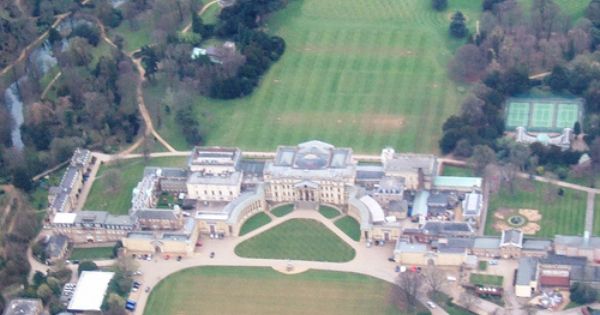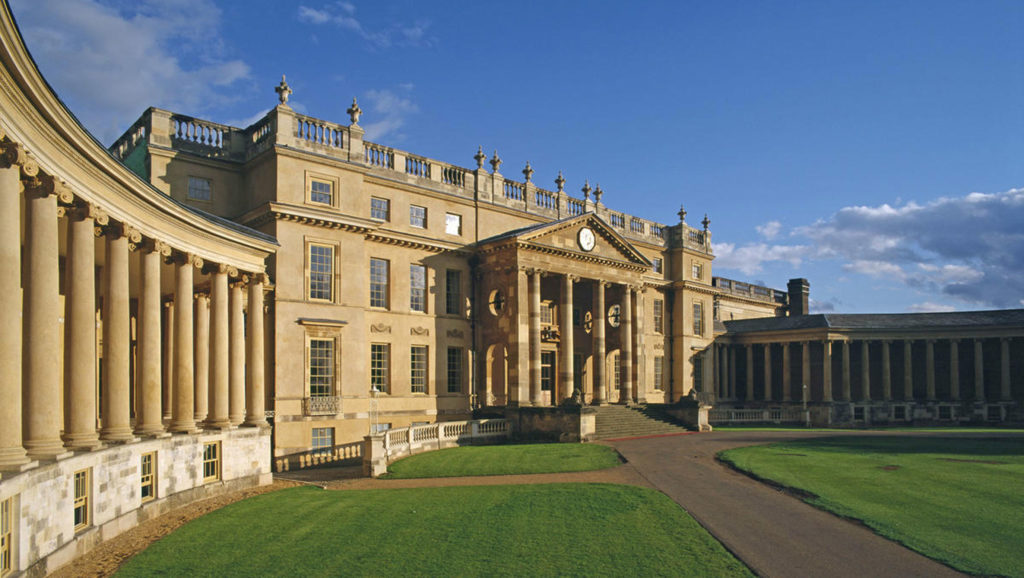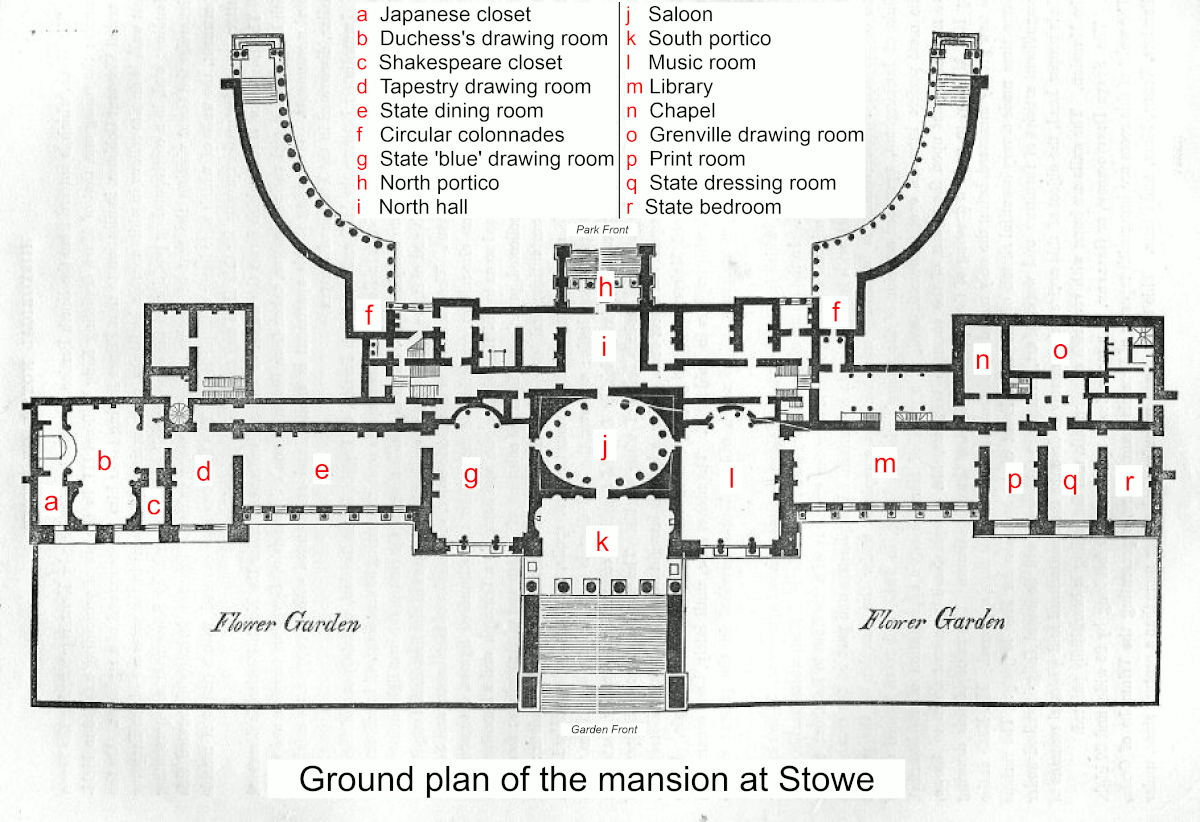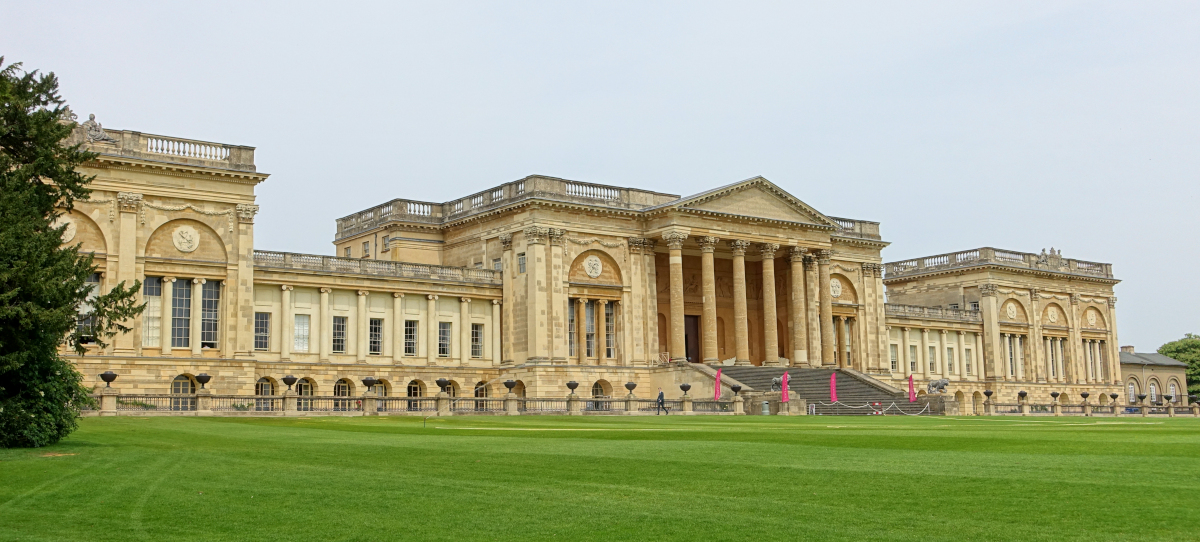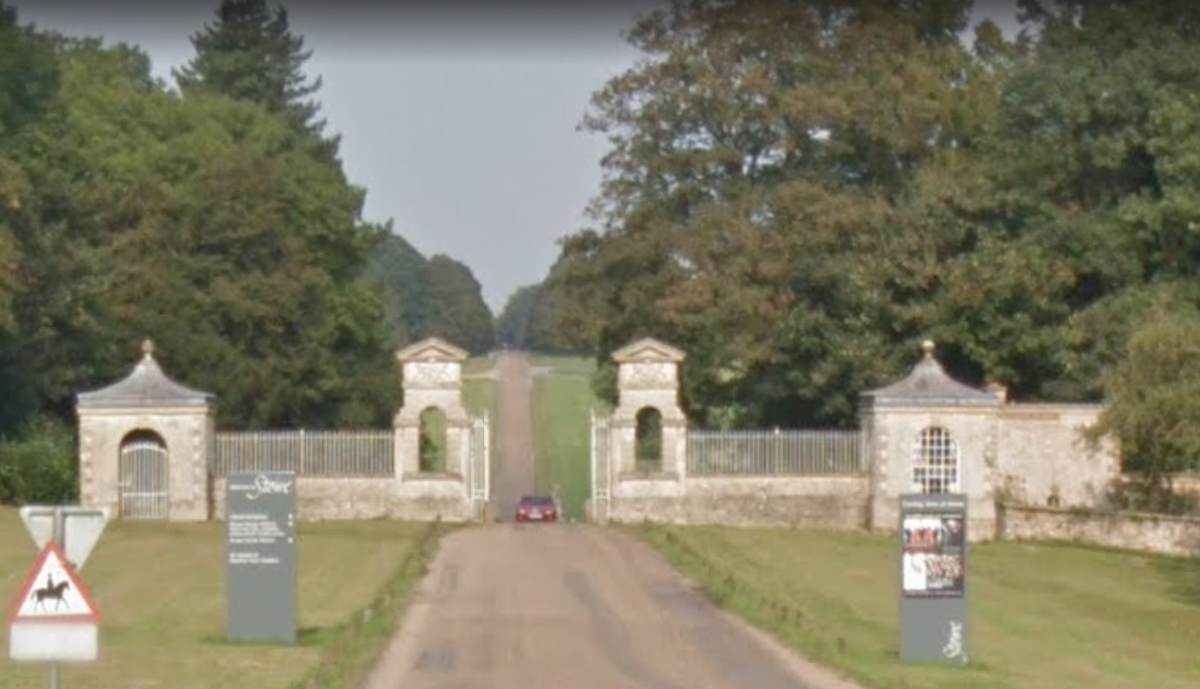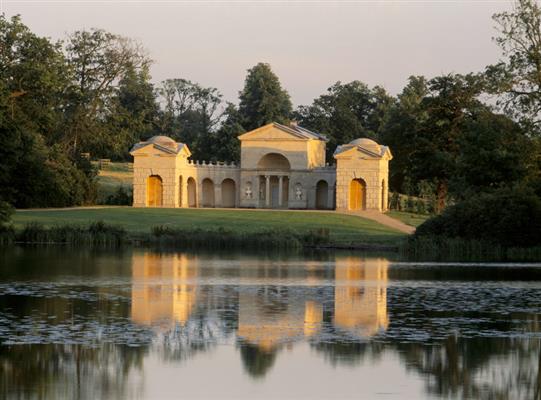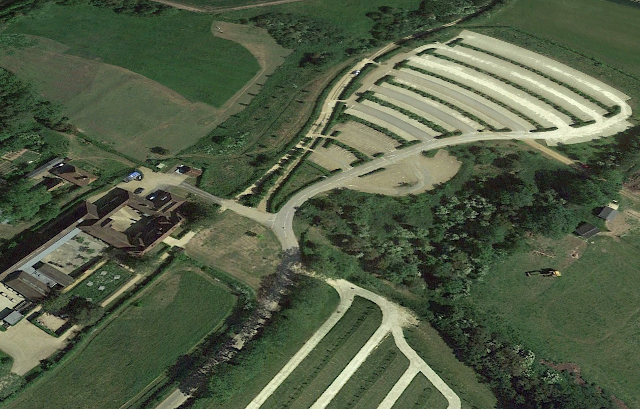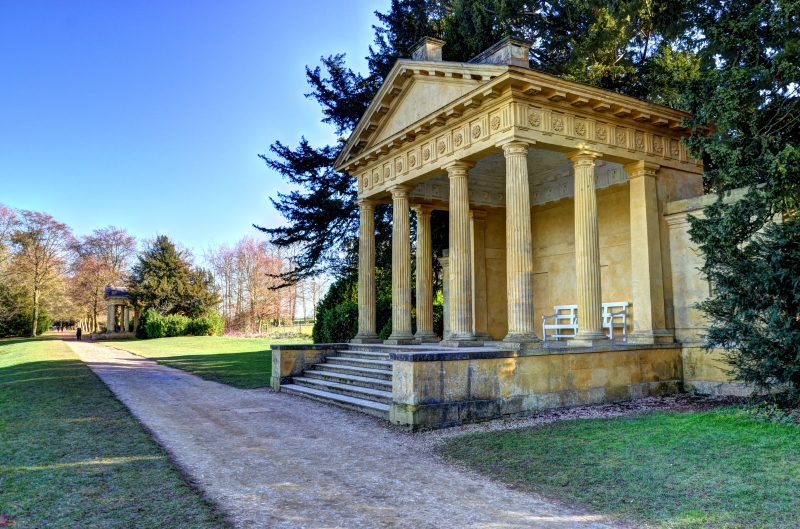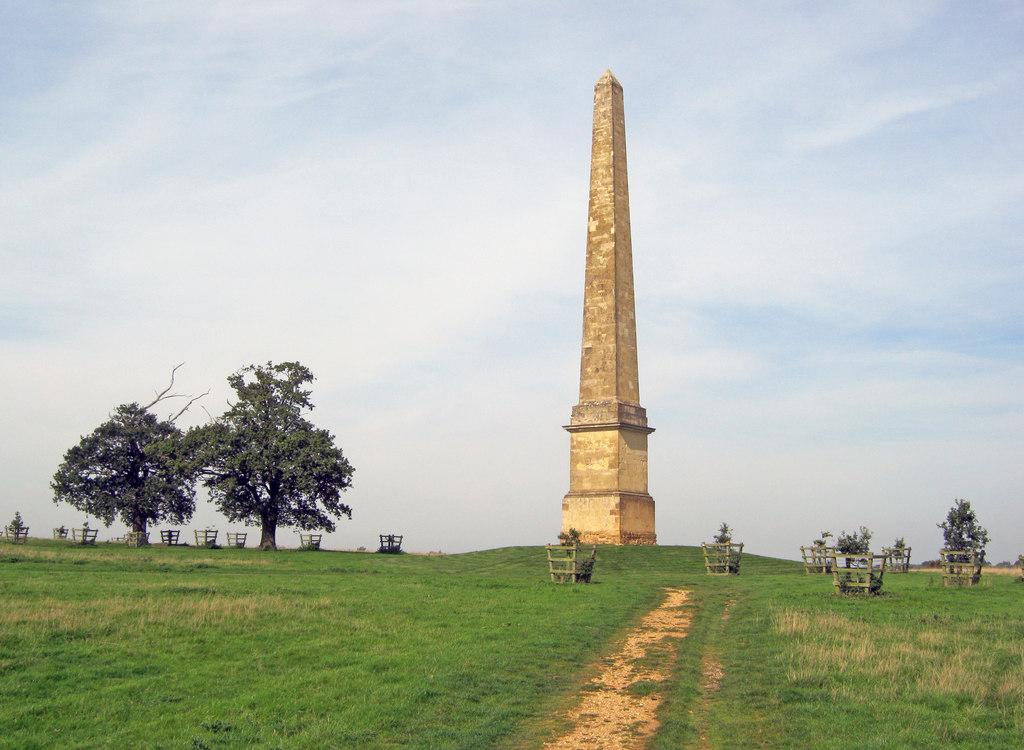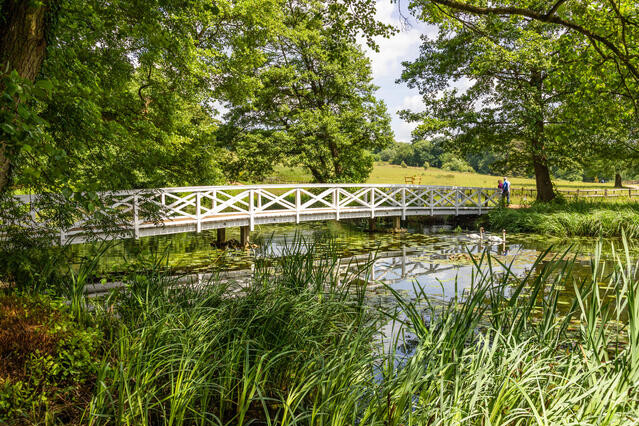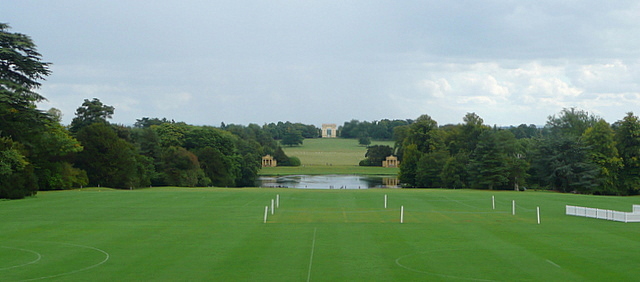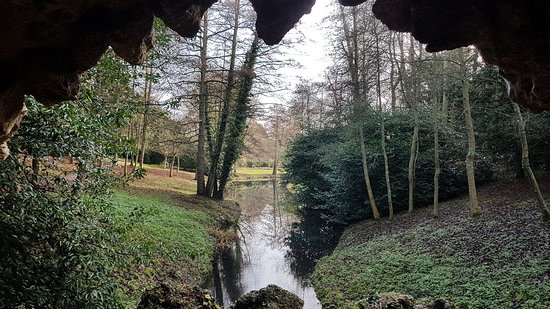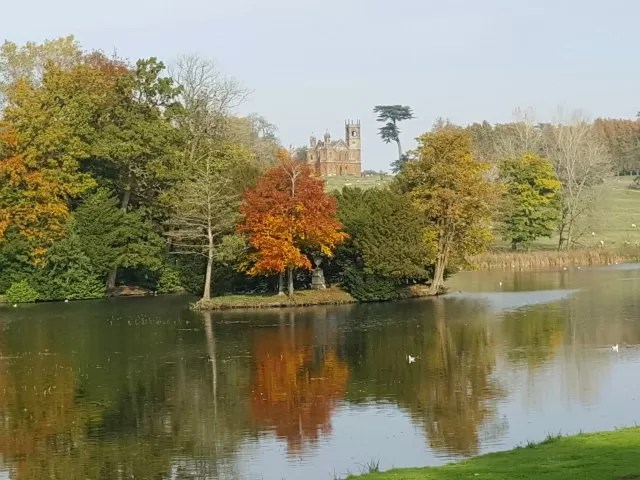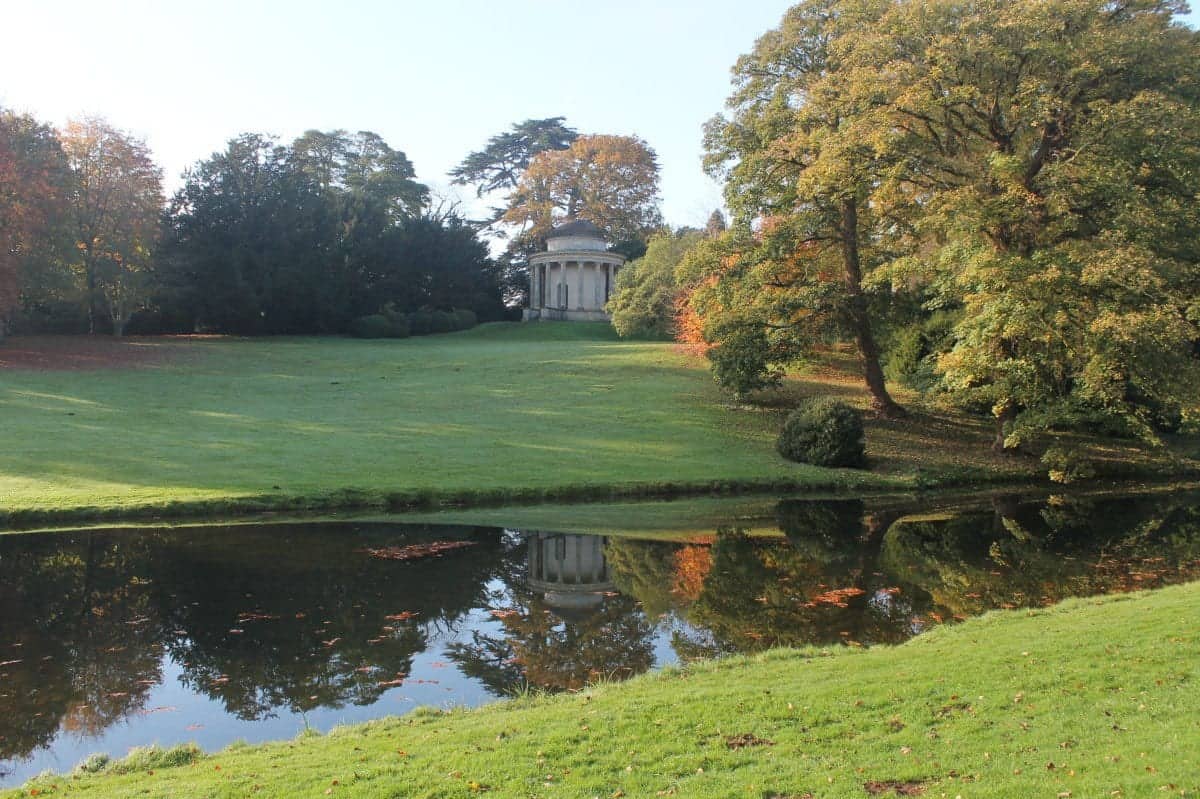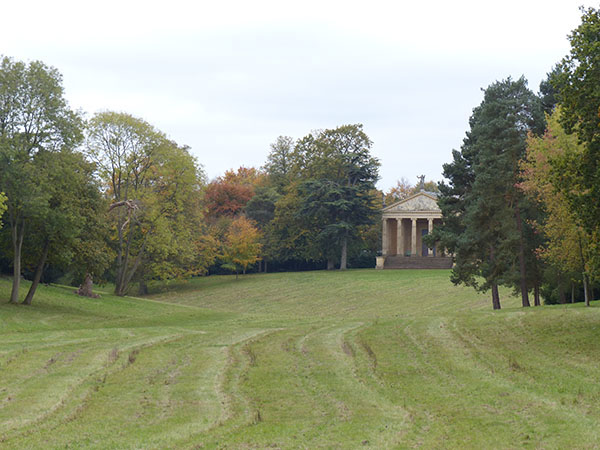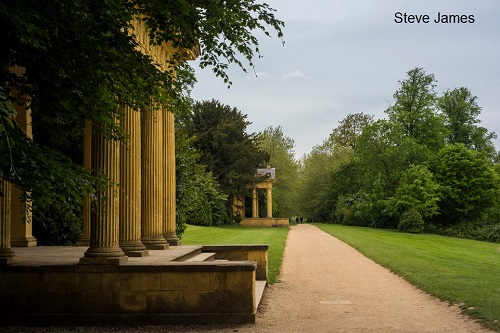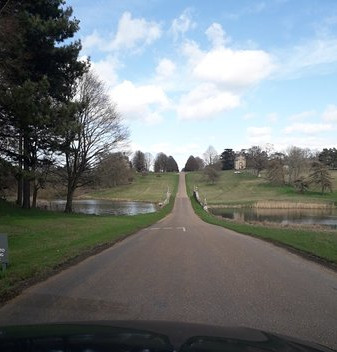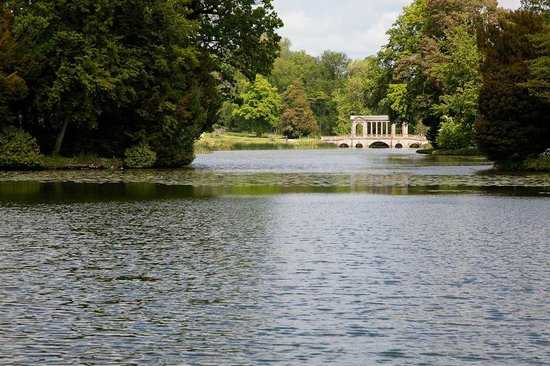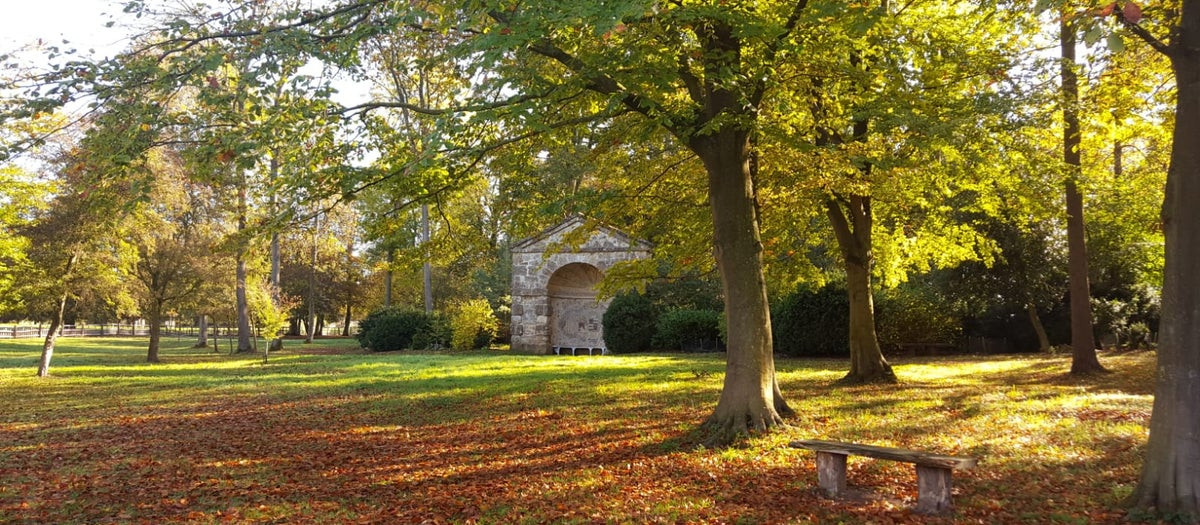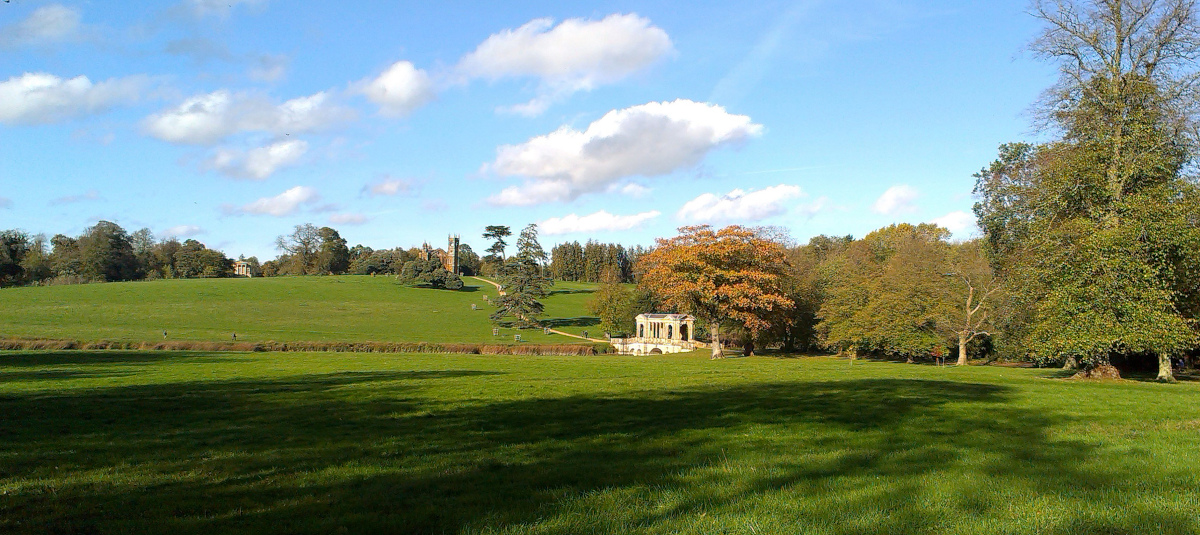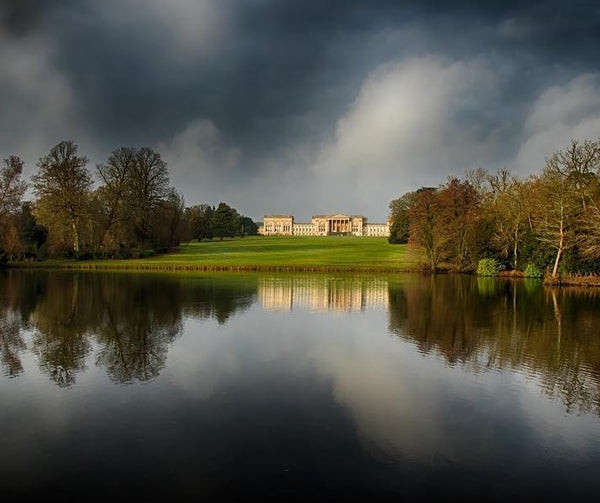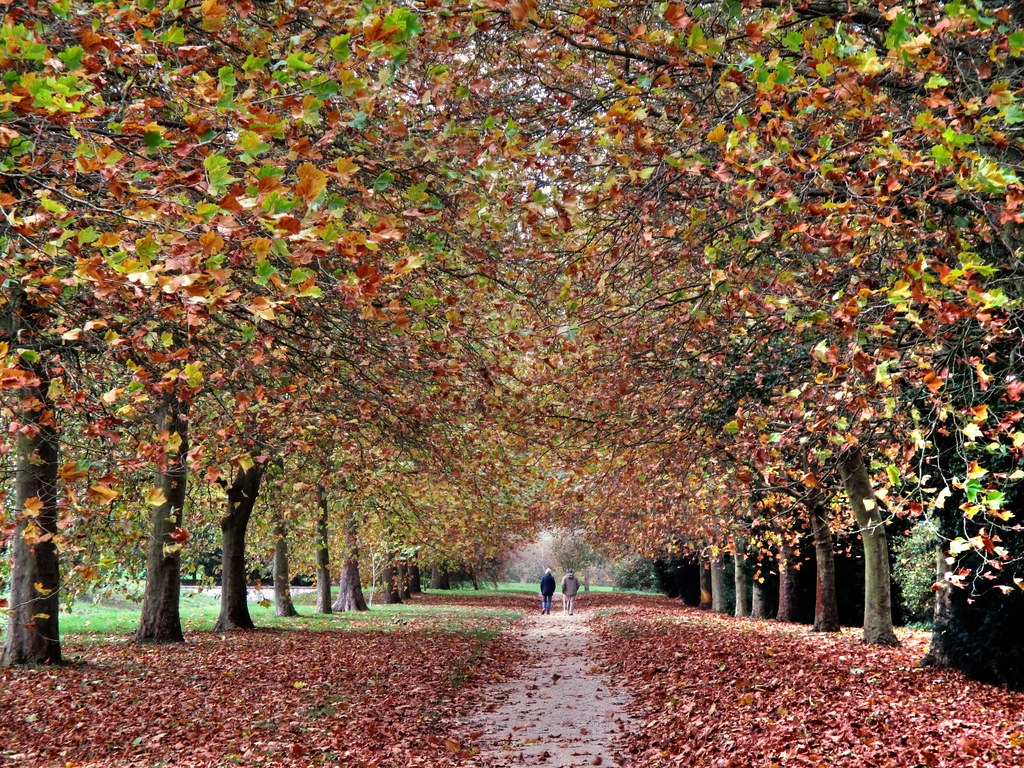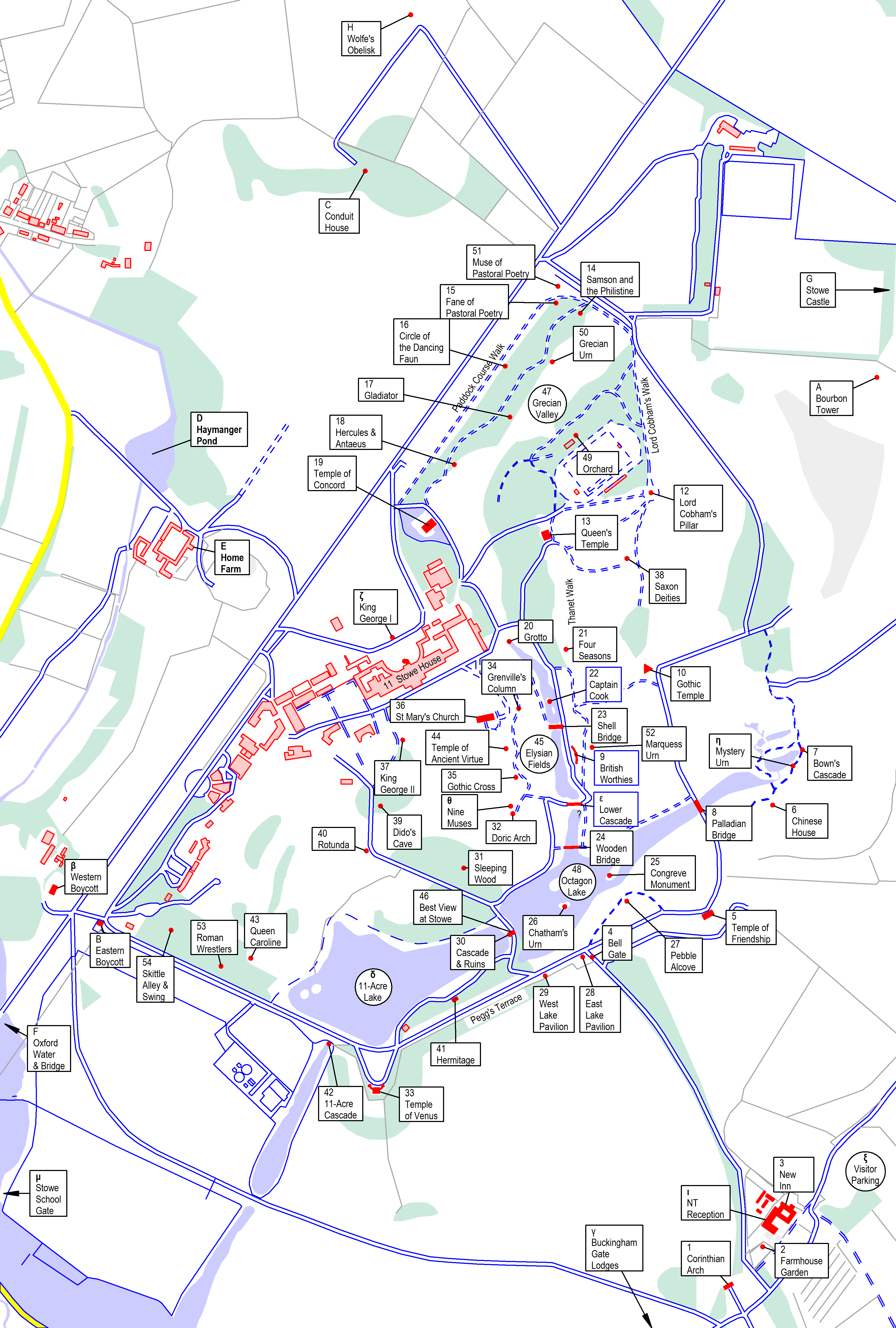
| Stowe History | ||||||||||||||||
| There was a mediaeval settlement clustered around St Mary's Church and, from 1330, Osney Abbey maintained a manor house at Stowe occupied by a steward. In the Dissolution of the Monasteries in 1539, Stowe was surrendered to the Crown. At some stage, Stowe was bought and owned by Sir George Gifford MP and he willed it to his son Thomas Gifford who took over in 1593. Peter Temple leased the estate from the Giffords from 1571. John Temple was the first Temple owner of the estate as he bought it in 1589. The Temple family had made their money sheep farming near Witney. Sir Richard Temple inherited the estate from his father and he completely rebuilt the house starting in 1683. Stowe House Development Between 1677 and 1683, William Cleare was commissioned by Sir Richard Temple to build the central block of the house although only about 1⁄3rd of the house we see today. 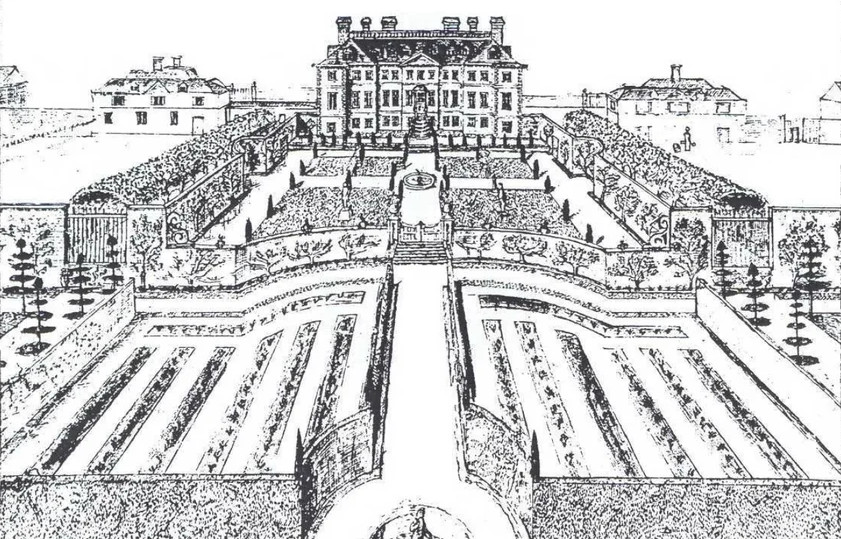 In 1713, Sir Richard became Baron Cobham and in 1717 he was made Viscount Cobham. From the 1720s to 1733, Viscount Cobham added to the house. Vanburgh added the Ionic North Portico and he rebuilt the North, East and West fronts. After he died in 1726, William Kent continued the work. From the 1740s to 1760, Viscount Cobham carried out the expansion of the Eastern and Western State apartments. From 1770 to 1779, Earl Temple obtained a first design from Jacques-François Blondel for a new South Front - but he didn't really like it. So he commissioned Robert Adam to design a new scheme and this was made more uniform by Thomas Pitt and Giovanni Battista Borra. It was finished in 1779 although work on the interiors, by Vincenzo Valdrè, was not finished until 1788. At the same time, the two colonnades, by Robert Adam, were added to the North Front. The Northern ends of the colonnades are linked to screen walls containing gateways by William Kent although these were later heightened by Giacomo Leoni House designers
Stowe Garden Development In the 1690s, Stowe had a modest parterre garden. He was notable for the use of canalised water at Stowe. In 1731, William Kent was appointed to work with Charles Bridgeman and continued after him. He and Gibbs built temples, bridges and other garden structured creating a less formal style. Kent's masterpiece is the Elysian Fields. In March 1741, Lancelot 'Capability' Brown was appointed head gardener and he lived in the East Boycott Pavilion for 10 years - he left in 1751. At that time, Bridgeman's pond and 11-acre lake were extended and given a more 'naturalistic' shape. The Palladian Bridge (probably by Gibbs) was added in 1744 and Brown set out the Grecian Valley. Brown also developed Hawkwell Field with Gibb's most notable building, the Gothic Temple. From the 1740s to the 1760s, Richard Woodward became garden designer after Brown left and he completed the 'naturalisation' of the gardens by the mid-1750s. The next owner of Stowe, the Marquess of Buckingham, made relatively few changes to the gardens. He employed Vincenzo Valdrè to build the Menagerie, the Buckingham lodges and the Queen's Temple. Garden designers
In the 19th century, the 1st and 2nd Dukes of Buckingham and Chandos who bought the Lamport Estate to form the Lamport Gardens. In 1848, the 2nd Duke was forced to sell the house to pay off debts. In 1862, the 3rd Duke returned to Stowe and began to repair several areas of the gardens but this renovation didn't last. The third Duke died in 1889 and the estate passed to his daughter Lady Kinloss. She had little use for the house and was going to pass it to her son but he was killed in the first war so the house put on the market. The remaining estate was sold in 1921 to Harry Shaw for £50,000 and 1922 saw further sales of contents (including fireplaces). In 1923, it was bought by the governors of what was to become Stowe School. Stowe School restored the Queen's Temple, the Temple of Venus, the Corinthian Arch and the Rotunda. Stowe avenue was replanted in 1960. In the 1960s, significant repairs were made to the Lake Pavilions, and Pebble Alcove along with repairs to 2⁄3rds of the buildings and the reclamation of six of the lakes. In 1965, John Workman was invited to compile a restoration plan and, in 1967, 221 acres were covenanted to the National Trust which bought Oxford Avenue (its first purchase of land to enhance a site it didn't own). | ||||||||||||||||
| Stowe House Preservation Trust | ||||||||||||||||
| The Preservation Trust for the house was set up in 1997 and has, so far, spent over £23million on restoration. | ||||||||||||||||
| Stowe Gardens - National Trust | ||||||||||||||||
| Stowe Landscape Gardens was formerly gifted to the National Trust in 1989 and they have undertaken an ambitious programme of restoration which includes repair, 'putting back' the grounds as they were designed and adding back some new or lost features and sculptures. |
Indices Map
Ancient Virtue, Temple of
Indices MapBell Gate
Indices Map
Best View at Stowe
Indices MapBourbon Tower
Indices MapBoycott Pavilion East
Indices MapBoycott Pavilion West
Indices MapBritish Worthies, Temple of
Sir Isaac Newton, Sir Walter Raleigh, John Locke, John Hampden, Sir Francis Drake, King William III, Queen Elizabeth I, The Black Prince, King Alfred, Sir Francis Bacon, William Shakespeare, John Milton, Alexander Pope, Sir Thomas Gresham, Inigo Jones, Sir John Barnard
Brown's Cascade
Indices MapBuckingham Gate Lodges
A view from the Buckingham Lodges looking towards Stowe
Captain Cook's Monument
Indices MapCaptain Grenville's Column
Indices MapChinese House
Indices MapCircle of the Dancing Faun
Indices MapConcord and Victory
Indices MapConduit House
Indices MapCongreve Monument
Corinthian Arch
At the top of the hill at the north end of the Grand Avenue approach to Stowe from Buckingham, The Corinthian Arch was built in 1767 to provide the main entrance to the house and the estate, and to convince visitors they were entering one of the very best of such estates. The south front of Stowe house is visible through the arch
A view of the arch built in 1767 by the Lord Camelford, Thomas Pitt
Dido's Cave
Indices MapDoric Arch
Indices MapEastern Lake Pavilion
Indices MapEleven Acre Cascade
Indices MapEleven Acre Lake
Indices MapElysian Fields
Indices MapFane of Pastoral Poetry
Indices MapFarmhouse Garden
Indices Map
Four Seasons Fountain
Indices MapFriendship, Temple of
Indices MapGladiator
Indices MapGothic Cross
Indices MapGothic Temple
Indices MapGrecian Urn
Indices MapGrecian Valley
Indices MapGrotto
Indices MapHaymanger Pond
Indices MapHercules and Antaeus
Indices MapHermitage
Indices MapHome Farm
Indices MapKing George I, Statue of
Indices MapKing George II, Statue of
Indices MapLord Cobham's Pillar
Indices MapLord Chatham's Urn
Lower Cascade
Indices MapMarquess Urn
Indices MapMuse of Pastoral Poetry
Indices MapMystery Urn
Indices MapNational Trust Reception Centre Indices Map
New Inn
Indices Map
Nine Muses
The nine muses are new statues commissioned by the National Trust.
They are Clio - the muse of history, Thalia - the muse of comedy, Terpsichore - the muse of dance, Polyhymnia - the muse of hymns, Ourania - the muse of astronomy, Erato - the muse of love poetry, Melpomene - the muse of tragedy, Euterpe - the muse of music and Calliope - the muse of epic poetry.
Octagon Lake
Looking across towards Chatham's Urn, the Gothic temple and the Cobham Pillar behind the tree.
Indices MapOrchard
Indices MapOxford Water and Bridge
Indices MapPalladian Bridge
Indices MapPebble Alcove
Indices MapRoman Wrestlers
Indices MapQueen Caroline
Indices MapQueen's Temple
Indices MapRotunda
Indices MapRuin on a Cascade
Indices MapSamson and the Philistine
Indices MapSaxon Deities
Six of he statues at Stowe are replicas of the originals (commissioned in 1727) which were sold in 1921. The seventh, Thunor, is in the V&A and it is hoped that it can be replicated soon.
Shell Bridge
Indices MapSkittle Alley and Swing
Indices MapSleeping Wood
Conceived as a peaceful place to sit and contemplate
Indices MapSt Mary's Church
Indices MapStowe Castle
Indices MapStowe House Aerial
Indices Map
Stowe House North (Park) Front
The North Front of Stowe House - much enlarged by Richard Grenville, Earl Temple from the original designed by Sir Richard Temple and built by William Cleare in 1676
Indices MapStowe House Plan
Indices Map
Stowe House South (Garden) Front
Indices Map
Stowe School Gate
Indices Map
Venus, Temple of
Indices MapVisitor Parking Indices Map
Western Lake Pavilion
Indices MapWolfe's Obelisk
Indices MapWooden Bridge
Indices MapColonade
A view looking North West from the East Colonade past the statue of King George I.
Indices MapCorinthian Arch
A view looking towards the Corinthian Arch from the South Portico.
Indices MapFrom Grotto
A view from the Grotto looking South West down the Elysian Fields.
Indices MapGothic Temple
A view looking over part of the Octagon lake up to the Gothic Temple.
Indices MapElysian Fields
A view looking over the Elysian Fields to the Temple of Ancient Virtue.
Indices MapGrecian Valley
A view looking West down the Grecian Valley towards the Temple of Concord and Victory.
Indices MapLake Pavilions
A view past the Lake Pavilions along Higgs Terrace.
Indices MapOxford Water
A view into the main gates, down to the Oxford Bridge and up to the Boycott Pavilions.
Indices MapPalladian Bridge
A view looking East over the Octagon Lake towards the Palladian Bridge.
Indices MapPebble Alcove
A view of Pebble Alcove.
Indices MapQueen's Temple
A view looking over part of the Octagon Lake near the Palladian Bridge, up past the Gothic Temple to the Queen's Temple.
Indices MapSouth Front
A menacing view of the South Front in a storm.
Indices MapWoodland Walk
Pegg's Terrace
Indices MapOrange walk - Path of Vice
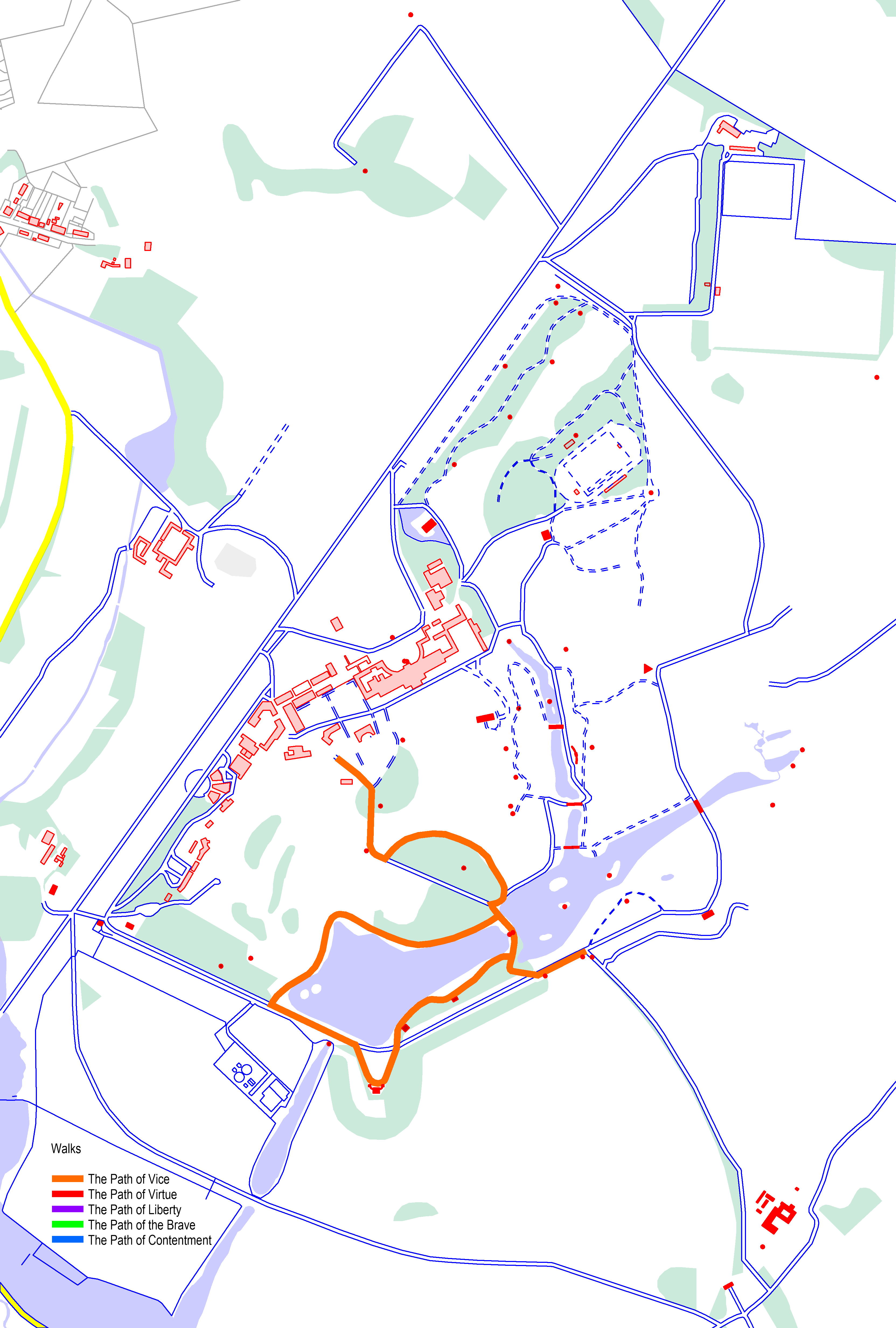
Indices Map
Red walk - Path of Virtue
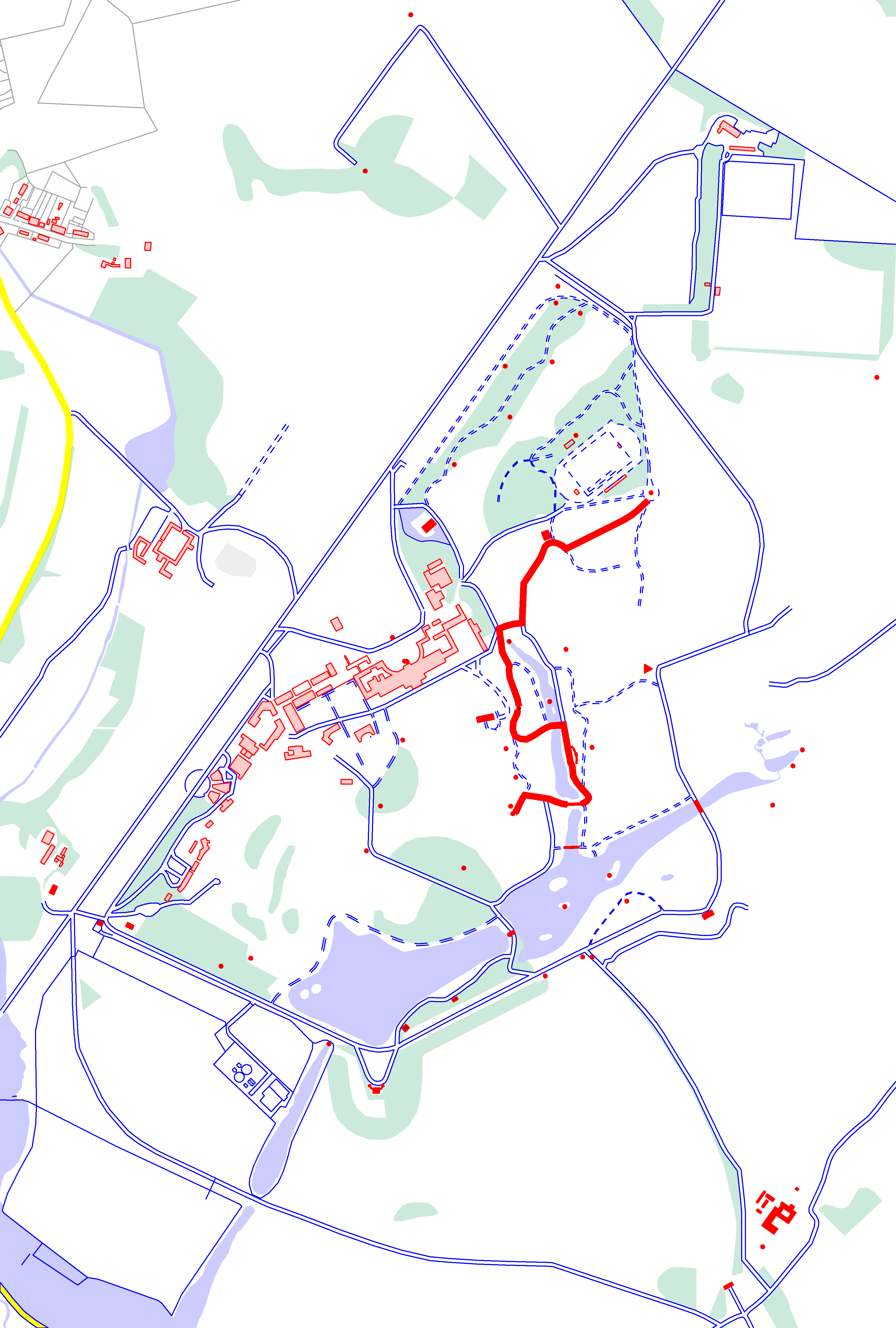
Indices Map
Purple walk - Path of Liberty
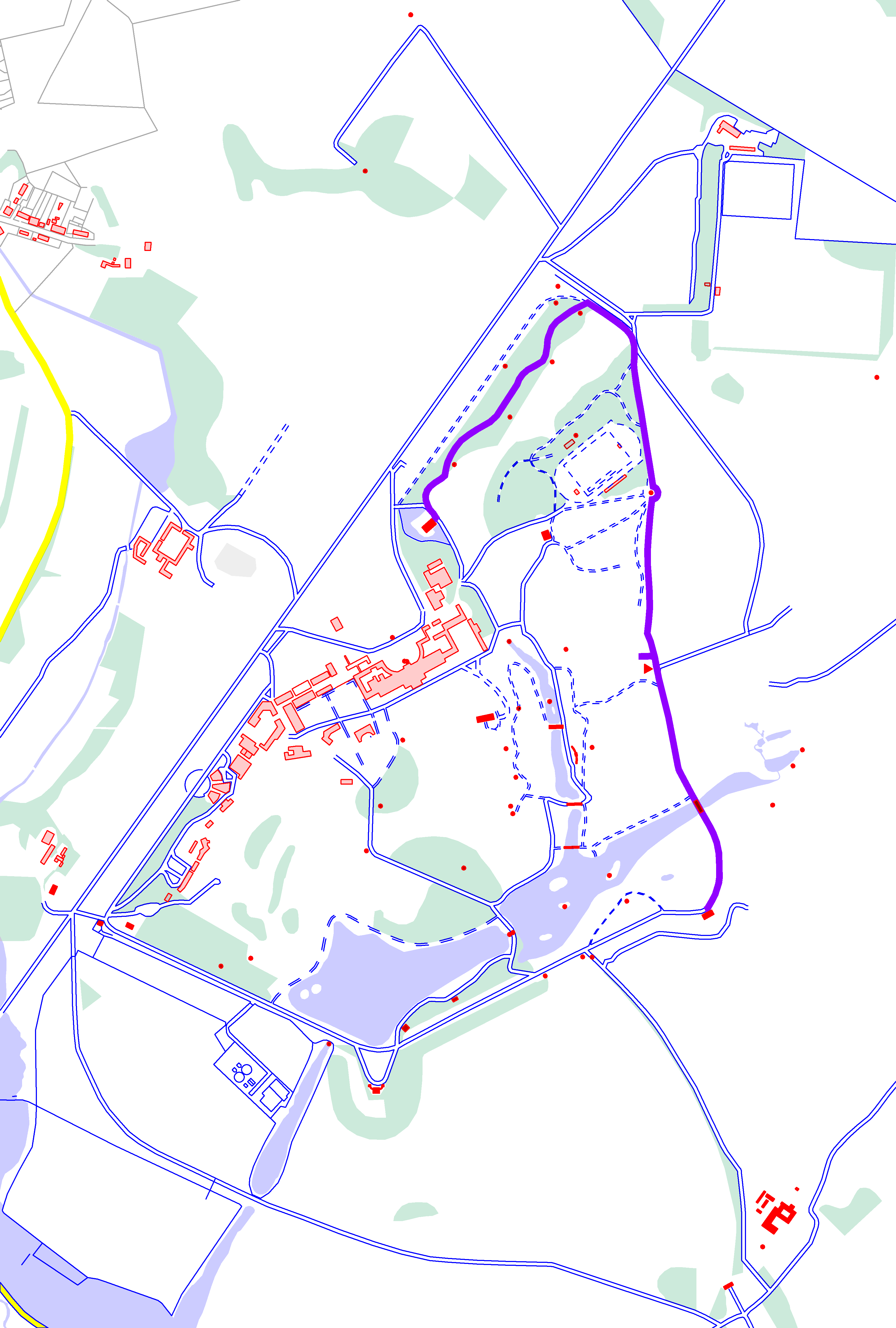
Indices Map
Green walk - Path of the Brave
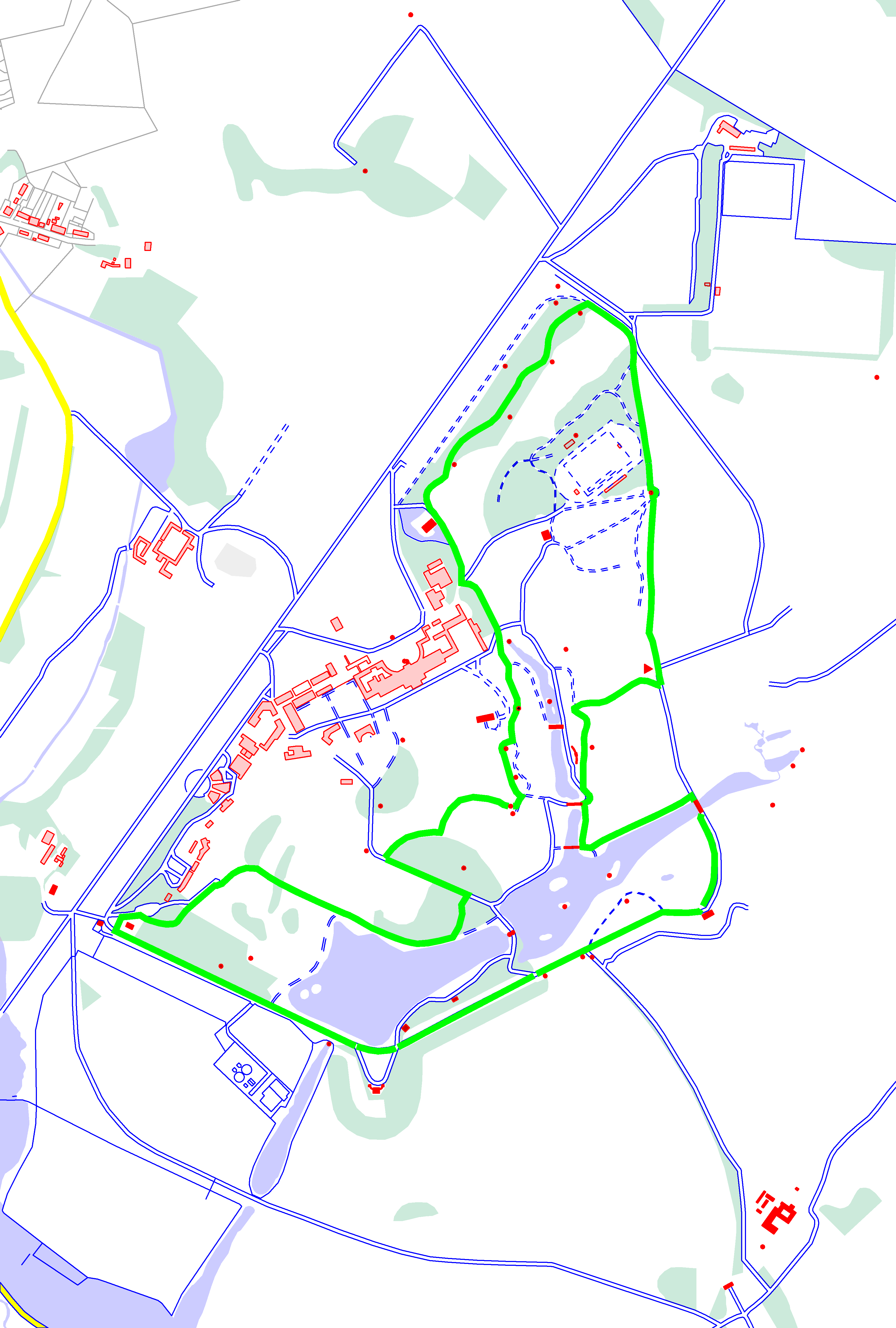
Indices Map
Blue walk - Path of Contentment
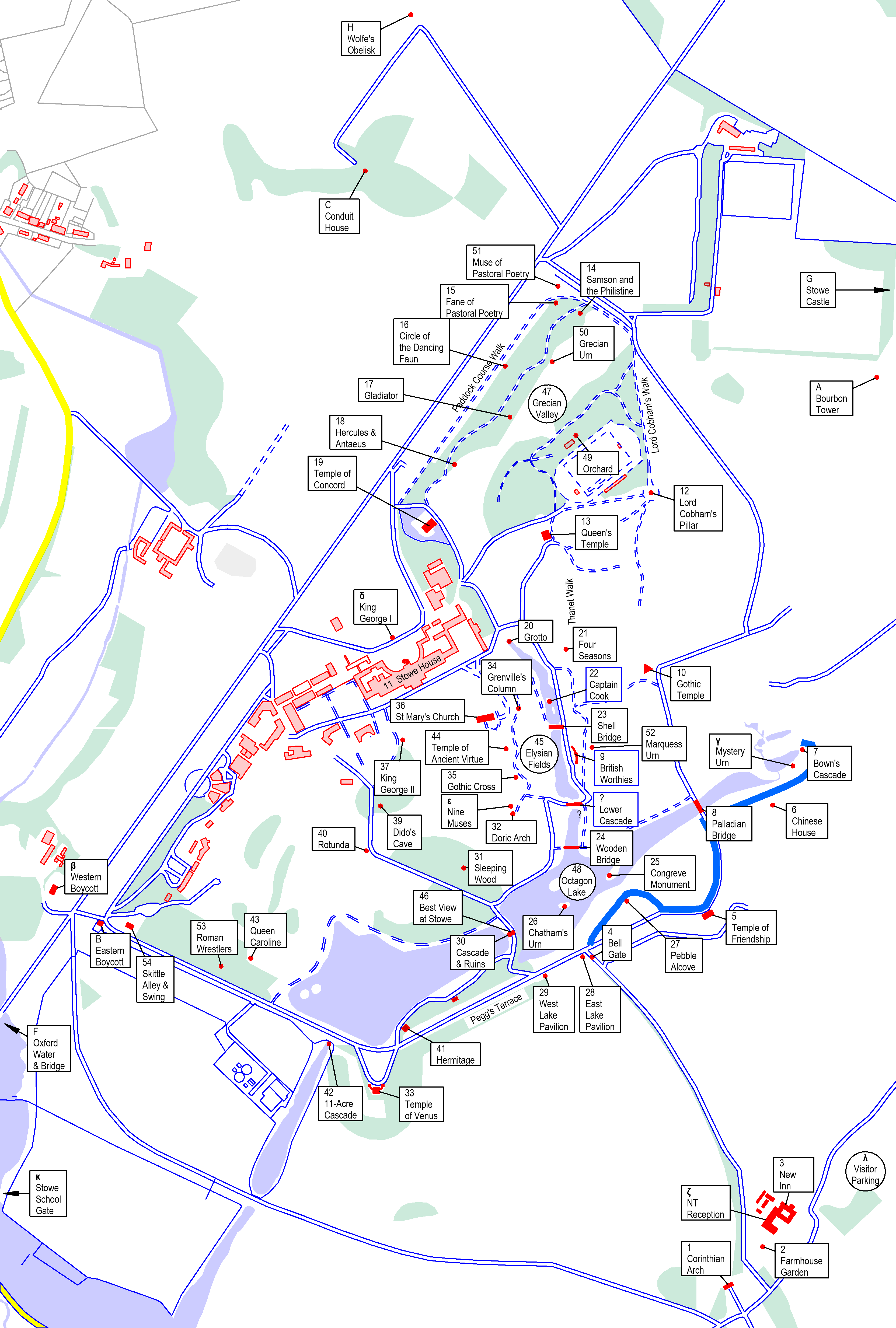
Indices Map
Art and Architecture Walk
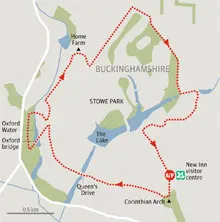
Deer Park Walk
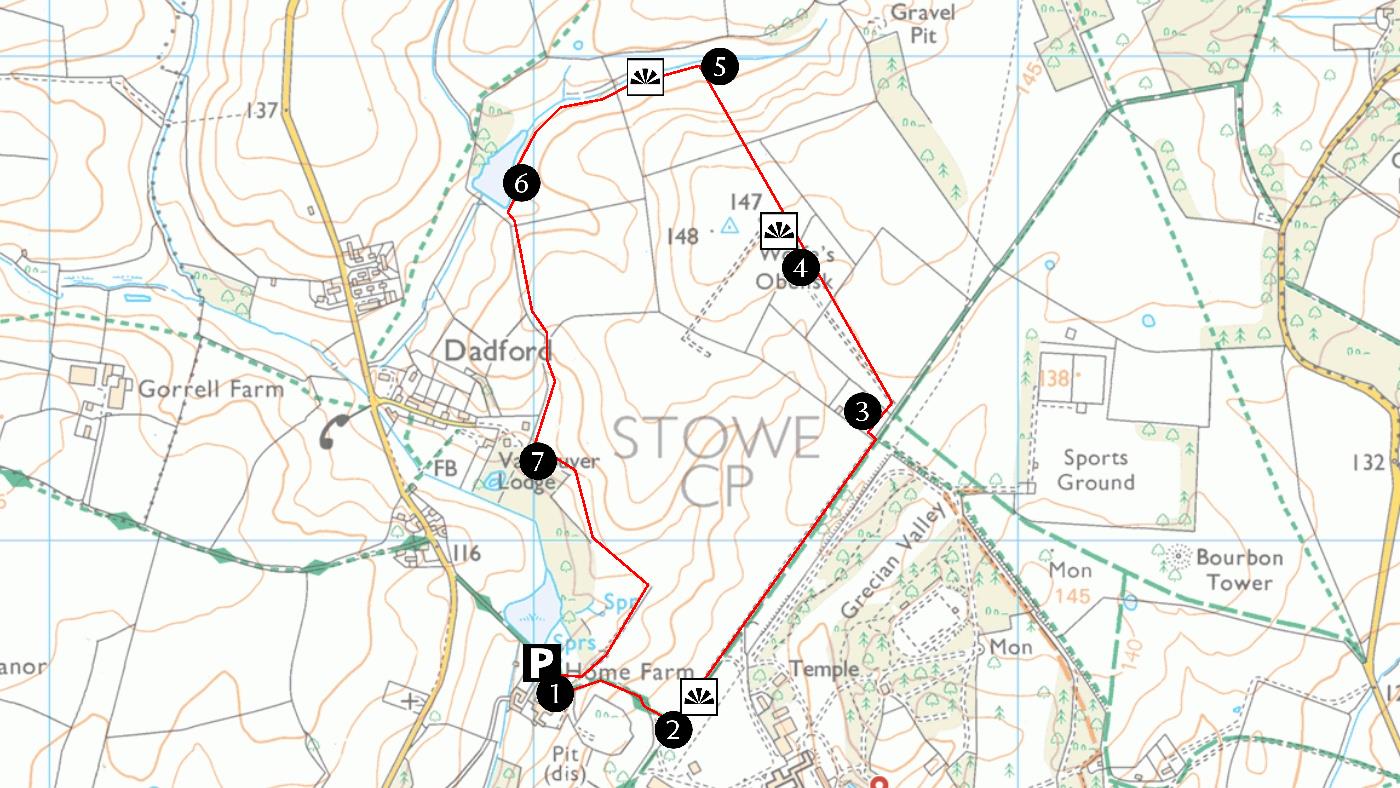
Gardens Walk
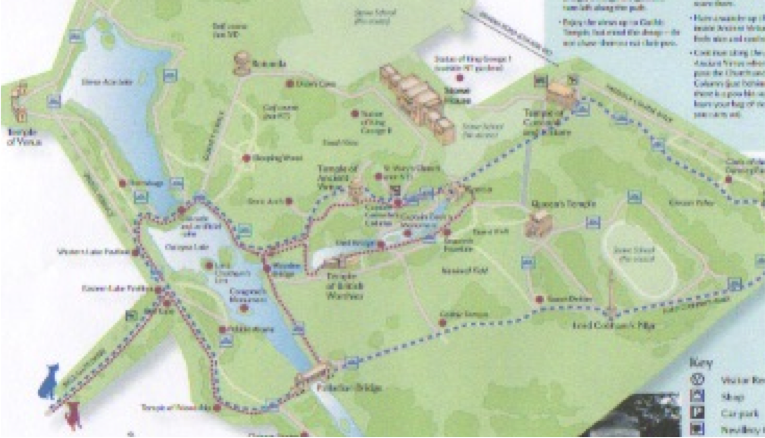
Secret Walk
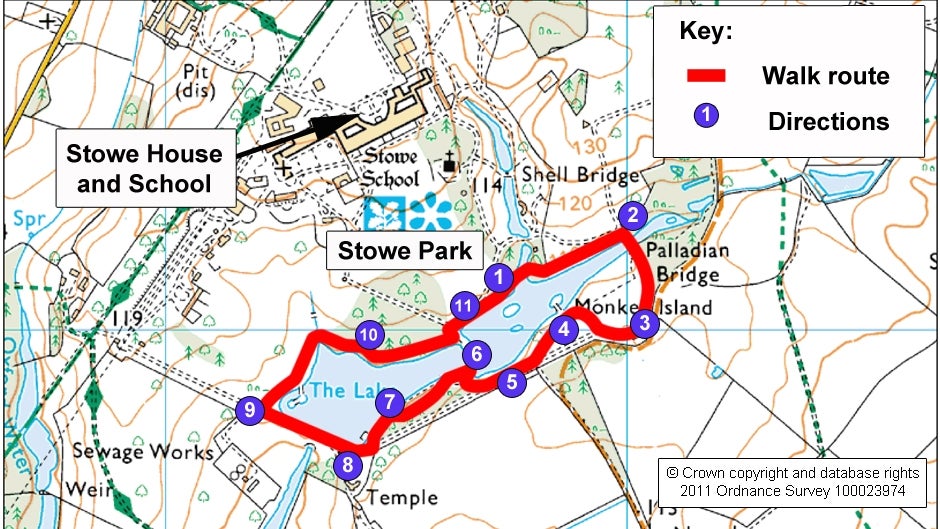
Indices Map
Old Elevations
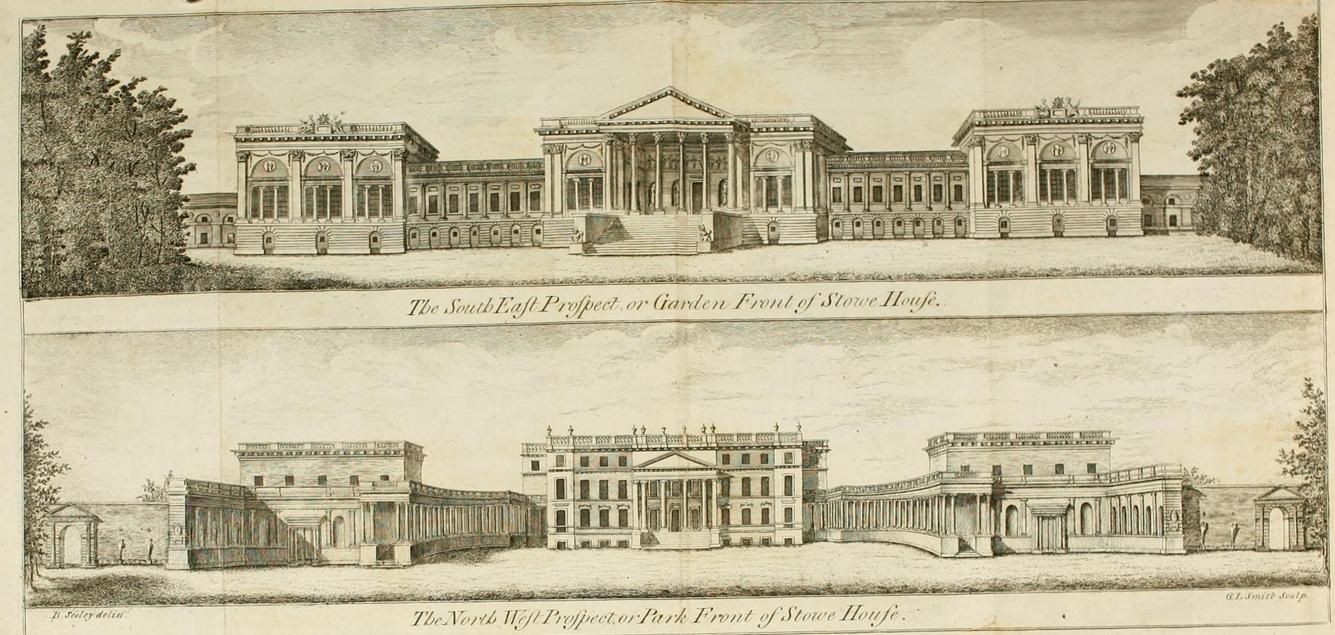
Old North Front
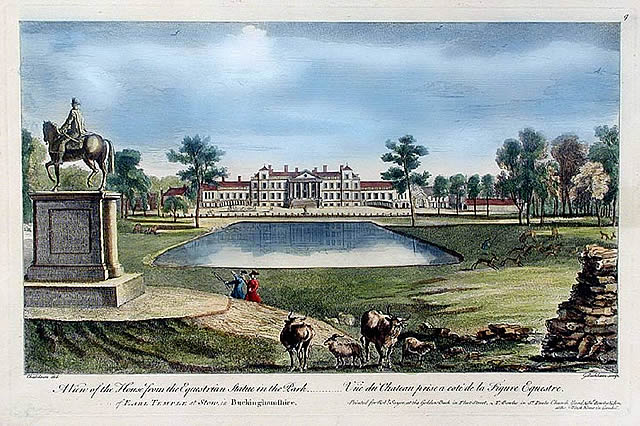
Note there is a lake on the North Front.
Indices MapOld Plan
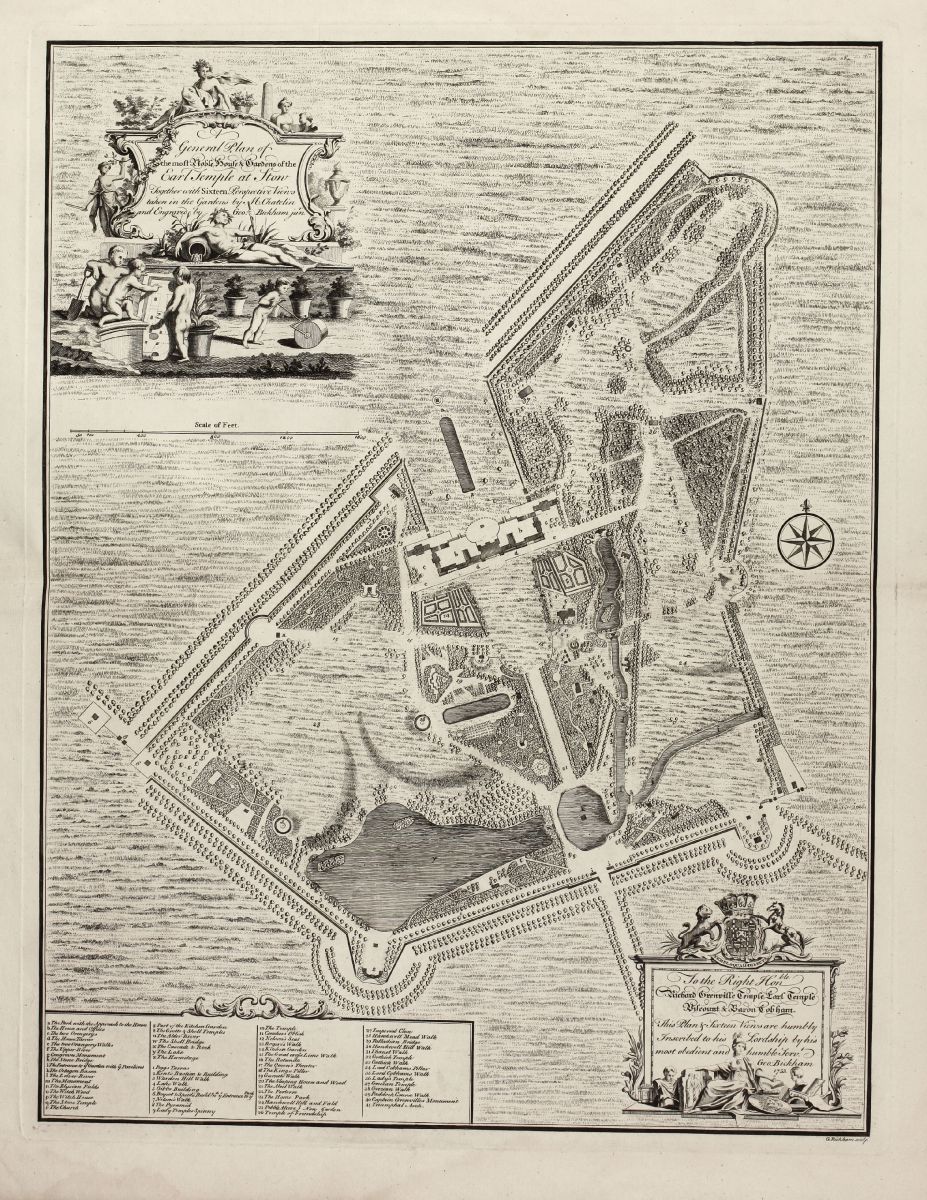
Note the Octagon lake is a more formal shape and there is an obelisk in the middle of it.
Indices MapMatching view
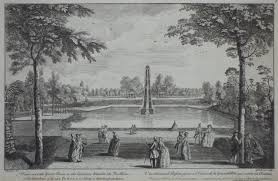
Old Map - 1900
